
- 2 Weeks for Couple
- 2 Weeks for Family
- Thailand Lantern Festival
- Indonesia(Bali)
- South Korea
- China (HK, Taiwan)
- Itinerary Ideas
- Asia Highlights Travel Reviews
- Thailand Travel Reviews
- Vietnam Travel Reviews
- Cambodia Travel Reviews
- Japan Travel Reviews
- Myanmar Travel Reviews
- China Travel Reviews


Asia Visas, Southeast Asia Visas
Most travelers include more than one country when touring Asia, especially Southeast Asia. Some popular routes are China–Japan, China–Thailand, Thailand–Vietnam–Cambodia, India–Bhutan–Nepal, and Singapore–Indonesia (Bali).
If you are confused about the visa requirements of different countries in Asia, here you can get all the information you need regarding tourist visa requirements and restrictions for specific countries .
We have listed the information for 19 countries . Most countries allow easy visa-free entry or visa-upon-arrival for stays ranging from 2 weeks to 3 months for certain nationalities.
Click the country name below to navigate to your destination of choice or read them one by one.
Tourist Visa Guide to Some Popular Destinations in Asia
If you come from USA, Canda, UK, Australia, New Zealand, or Switzerland
If you come from Demark, Finland, France, Germany, Italy, Norway, Russia, Spain, or Sweden
Discover real reviews of Highlights Travel Family 's best-rated service across trusted platforms.
Thailand Visa Requirements
Citizens of 51 nations (including the USA , UK , Australia , New Zealand , Canada , and most EU nations ) are eligible for 30-day visa-free entry on arrival in Thailand by air or land.
Staying longer in Thailand : If you wish to stay longer in Thailand, you can get a 60-day tourist visa before you travel: the cost is about US$40. You need to apply for it in person at a Thai embassy before you travel.
Passport holders from countries that are not eligible for the visa-exemption scheme may apply for a Thai visa by one of the ways below:
- Obtain a Visa on Arrival (VOA)
- Apply for an E-Visa online
- Apply for a Thai visa via a Thai embassy/consulate
Vietnam Visa Requirements
Holders of normal passports issued by the following countries do not require a visa to visit Vietnam:
- Europe : United Kingdom, Germany, France, Spain, Italy, Belarus, Denmark, Finland, Norway, Russia, Sweden
- South and Middle America : Chile, Panama
- Asia : Japan, South Korea, Cambodia, Indonesia, Laos, Malaysia, Myanmar, Singapore, Thailand, Kyrgyzstan, Philippines, Brunei
All travelers can visit Phu Quoc visa free for up to 30 days.
Starting from August 15, 2023, Vietnam e-visas are issued to citizens of all countries and territories, and they are issued for multiple entries for up to 90 days . You can now apply for the e-visa online . The e-visa fee is approximately 25 USD, and your application will usually be processed within 3 working days. Applying for an e-visa is efficient and convenient.
Cambodia Visa Requirements
Passport holders from the following countries do not require a visa to visit Cambodia:
- Indonesia, Laos, Malaysia, Singapore, and Vietnam (30 days)
- Philippines (21 days)
- Thailand (14 days)
If your country is not in the list above, you can apply for a visa on arrival or an e-visa.
A visa on arrival or a VOA is valid for 30 days and costs US$30 .
If you are eligible, you can apply for an e-visa at the cost of US$37. The processing time is 1–3 days.
Laos Visa Requirements
Passport holders from the countries listed below enjoy visa exemption for up to 30 days or could apply for an e-visa for a longer stay.
- 30 days visa-free: Cambodia, Indonesia, Malaysia, Mongolia, Philippines, Russia, Singapore, South Korea, Thailand, Vietnam
- 15 days visa-free or 30-day e-visa: Japan, Luxembourg, Switzerland
- 14 days visa-free or 30-day e-visa: Brunei, Myanmar
If your country is not in the list above, you can apply for a visa-on-arrival or an e-visa, excepting passport holders from the following countries, who need to apply for a visa in advance and cannot apply for an e-Visa :
- Afghanistan, Algeria
- Bangladesh, Burundi
- Cameroon, Congo
- Ghana, Guinea-Bissau
- Ivory Coast, Iran, Iraq
- Lebanon, Lesotho, Liberia, Libya
- Nauru, Niger, Nigeria
- Senegal, Sierra Leone, South Sudan, Sudan, Suriname, Syria
- Zambia, Zimbabwe
Myanmar Visa Requirements
Passport holders from Brunei , Cambodia , Indonesia , Laos , Philippines , Vietnam and Thailand are given visa exemption for 14 days but are only permitted to enter via Yangon International Airport, Naypyidaw International Airport, and Mandalay International Airport.
Passport holders from Singapore are given visa exemption for 30 days when entering and exiting via the three aforementioned international airports.
If your country is not one of those above , you need to apply for a Myanmar visa before arrival . The easiest way to get a Myanmar visa is via the online e-visa system .
Philippines Visa Requirements
Citizens of most nationalities do not need a visa to enter the Philippines, and this is inclusive of all citizens of EU countries , the US , Australia , Russia , and South American countries .
The visa-free period is 30 days. You can also get a tourist visa for US$30 for a stay of up to 59 days from the Philippines embassy before traveling.
Singapore Visa Requirements
Visitors from most countries can enter Singapore without a visa and are granted 30–90 days visa-free entry , depending on their nationality.
All EU citizens as well as those from the US , Australia , Norway , South Korea , and Switzerland are eligible.
Malaysia Visa Requirements
Visitors from most European countries ( all European Union citizens, the UK... ), North America ( Canada, USA, Mexico... ), South Africa , Australia , United Arab Emirates , etc. are not required to obtain a visa to visit Malaysia and can stay for a maximum of 90 days.
Send a free inquiry to check if you're visa exempt for Malaysia.
Further reading: How to Plan a Trip to Thailand, Malaysia, and Singapore >>>
Indonesia Visa Requirements
All EU citizens , US citizens , and citizens of most other nations can visit Indonesia without a visa for up to 30 days.
No extensions are allowed on visa-exempt entry. If you wish to stay longer in Indonesia, you can get a visa on arrival at the cost of US$35 for 30 days, which can be extended.
Japan Visa Requirements
Japan has restored the visa-waiver system from October 11th, 2022 . Citizens of 68 countries, including USA , Canada , Australia , UK , New Zealand , Singapore , South Korea , and almost all European nations , will be automatically issued a tanki-taizai ('temporary visitor visa') on arrival. Typically, this visa is good for 90 days.
If your country is not in the list of Exemption of Japan Visa , you will need a visa in order to visit Japan. Read more on Japanese Visa Exemption and How to Apply.
Feel free to contact us to plan your dream travel.
China Visa Requirements
Before COVID-19 :
- Passport holders from Singapore, Brunei, or Japan were allowed to enter China for up to 15 days without visas for tourism or family/friend visits.
- Several biggest cities and popular tourist destinations, such as Beijing, Xi'an, Shanghai, etc. provided a visa-free policy if you stayed or traveled around in designated regions for up to 72/144 hours.
During COVID-19 :
- Passport holders from all countries will need to apply for a visa, whether for business or pleasure.
Read more on China Travel Restrictions and Travel Advisory .
South Korea Visa Requirements
From April 1st, 2022, Passport holders from 96 countries/regions, including Canada , European Union citizens , the USA , the UK , Singapore , and Japan , enjoy visa exemption to visit South Korea, but need to apply for an eTA (Electronic Travel Authorization) online . This usually takes less than 10 minutes.
Mongolia Visa Requirements
Ordinary passport holders from 26 countries and territories, such as USA , Canada , Germany , Israel , etc. enjoy visa-free entry to Mongolia for up to 90 days.
There are usually two ways to apply for a Mongolia visa :
- At one of the embassies or consulates of Mongolia abroad.
- On arrival at the airport or border crossing (for only 20 nationalities: United Arab Emirates, Denmark, Greece, Finland, Spain, etc.). This is only for short-term purposes, like tourism and transit.
Send an free inquiry to check if you're visa exempt for Mongolia.
Nepal Visa Requirements
Everyone traveling to Nepal needs a visa , no matter whether it's a recreational trip, business stay, or other purpose.
There are two ways to get a visa to enter Nepal:
- Obtain a visa on arrival (only for Tourist Visas)
- Get a visa at a Nepalese embassy
Bhutan Visa Requirements
If you're from India , Bangladesh , or the Maldives , you can obtain a permit at the port of entry to Bhutan.
If you're from all other countries , you need to apply for a visa before travel .
Unlike most countries, Bhutan visas are not granted by consulates and embassies. The immigration department in Thimphu issues them. It is a single-entry permit and can only be issued through a travel agent , who will arrange a Bhutan tour on your behalf.
A visa clearance letter is issued, which must be presented at the immigration desk upon arrival at the airport. The official visa is then stamped on the passport.
See steps you need to follow to apply for a Bhutan visa or contact us directly for guidance.
India Visa Requirements
Who enjoys visa exemption when entering India?
- Citizens of Nepal, Bhutan, and the Maldives (unless arriving from Chinese mainland)
- Citizens possessing an Overseas Citizen of India card or a Person of Indian Origin card
Visitors from other countries must apply for an India visa before arrival. There are in the main three ways to obtain a Tourist Visa for India.
- An e-Visa (applicable to more than 150 countries or territories including the USA, Canada, Australia...)
- A regular/paper visa issued by the Indian Mission
- A visa on arrival (for the citizens of Japan, South Korea, and the UAE)
Sri Lanka Visa Requirements
On the basis of reciprocity, citizens of the Maldives , Singapore , and the Seychelles are exempt from the requirement to obtain an ETA (Electronic Travel Authorization) for Sri Lanka. They may obtain a visa on arrival in Sri Lanka free of charge at any port of entry.
Citizens from other countries will need to obtain a Sri Lanka visa .
Citizens of the following 20 countries must obtain a visa in advance from one of the Sri Lankan diplomatic missions:
- Afghanistan
- Cameroon, Cote d'Ivoire
- Democratic Republic of the Congo
- Guinea-Bissau, Gabon, Ghana, Guinea,
- Myanmar, Mali,
- Nigeria, North Korea
- Republic of the Congo
- Sierra Leone, Sudan, Syria
If your country is not in the list above, you can easily get an ETA online . Sri Lanka uses the ETA to replace the need to apply for a visa label or stamp . ETA holders will be issued a 30-day short visit visa at the port of entry in Sri Lanka. This visa will be electronically linked to your passport number after you obtain the eTA online.
The ETA processing fee usually ranges between $20 and $50 per person, depending on your nationality and visa type. Children of any nationality under 12 years of age are free of charge.
Maldives Visa Requirements
The Maldives grants free tourist-visa or visa-on-arrival status to all nations of the world for 30 days. You don't need to get pre approval for the visa as long as you meet the basic entry requirements.
- A passport or a travel document with a Machine-Readable Zone (MRZ) with at least 1 month's validity.
- Pre-paid hotel booking or accommodation.
- Sufficient funds to last for the intended period of stay in the Maldives.
- Confirmed onward or return tickets for a home country or country of residence (not applicable to resident permit holders).
- Entry permission to your onward destinations, for example a visa.
- A Traveller Declaration must be filled in and submitted by all travelers travelling to and from the Maldives within 72 hours of the incoming flight departure. The form has to be submitted electronically via IMUGA.
- Yellow Fever Vaccination Certificate, if applicable: Check the Yellow Fever endemic countries .
Read more on Maldives Tourist Visas .
Brunei Visa Requirements
Citizens of 56 countries can travel to Brunei without obtaining a visa. Visa-free stays range from 14 to 90 days depending on where you are from.
Visitors from the USA , UK , Switzerland , Iceland , Norway , and Liechtenstein can stay in Brunei for up to 90 days without a visa.
Those from New Zealand , Turkey , and 7 other countries can stay for 30 days.
Visitors from Canada , Russia , and 23 other countries can stay up to 14 days.
Visitors from Australia may obtain a visa on arrival at Brunei International Airport.
Common Documents Required for Visa Applications:
Even though the required documents might be slightly different in each country, the common documents that are usually required are listed here:
- A valid passport. You must have two completely free pages in your passport, as well as 6 months of validity, typically.
- Two recent passport photographs
- A return air ticket or an onward ticket to another country
- Proof of sufficient funds, that is, documents to prove you have the financial means to support yourself during your entire stay in the country that you are going to visit
- Accommodation details
More Visa Tips
- Store a photocopy of your passport and visa separately or keep an e-version of your passport in your e-mail account.
- Plan your trip according to the length of stay specified on your visa. If you plan to stay longer, it is better to apply for a longer visa at the embassy in your home country.
- To obtain your visa on arrival, you will be required to pay in cash in the local currency or US dollars. Make sure you have the correct amount in advance.
- Visa on arrival or e-visas are often just valid for air travel. If you are entering a country by land or sea, check the visa requirements in advance.
- Information regarding visas is particularly vulnerable to change, so double-check when planning your tour .
Tour Southeast Asia with Us
We are experts at creating unique Southeast Asian itineraries. If you have any questions or requirements, please feel free to let us know and we will tailor-make a tour that is just right for you!
Why Asia Highlights (10,000+ reviews & 98.8% 5-star rating)
- Save Your Time:
- Less research, more enjoyment!
- Real-time 1V1 expert planning
- Maximize Your Flexibility:
- Personal local guide and ride
- Explore at your own pace
- Celebrate Your Journeys:
- Specially-crafted family adventures
- Celebrate milestones with style!
Get Inspired with Some Popular Itineraries
At Asia Highlights, we create your kind of journey — your dates, your destinations, at your pace. You can have any trip tailor made for your travel.
More Travel Ideas and Inspiration
Sign up to our newsletter.
Be the first to receive exciting updates, exclusive promotions, and valuable travel tips from our team of experts.
Why Asia Highlights
Where can we take you today.
- Middle East
- African Safari
- Travel Agents
- Loyalty Program
- Our Differences
- Privacy Policy
Address: Building 6, Chuangyi Business Park, 70 Qilidian Road, Guilin, Guangxi, 541004, China
Backpacker Visa Guide To South East Asia
Planning and arranging your visas in South East Asia can be time consuming and stressful. The main problem I’ve found is that there is SO much information about visa requirements online and it’s hard to sift through it to find the information that you need. We’ve been travelling throughout Asia for a while now and I’ve collated all of the information I’ve learned about entry visas in this handy one-stop visa guide for South East Asia.
A few points before you continue reading: this visa information refers to tourists, if you’re looking for working or business travel visas then the rules, fees and application process will be different. Most of these countries require you to have at least 6 months left on your passport when you enter the country. You won’t be allowed to enter these countries if you do not have this, so make sure to check the expiry date on your passport before you travel!
Here are the visa requirements for the following countries;
quicklinks, philippines, while you’re here, find out what vaccinations you need to get for your holiday..
To enter Cambodia, citizens from most countries are eligible for a Visa on Arrival or eVisa. Check out the following visa policy map to see which you are eligible for. If your countries’ policy shows 30 / 21 / 14 days that means you will be allowed into Cambodia for that number of days visa-free.

Validity : Visa-free from 14 days, VOA 30 days
How to apply : If your country is marked yellow on the map then upon arrival in Cambodia you will be granted a Visa On Arrival (VOA) which is valid for 30 days. You will need to have a passport photo and 35USD cash to pay your visa fee. There is an ATM by the VOA desk if you forget to bring cash, and if you don’t have a passport photo with you then you pay around 5USD extra and they will take a photo for you.
You can also apply for an eVisa before you travel if you would like to skip the queues at immigration. Apply online here and pay the 35USD visa fee plus a 6USD processing charge.
Fees : 35USD VOA / 41USD eVisa
Limitations : This is a single-entry visa. Allow 3 business days after application for your eVisa to be granted.
Extension : You can apply for an extension to your Tourist Visa or eVisa at a travel agency. Your passport will need to be sent to the passport office in Phnom Penh so it’s quickest if you apply for your extension here. If not the agency will send your passport away for you.
Visitors to mainland China need to apply for a visa from a Chinese Diplomatic Mission – unless you are from one of the visa exempt countries coloured below. This visa will not grant you access to Hong Kong, that is a separate process which is outlined below.
As you can see, visitors from most countries will need to obtain a visa in advance.

Validity : Visa free from 15 – 90 days for 15 countries, an advance visa will grant you 30 days in the country.
How to apply : There are many different classes of visa for China which are outlined here . If you are going as a tourist you will need to apply for an L class visa . Along with the application form you will need to supply passport photos and proof of your flight details and accommodation details.
You will be granted a single or double-entry visa and processing time is 4 business days, but you can also apply for a rush service which takes 2-3 days.
Fees : $140 for a U.S citizen and from $30 for a non U.S citizen. Full fee breakdown, including express rates, can be found here .
Limitations: If you are travelling back and forth between Hong Kong and China then you will need a double-entry visa. They are very strict on overstaying your visa and conduct regular checks so make sure you don’t overstay. You’ll need to provide proof of onward travel.
The Hong Kong Visa policy is very different to the Chinese visa policy, and is a lot more relaxed. British citizens are allowed up to 180 days visa-free in Hong Kong and all other EU citizens are allowed up to 90 days visa-free. As you can see in the policy map below, most countries are allowed a visa-free period from 7 days so you can enter the country without paying fees or arranging a visa.

Validity : From 7 – 180 days depending on where you’re from.
How to apply : If you are from a country that does need to apply for a visa then you can do so here .
Fees : If you need a visa it will cost $190.
Limitations : This visa does not allow you to enter mainland China.
Visitors from most countries (all of the orange ones) must apply online for an eVisa before they can enter the country. Japanese Citizens can get a Visa On Arrival and if you’re from Nepal, Bhutan or the Maldives you have freedom of movement to India.

Validity : An eVisa gives you 6 months, which allows you multiple visits into the country.
How to apply : You can apply online for an eVisa here . You will need to supply a jpeg photo with your application and a scan of your passport. You can apply from 120 days up to 6 days before you travel to the country and you should allow three business days processing time.
Fees : Fees start at $40 for a 6 month multiple entry visa for most countries, that rises to $60 for US citizens and then $129 for UK citizens. Read more about the costs here .
Limitations : This visa cannot be extended. You may need to supply proof of onward travel when you enter the country on an eVisa – some people are asked and other aren’t it seems.
Visitors from most countries can enter Indonesia with visa for up to 30 days, which can be extended by a further 30 days.

Eligibility: Eligibility for the VOA is above, for the e-Visa there are 87 countries eligible. Click here to see the list .
Validity : 30 days e-visa or Visa On Arrival.
How to apply : Apply for a 30 day visa directly through the government portal here . Alternatively, can receive a Visa On Arrival when you land in the country if you do not want to or do not have time to apply in advance.
Extension : If you receive a Visa On Arriva l, you will need to visit the local immigration office to extend this. Usually you need to pay 2-3 visits to the office to process the extension. So you must be in one place for a few days. However, you can extend your E-Visa via the above link . Log into your account and select ‘extend’. The website is a bit tricky, so you will have to go back and forth to ‘my account’ and ‘extend’ to get to the payment stage – but you’ll get there in the end. And it’s a lot quicker than 3 trips to immigration which is the alternative!
Fees : Visas start from 30USD if you are from one of the grey countries in the map
Limitations : To enter Indonesia you need to provide proof of onward travel – they will usually ask for this when you check in for your flight or as you board.
The Japanese government currently allows visitors from 68 countries, including all EU citizens, to enter the country as a tourist without a visa for 90 days. These countries are marked in green in the map below.

Validity : From 15 days to 6 months depending on the country you’re from.
How to apply: If you’re from one of the grey countries above then check out the Japanese Immigration Website to find out about the application process.
Fees : 3,000 for a single entry visa and 6,000 for a double or multiple entry visa. If you’re visa-free you pay nothing obviously.
Most countries are eligible for a Visa On Arrival or an E-Visa which is eligible for 30 days. 15 countries are eligible for a visa-free period of up to 30 days. See the map below to find out which visa you are eligible for.

Green : Visa-free (30 days) Blue : Visa-free (15 days) or eVisa (30 days) Purple : Visa-free (14 days) or eVisa (30 days) Yellow : Visa on arrival (30 days) or eVisa (30 days) Grey : Visa or official approval required in advance
Eligibility: You can see an up to date list of countries eligible for an e-visa here .
Application : You can apply for your E-Visa on the official government portal. or you can get a visa on arrival when you land. If you do a Visa On Arrival, bring $41 USD each as you will need to pay a $1 fee per person. You’ll need a passport photo, but if you don’t have one you can pay $1 per person and they will take one for you. If you don’t have enough dollars, you can pay the rest in Thai Baht (we did this).
Validity : Visa-Free from 14 days. VOA or E-visa 30 days.
Extension : You can extend your Laos visa at the Immigration Department in Vientiane or the Immigration Division Office of the province you are in. You have to apply for a visa extension before your current visa expires. You can get an extension of your 30-day tourist visa only two times for a maximum stay of 90 day
Fees : The price of your visa varies depending on where you are from and should be paid in USD cash. It’s $40 for all foreigners except those from Vietnam and China, who pay $20 .
Limitations : This is a single entry visa. It can be extended an additional 90 days at a cost of $2 per day, but only in major cities such as Vientiane, Luang Prabang, Pakse and Savannakhet. If you overstay your visa you will be charged 10USD for each day that you overstayed when you leave the country.
An eVisa can be used to enter through these following designated ports ONLY :
- Wattay International Airport (Vientiane Capital)
- Lao – Thai Friendship Bridge I (Vientiane Capital)
- Luang Prabang International Airport (Luang Prabang)
- Lao – Thai Friendship Bridge II (Savannakhet Province)
- Pakse International Airport (Champasack Province)
- Lao-Thai Friendship Bridge IV (Bokeo Province)
- Boten International Checkpoint (Luang Namtha Province)
Citizens of 63 jurisdictions, including all EU citizens, are allowed up to 90 days visa-free travel in Malaysia. This makes it very straightforward to enter the country and you just need to pass through immigration as usual. Citizens of a further 97 jurisdictions can enter visa-free for 30 & 14 days. Check out what your countries’ policy is below.

Validity : from 14 – 30 days visa-free.
Fees : No fees if visa free, if you are from a country above that requires a visa in advance then apply online here .
Limitations : None
As you can see in the map below, visitors from most countries (orange & yellow) require an eVisa to enter Myanmar. The 8 green countries can enter Myanmar for up to 14 days visa-free.

Validity : the eVisa is valid for 90 days and allows you to stay in the country as a tourist for 28 days or a business traveler for 70 days.
How to apply : You can apply for online for your eVisa here .
Fees : The tourist eVisa costs 50USD and takes three days to process.
Limitations : Allow 3 days for your visa to be processed.
The visa policy for Nepal is pretty liberal and most countries are allowed to apply for a visa. With the exception of Indian citizens who are allowed free movement within Nepal, citizens from most other countries have to pay a fee for a Visa On Arrival. Check out the map below to see if you need to pay for your visa.

Validity : The visa is valid for 90 days and you’re allowed to stay for a maximum of 30 days.
How to apply : Visa On Arrival are granted at airports and border crossings. Unlike other countries that require visa fees to be paid in USD, you can pay Nepal VOA fees in foreign currency if you’re paying at an airport. If you would rather skip the queues then you can apply online here but it must be within 15 days of entering the country.
Fees : A single-entry visa valid for 15/30/90 days costs US$25/40/100. You can convert this to a multiple-entry visa for $20 at the Kathmandu Immigration Office
Most countries are eligible for a visa free period of 30 days, while others are allowed to enter the country up to 59 days visa free.

Validity : 14 – 59 days
How to apply : If you are from a country that requires a visa then you can apply here .
Fees : Visa fees start at 25 Pesos
Limitations : To enter the Philippines you need to provide proof of onward travel, you will either be asked to provide this at check in or when boarding.
As you can see from the map below, citizens of most countries, including all EU citizens, are allowed to enter Singapore for 30 – 90 days without a visa.

Validity : 30 – 90 days
How to apply : If a visa is required you can apply here .
Fees : If you do require a visa the fee is 30USD
Additional Information: You are now required to fill out an SG Arrival card to enter Singapore (since 2020). This is not a visa, but a declaration of entering the country. It is free to fill out and must be submitted within 3 days of entering the country. Fill out the form here.
As you can see below the visa policy for Sri Lanka is consistent across most countries. Visitors can apply online for an eVisa or get a Visa On Arrival when they arrive in the country.

Validity : from 30 – 150 days depending on where you’re from.
How to apply : You can either wait until you enter the country to get a VOA or else apply online and skip the queues.
Fees : 35USD if you apply online at the above link, or 40USD if you get your VOA at the airport or port.
Limitations : You need to provide proof of onward travel to enter Sri Lanka, you will either be asked to provide this at check in or when boarding.
Citizens from 63 jurisdictions, including all EU citizens, can enter Taiwan visa-free for up to 90 days. Canadian and UK Citizens can apply to extend this to 180 days.

Validity: from 14 to 90 days. VOA is 30 days.
How to apply: If you are from one of the countries that require a visa you can apply for it online here .
Fees: Fees start at around $50.
Limitations: You need to supply proof of onward travel before you can enter the country. Unless you’re from Japan or the United States you can’t get in on an emergency or temporary passport. VOA cannot be extended.
Thailand’s visa policy is pretty great, with citizens from most countries allowed to enter visa-free for 30 days. Check out the map below to see the Thai visa policy;

Citizens from the following countries may apply for Visa On Arrival which is valid for 15 days. (Andora, Bulgaria, Bhutan, China, Cyprus, Ethiopia, India, Kazakhstan, Latvia, Lithuania, Maldives, Malta, Mauritius, Romania, San Marino, Saudi Arabia, Taiwan, Ukraine, Uzbekistan)
Citizens from countries that are *not* listed above are allowed to enter the country without a visa on a Tourist Visa Exemption for a period of up to 30 days. You can pass through immigration without a visa and get your passport stamped. Sometimes they ask where you’re staying, and when you’re leaving – so have the details ready if you need them.
Validity : 30 Days Visa On Arrival (VOA), 45 Days Visa Exemption and 60 days with a tourist e-visa
Extension : The 60-day Tourist Visa can be extended for an additional 30 days, as can the exemption. If you are in Bangkok, you can extend your Thai visa on the official website here . This takes around 7 days for the standard service, and 3 days for the more expensive urgent service. So do it early, and you’ll save money. Documents needed are outlined here . Rhis service is new and is just available to those with an address / hotel in Bangkok, as you need to go to immigration to fill in your final forms. This will most likely be rolled out to other areas once they have tested the whole process.
How to apply: Apply for your e-visa here – when applying, you need to supply the following:
- Passport or travel document with validity not less than 6 months.
- Photograph of the applicant, taken within the past six months.
- Evidence of travel from Thailand (air ticket paid in full).
- Evidence of adequate finance (20,000 Baht per person and 40,000 Baht per family).
Fees : VOA is 2,000THB / No fees for visa exemption.
Limitations : Foreigners who enter Thailand under this Tourist Visa Exemption category (this includes Irish / British / American / Australian citizens) may only do so for 30 days at one time with a maximum of 3 times in a 6 month period by flight and 2 times a year for overland crossing.
The visa requirements for Vietnam have always been a little complicated, but the good news is that Vietnam now offers eVisas to 46 eligible countries (including Ireland, yay!). An eVisa costs 25USD and is eligible for 30 days.
Check out the following visa policy map to see which visa you are eligible for. If your country’s policy shows 90 / 30 / 21 / 15 / 14 days you will be allowed into Vietnam for that number of days visa-free. So if you are a British Citizen you can enter the country for up to 15 days without a visa.

Validity : from 14 – 30 days
How to apply : Apply for an eVisa online via the official portal here .
Fees : 25USD for an eVisa
Limitations : To stay in the country for longer than 30 days you need to apply via your nearest Vietnamese Embassy where you can extend your visa. The 30 day eVisa is a single-entry visa, if you leave the country you will need to apply for a new one. Multi entry visas are also available on the above site for up to 3 months,
That’s everything you should need to travel to any of these countries. If you have any other advice to add from your own personal experience then leave a comment below or sent me a mail and let me know!
Thanks for reading! Steph x
stephmylifetravel
Travel guide bali: the nusa islands, the best travel credit and debit cards for backpackers, you may also like, australia working holiday guide: getting your visa..
Thank you – so helpful!!
Thank you for providing such recent updated information, the only place on the internet I could find anything recent or clear! However I’m now a little confused about Thailand 🤔 I can apply for a 60-day tourist e-visa (Irish citizen) but can only stay for 30 days max on that? Would I need to leave and come back in? Or would that mean applying again for a new visa? Also, if I buy a return flight from Dublin to Bangkok, with the intention of travelling around SE Asia for 2-3 months do I need to show some other proof that I won’t stay in Thailand the whole 3 months? (I’ll probably get Air Asia flights to another SE Asian country or travel overland but unplanned yet) Thanks in advance! 🙏🏻
I’m going in Feb to Asia for 40 days from the UK. From the 15 Feb to 25 March 2024. First I’m arriving in Phuket for approx 2 weeks and then fly to Vietnam for about 2 more weeks, then to Malaysia for a week, back to Bangkok for a few days and back to the UK. Do I require a visa for all these countries ?
Please advise. Many thanks, Georgina Mudie
Nice compilation! Sucks that Thailand makes it hard for US citizens to stay longer than 2 months — why? They don’t trust us or don’t want our money? Ridiculous policies, requiring visa runs and $$$. Asia should universally allow up to 180-day stays with no issues.
Leave a Comment Cancel Reply
Save my name, email, and website in this browser for the next time I comment.
Sign me up for the newsletter!
This site uses Akismet to reduce spam. Learn how your comment data is processed .
A Complete Guide to Visas in Southeast Asia

One of the most stressful things for many people when planning a big trip is working out which countries require a visa, which don’t, how much they cost, where to apply, when to apply and a million other visa related questions. I will try, as best I can, to answer these questions in this blog post but as visa requirements differ depending on what nationality you are and regulations change all the time, I HIGHLY recommend you check each country’s embassy site before embarking on your trip.
My friend (I better not name her as she might kill me!) actually got DEPORTED from Vietnam because she didn’t have her visa on arrival thanks to a mess up by a Travel Agent. She got sent to Thailand, and then as she had no visa for Thailand they tried to deport her from there too. It really was the stuff of nightmares.
Thankfully due to some quick thinking, advice from fellow travelers and the ability to apply for visas online (while stuck in limbo!) she got sorted and was back on Vietnamese soil within 24 hours. It was a lesson for her, and a lesson for me. ALWAYS do your own research!!
Tourist and Transit Visas on Arrival are available for nationals of these 52 countries and territories. A tourist visa for up to 30 days costs US $35.00. (This seems to increase every few years!) Visa Free Entry on arrival for 30 days free of charge is available for nationals of the following 11 countries and territories: Brunei Darussalam, Chile, Hong Kong, Macau, Malaysia, Morocco, Peru, the Philippines, Singapore, Thailand and Vietnam.
Overstay visitors incur a penalty of US$20 per day for under 60 days over-stay. Stay any longer and you could end up in an Indonesian prison!! These penalties can add up quickly so it might be better option to fly out on a cheap AirAsia flight then re-enter the country for another month.
**Personal experience** I did not have US dollars on arrival in Bali and this caused A LOT of hassle as there is no ATM inside the customs area. I had to beg them to let me outside to get the money, then come back inside to pay for the visa then exit again. My advice for the broke backpacker , I highly recommend preparing yourself with at least 100 dollars of your country’s currency to prevent such mishaps. I am now always sure to travel with at least 100 US dollars in my wallet for times like this!
Most nationalities (North Americans, South Americans, most of Southern Africa, Europeans, and Australians) do not need a visa for Singapore for the first 30 days and in some cases 90 days. (You would want to have A LOT of money to be a tourist in Singapore for longer than that!)
You simply need proof of onward travel, proof that you have sufficient funds (print out a bank statement before you travel), and a passport valid for at least 6 months. If you are from North Africa, the Middles East and few other destinations you will probably need a visa and can find more information HERE .
Similar to Singapore, many nationalities (most European countries, North Americans, South Africans, Australians etc) do not require a visa for Malaysia. You are permitted to stay within Malaysia for 90 days (although this differs depending on nationality.)
As one of the most popular tourist destinations in South East Asia, you will be happy to know that things *should* be pretty hassle free for you here when it comes to visas. Most of the Western world can enter without a visa for a stay of up to 30 days.
If you wish to stay in Thailand for MORE than 30 days, you can apply for a 60 day visa in a Thai embassy before you arrive. If you are already in Thailand and need an extension, you can go to the nearest immigration office, pay the 1,900 baht fee and have your visa extended by 30 days in a few short hours.
**Personal experience** I arrived in Thailand overland by bus from Cambodia and they only gave me a 15 day visa. I am unsure if this is still the case but it was as of August 2014 (15 day visas if you arrive overland, 30 if you arrive by air). This meant I had to go to the immigration office in Koh Samui (I was in Koh Tao when I decided to stay longer) and it cost me quite a lot extra to get this sorted out.
I went to Cambodia twice last year and both were relatively hassle-free. Relatively!! Nearly all visitors to Cambodia require a visa. Unless you are from South East Asia, you will probably need one. I found the e-visa process pretty straight forward. You just apply online, pay the 30 dollar fee, and your visa is emailed to you. You then print this out and give it to immigration on arrival. In Phnom Penh, tourist visas can be extended (only once), giving you an additional 30 days at a cost of around 30 dollars.
**Personal experience** Whatever you do, make sure you print TWO COPIES of your e-visa and keep them in a very safe place where they won’t get damp or torn (yes, this is exactly what happened to me – and could happen to you if travelling during the monsoon season!!) When you exit the country, they won’t let you leave until you hand then the second copy of your e-visa. I literally nearly got stranded at a dodgy border post thanks to this slip up.I eventually handed them a ball of wet paper that they could (just about) verify was a copy of my e-visa!! Lesson learned!!
Pretty much EVERYONE needs a visa for Vietnam unless you are lucky enough to be from one of its neighboring countries…or Russia. Pretty random, I know. Vietnam is definitely the country that causes the most hassle when it comes to getting the visa. The first thing you should know is that they DO NOT issue a visa on arrival unless you have an invitation letter from a travel agency.
It is very important to decide what type of visa you need as this also happens to be the most expensive visa in South East Asia. The stamping fee for a visa on arrival at the airport is fixed: US$45 per person for single entry and US$ 65-95 per person for multiple entry visa. This fee is paid in cash, USD or VND, at the visa-on-arrival counter. You can only get this Visa-On-Arrival stamp if you already have your visa invitation letter which you get from a travel agency online for about 20 dollars before arrival. So you are talking about 65 dollars minimum if you do it yourself, more if you do it all through a travel agency and get your visa stamp before arrival.
A 30 day visa-on-arrival is available in Laos, whether you arrive by air or overland. There are some land border crossings, however, where they do not issue a visa on arrival so if you plan on crossing at an obscure point, it’s best to get your visa in advance.The price you pay depends on what nationality you are, with some nationalities paying way more than others (the average cost is about $35). If you hold a passport from Japan or one of the ASEAN member states, won’t need a visa to enter Laos. As usual, you’ll need your passport to have at least 6 months validity, 2 passport photos and the visa fee in cash (preferably US dollars).
Visa extensions are fairly easy to obtain, but you’ll need to plan ahead and visit the immigration office in Vientiane if you want to avoid overstaying your visa (there’s currently a $10 penalty for each extra day you spend in the country)
As Myanmar has only recently opened it’s doors to the backpackers of the world, it is still a little tricky when it come sot getting a visa. You will really need to plan ahead as all visas must be applied for online in advance (they take about 5 days to process) and as you cannot enter Myanmar overland, you will have to fly into the country. The good news is that eVisas are valid for up to 3 months (before September 2014, they were only valid for 28 days) and the list of nationalities eligible to apply for them is increasing all the time. While it is sometimes possible to get a visa on arrival at Yangon International Aiport, it is not guaranteed and thus is really not recommended!
Philippines
A free visa on arrival is available if arriving into the Philippines by air. It is valid for up to 30 days and most nationalities (bar a small few) are eligible to apply. Essentially, the citizens of any country that has good diplomatic relations with the Philippines is welcomed to the country without a visa! Tourists were previously only given a 21 day visa, but this was extended to 30 days in 2013.
Janet Newenham
This is a guest post written by Janet Newenham of ‘Journalist On the Run’. Janet is a travel blogger from Dublin, Ireland who is trying to make her way to 50 countries before she turns 30. Follow her adventures here .
Related Articles

14 Things I Love About Bangkok

8 Philippine Festivals You Should See in Your Lifetime

6 Things You Must Know Before You Visit Manila

7 Tips for Night Markets in Southeast Asia
24 comments.
Ahh Indonesia, really love this country 😀
Funny! I have taken the exact same photo of the Buddha in Vientiane, Laos 🙂 Very useful guide! Thank you 🙂
- Pingback: It's The Law; Not A Challenge Or A Joke - Life Philippines
Wow this was so helpful, thank you!
Kuta is the best place in the world
Send me visa package
Fantabulous post! thanks for sharing with us this important information about many countries, especially I like to visit Singapore and the information provided by you very helpful us at that time.
Hi Kelly! I’m Thien from Vietnam. Thanks greatly for your tips! They’re very useful, I must say.
Would you like to try out some wonderful places in Vietnam? Check out this Things to do in Vietnam for various useful suggestions.
Do hope that you can visit and explore our country one day.
Hi! I’m Thien from Vietnam. Thanks greatly for your sharing! As I see you had a great time in Sapa, Vietnam. And in such hot days, Sapa remains as one of the most outstanding destinations to avoid the heat. You can head to Sapa again to enjoy fresh air, cool weather and spectacular natural scenery.
Hope to see you again in Vietnam!
Thanks Thein, we loved Vietnam and I’m sure we’ll be back again someday!
Hi, Thanks for sharing this useful post with us. I found so many creative things which are understandable. I got so much information through your post. So, keep it up… Trippymania Tours & Travel
Oh! Outstanding article. I have got good information. Really useful and worth sharing.
Thanks for sharing such informative article. keep posting such article it is very useful
Thank you so much for this informative article and Malaysia Visa is required for Indians. You have explained everything in detail. Keep exploring and keep sharing.
Absolutely amazing!!! The photos and over description is so perfect. Can’t wait for your next post.
This article is amazing is very useful for us you have explained everything in detail share more informative article and visit my Website: https://www.pawanaexplore.com/
Thanks for sharing it is really helpful.
great article, we are planning a group trip and were not sure where to go your post solved our problem. thank you for sharing.
very useful info, its great region to explore all offbeat destinations, easy Visa process
I can’t get enough of this post! It’s well-written, well-researched, and delivers valuable insights. Kudos to the author!
I read the post well. keonhacai It’s a really interesting topic and it has helped me a lot
Great information about the visa process. Keep it up and keep informing us about these amazing news and information.
Thank you for this.visa seems easy in asia for indians
Thanks for sharing such informative article.
Leave a Reply Cancel reply
Your email address will not be published. Required fields are marked *
Notify me of follow-up comments by email.
Notify me of new posts by email.

- Travel Blog
- Privacy Policy
- Vietnam at a Glance - 12 Days
- Highlights of Vietnam - 15 Days
- Vietnam Deluxe Journey - 16 Days
- Classic Tours
- Halong Tours
- Ninhbinh Tours
- Dongtaybac Tours
- Hanoi Tours
- Hagiang Tours
- Maichau Tours
- Hue - Danang & Hoian Tours
- Nhatrang Tours
- Dalat Tours
- Quangbinh Tours
- Ninhthuan Tours
- Saigon Tours
- Mekong Delta Tours
- Phuquoc Tours
- Condao Tours
- Muine Tours
- Phu Quoc Beach
- Con Dao Island
- Nha Trang Beach Holiday
- Da Nang Beach
- Vung Tau Beach break
- Quy Nhon Beach vacation
- Cambodia Tours
- Thailand Tours
- Myanamar Tours
- Vietnam - Cambodia Tours
- China Tours
- Japan Tours
- Korea Tours
- Taiwan Tours
- Singapore Tours
- Tibet Tours
- Halong Cruises
- Mekong Cruises
- Hotels in Hanoi
- Hotels in Halong
- Hotels in Sapa
- Hotels in Ninh Binh
- Hotels in Danang
- Hotels in Hue
- Hotels in Saigon
- Hotels in Vung Tau
- Hotels in Phan Thiet
- Hotels in Nha Trang
- Hotels in Phu Quoc
- Hotels in Quy Nhon
- Hotels in Can Tho
- Hotels in Chau Doc
- Visa Application Process
- Visa Information
A Complete Guide to Visas in Southeast Asia

One of the most stressful things for many people when planning a big trip is working out which countries require a visa, which don’t, how much they cost, where to apply, when to apply and a million other visa related questions. This post is about visa requirements differ depending on what nationality you are and regulations change all the time, Focus Asia Travel shares you some tips to visas in Southeast Asia .
Thankfully due to some quick thinking, advice from fellow travelers and the ability to apply for visas online (while stuck in limbo!) she got sorted and was back on Vietnamese soil within 24 hours. It was a lesson for her, and a lesson for me. ALWAYS do your own research!!
Tourist and Transit Visas on Arrival are available for nationals of these 52 countries and territories. A tourist visa for up to 30 days costs US $35.00. (This seems to increase every few years!) Visa Free Entry on arrival for 30 days free of charge is available for nationals of the following 11 countries and territories: Brunei Darussalam, Chile, Hong Kong, Macau, Malaysia, Morocco, Peru, the Philippines, Singapore, Thailand and Vietnam.

Overstay visitors incur a penalty of US$20 per day for under 60 days over-stay. Stay any longer and you could end up in an Indonesian prison!! These penalties can add up quickly so it might be better option to fly out on a cheap AirAsia flight then re-enter the country for another month.
**Personal experience** I did not have US dollars on arrival in Bali and this caused A LOT of hassle as there is no ATM inside the customs area. I had to beg them to let me outside to get the money, then come back inside to pay for the visa then exit again. I am now always sure to travel with at least 100 US dollars in my wallet for times like this!
Most nationalities (North Americans, South Americans, most of Southern Africa, Europeans, and Australians) do not need a visa for Singapore for the first 30 days and in some cases 90 days. (You would want to have A LOT of money to be a tourist in Singapore for longer than that!)
You simply need proof of onward travel, proof that you have sufficient funds (print out a bank statement before you travel), and a passport valid for at least 6 months. If you are from North Africa, the Middles East and few other destinations you will probably need a visa and can find more information HERE.
Similar to Singapore, many nationalities (most European countries, North Americans, South Africans, Australians etc) do not require a visa for Malaysia. You are permitted to stay within Malaysia for 90 days (although this differs depending on nationality.)

As one of the most popular tourist destinations in South East Asia, you will be happy to know that things *should* be pretty hassle free for you here when it comes to visas. Most of the Western world can enter without a visa for a stay of up to 30 days.
If you wish to stay in Thailand for MORE than 30 days, you can apply for a 60 day visa in a Thai embassy before you arrive. If you are already in Thailand and need an extension, you can go to the nearest immigration office, pay the 1,900 baht fee and have your visa extended by 30 days in a few short hours.

I went to Cambodia twice last year and both were relatively hassle-free. Relatively!! Nearly all visitors to Cambodia require a visa. Unless you are from South East Asia, you will probably need one. I found the e-visa process pretty straight forward. You just apply online, pay the 30 dollar fee, and your visa is emailed to you. You then print this out and give it to immigration on arrival. In Phnom Penh, tourist visas can be extended (only once), giving you an additional 30 days at a cost of around 30 dollars.

Pretty much EVERYONE needs a visa for Vietnam unless you are lucky enough to be from one of its neighboring countries…or Russia. Pretty random, I know. Vietnam is definitely the country that causes the most hassle when it comes to getting the visa. The first thing you should know is that they DO NOT issue a visa on arrival unless you have an invitation letter from a travel agency.
It is very important to decide what type of visa you need as this also happens to be the most expensive visa in South East Asia. The stamping fee for a visa on arrival at the airport is fixed: US$45 per person for single entry and US$ 65-95 per person for multiple entry visa. This fee is paid in cash, USD or VND, at the visa-on-arrival counter. You can only get this Visa-On-Arrival stamp if you already have your visa invitation letter which you get from a travel agencyonline for about 20 dollars before arrival. So you are talking about 65 dollars minimum if you do it yourself, more if you do it all through a travel agency and get your visa stamp before arrival.

A 30 day visa-on-arrival is available in Laos, whether you arrive by air or overland. There are some land border crossings, however, where they do not issue a visa on arrival so if you plan on crossing at an obscure point, it’s best to get your visa in advance.The price you pay depends on what nationality you are, with some nationalities paying way more than others (the average cost is about $35). If you hold a passport from Japan or one of the ASEAN member states, won’t need a visa to enter Laos. As usual, you’ll need your passport to have at least 6 months validity, 2 passport photos and the visa fee in cash (preferably US dollars).
Visa extensions are fairly easy to obtain, but you’ll need to plan ahead and visit the immigration office in Vientiane if you want to avoid overstaying your visa (there’s currently a $10 penalty for each extra day you spend in the country)
As Myanmar has only recently opened it’s doors to the backpackers of the world, it is still a little tricky when it come sot getting a visa. You will really need to plan ahead as all visas must be applied for online in advance (they take about 5 days to process) and as you cannot enter Myanmar overland, you will have to fly into the country. The good news is that eVisas are valid for up to 3 months (before September 2014, they were only valid for 28 days) and the list of nationalities eligible to apply for them is increasing all the time. While it is sometimes possible to get a visa on arrival at Yangon International Aiport, it is not guaranteed and thus is really not recommended!
Philippines

philippines
A free visa on arrival is available if arriving into the Philippines by air. It is valid for up to 30 days and most nationalities (bar a small few) are eligible to apply. Essentially, the citizens of any country that has good diplomatic relations with the Philippines is welcomed to the country without a visa! Tourists were previously only given a 21 day visa, but this was extended to 30 days in 2013.
All information above will help you to obtain visas in Southeast Asia in easy way and have wonderful trip in Southeast Asia countries.

VietNam Tours
Throughout vietnam.
- › Vietnam at a Glance 12 Days
- › Highlights of Vietnam – 15 Days
- › Vietnam Deluxe Journey – 16 Days
Highlights in North
- › Classic Tours
- › Ha Long Tours
- › Sapa Tours
- › Ninhbinh Tours
- › Dong Tay Bac Tours
- › Hanoi Tours
- › Hagiang Tours
- › Maichau Tours
Highlights in Central
- › Hue - Danang & Hoian Tours
- › Nhatrang Tours
- › Dalat Tours
- › Quangbinh Tours
- › Ninhthuan Tours
Highlights in South
- › Saigon Tours
- › Mekong Delta Tours
- › Phu Quoc Tours
- › Condao Tours
- › Muine Tours
Indochina Tours
- › Cambodia Tours
- › Laos Tours
- › Thailand Tours
- › Myanmar Tours
- › Vietnam - Cambodia Tours
- › China Tours
- › Japan tours
- › Korea tours
- › Taiwan tours
- › Singapore tours
- › Tibet Tours
Tour related
- Central America & Mexico
- Middle East
- South America
- Travel Advice
- Travel Gear & Accessories
- Work With Me
A Guide to Tourist Visas in Southeast Asia
Figuring out visa requirements for the country you’re visiting can be an exhaustive process, especially since there’s often no consistency between different countries. When I visited Southeast Asia in 2014, each of the four countries I went to required a visa, some of which were easy to obtain on arrival, and others that required work before we actually left on our trip.
So in order to make your search for visa information for Southeast Asia, I thought I’d compile it all in one place as a simple one-stop-shop for you!
Note: that this information is for a regular tourist visa and doesn’t include visas needed for other purposes like business or study.
If you are traveling for up to 60 days you can apply for a tourist visa. Here is some info on how to apply in Canada. If you are visiting for less than 30 days you may be eligible for a Free Visit Entry Stamp. The full list of countries eligible for this are listed here .
Philippines
Nationals from 151 countries can actually visit the Philippines without a visa if they are staying for under 30 days, with a passport that is valid for six months upon arrival. Chinese nationals, including citizens of Hong Kong and Taiwan will need a special permit to visit.
For more information, click here .
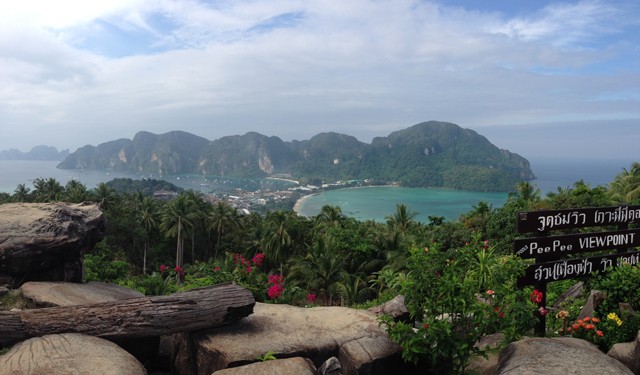
Unless you are visiting Thailand for business, investment, study, medical treatment or employment, visas are available upon arrival, but if you’re a citizen from one of the 52 countries that Thailand has an agreement with, you can enter Thailand for up to 30 days via an international airport without a visa (if you are entering by land you will only be granted 15 days). In order to be considered for this visa exemption rule, you’ll need to be able to show proof of leaving the country.
For countries that aren’t on Thailand’s exemption list, you will need a valid passport that doesn’t expire for six months upon entry, two passport sized photos and the cost will vary depending on your country of citizenship. You’re best to check with the embassy in your country for the most up to date information and costs.
There are only seven countries that don’t need a visa to enter Myanmar, all of which are in Asia, for everyone else, you’ll need to get your visa prior to entering the country. Some nationalities can apply for an eVisa online here , and once approved you will receive a letter which you will need to present with your passport upon arrival. The cost of the visa processing fee is $50USD for a tourist visa and grants you access for 28 days.
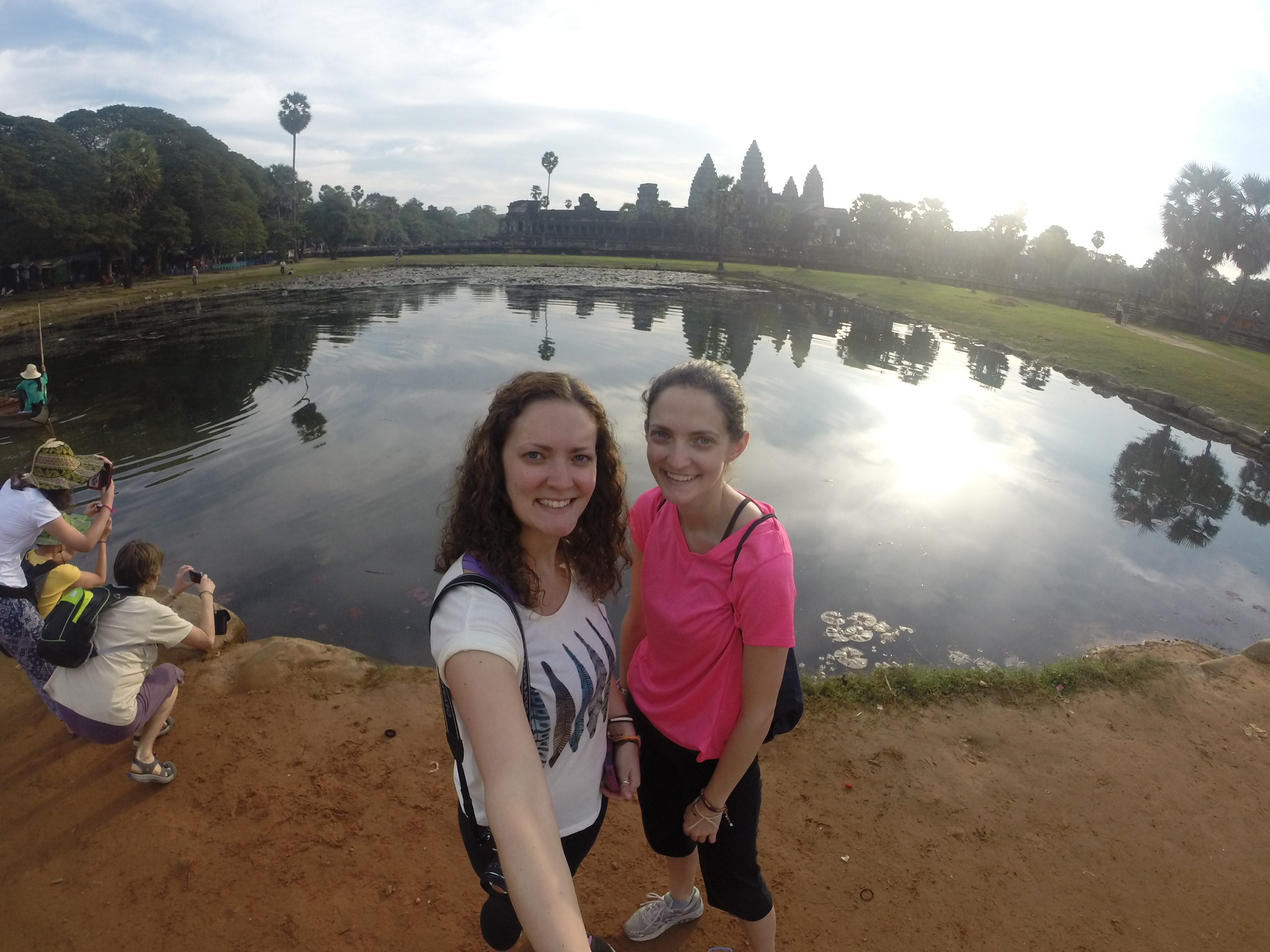
Visas are available upon arrival for most visitors to Cambodia at Phnom Penh and Siem Reap International Airports, as well as major land crossings. Some nationalities are required to obtain a visa in advance, but for the most part you can purchase a visa when you arrive in Cambodia. Visas are valid for one month and require a passport valid for six month, a passport-sized photo and around $30USD. Make sure you have cash on you because often times there are nowhere to get it out when you arrive.
For more information, click here.
For most nationalities, a visa is not required. You’ll need a passport valid for six months, and proof that you will be leaving Singapore within 30 days (unless you are from Europe, South Korea or the USA where you’re granted 90 days) in order to enter the country.
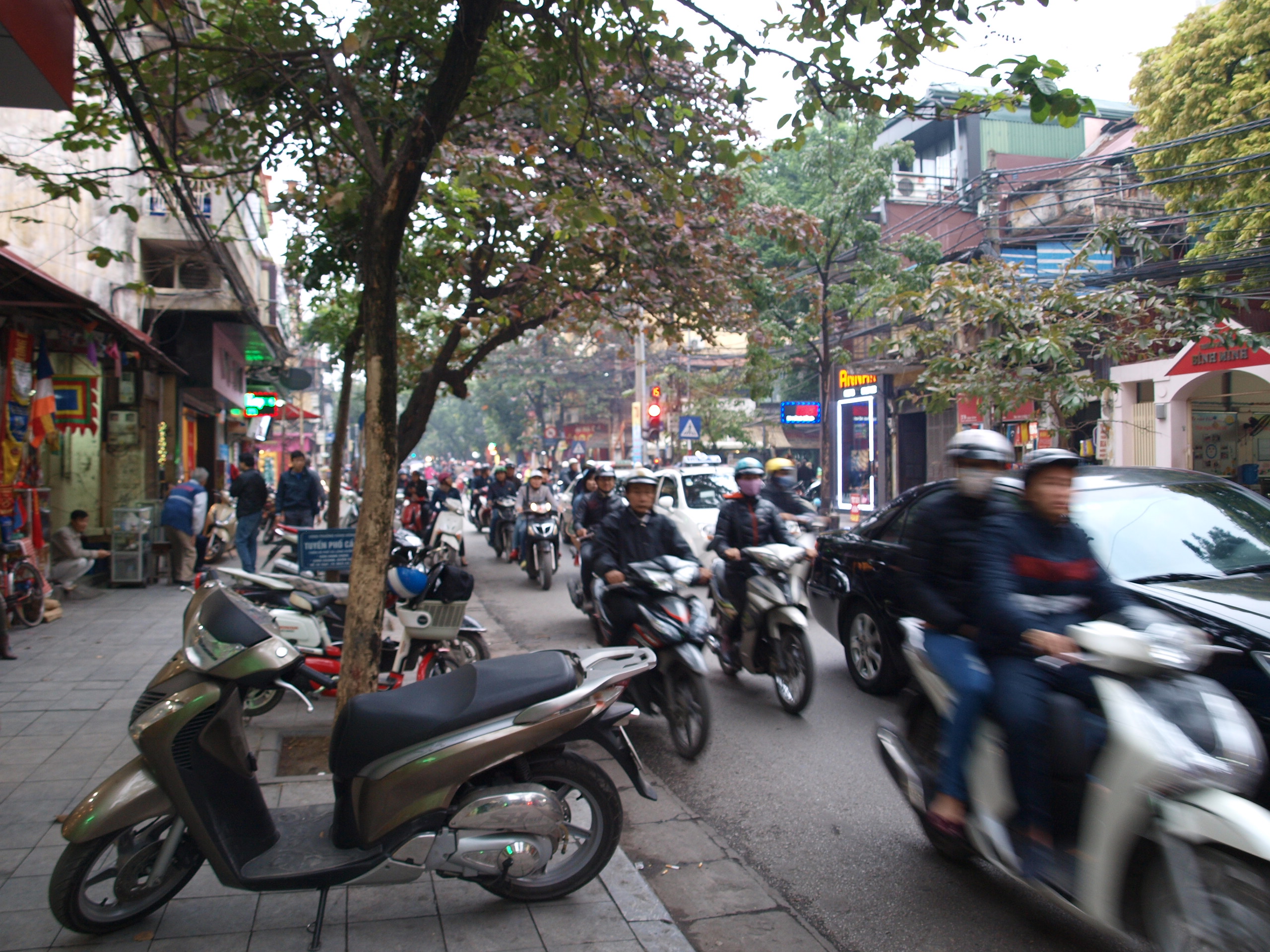
All visitors to Vietnam, no matter what the reason, need to obtain a visa prior to arrival. You will need to apply through the Embassy of Vietnam in your country. Although I can’t comment on the process in other countries, for me in Canada, I had to fill out an application online, which was then sent in via email. We then received an approved letter which had to be printed in colour and presented before we boarded our flight to Vietnam and once we arrived in the country to obtain our visa. We also needed a passport valid for six months, and a passport photo. As Canadians we could apply in person in Ottawa, or by mail and receive our actual visa before we left, but we found the letter to be easy and quick.
Here is where you can find more information for Canada, and here is where you can apply for your visa.
Most countries are granted some sort of entry without the need of a visa (ranging from 14 to 90 days) with the exception of a few countries that will need to obtain a visa. You will need a passport valid for at least six months, and that’s it, welcome to Malaysia!
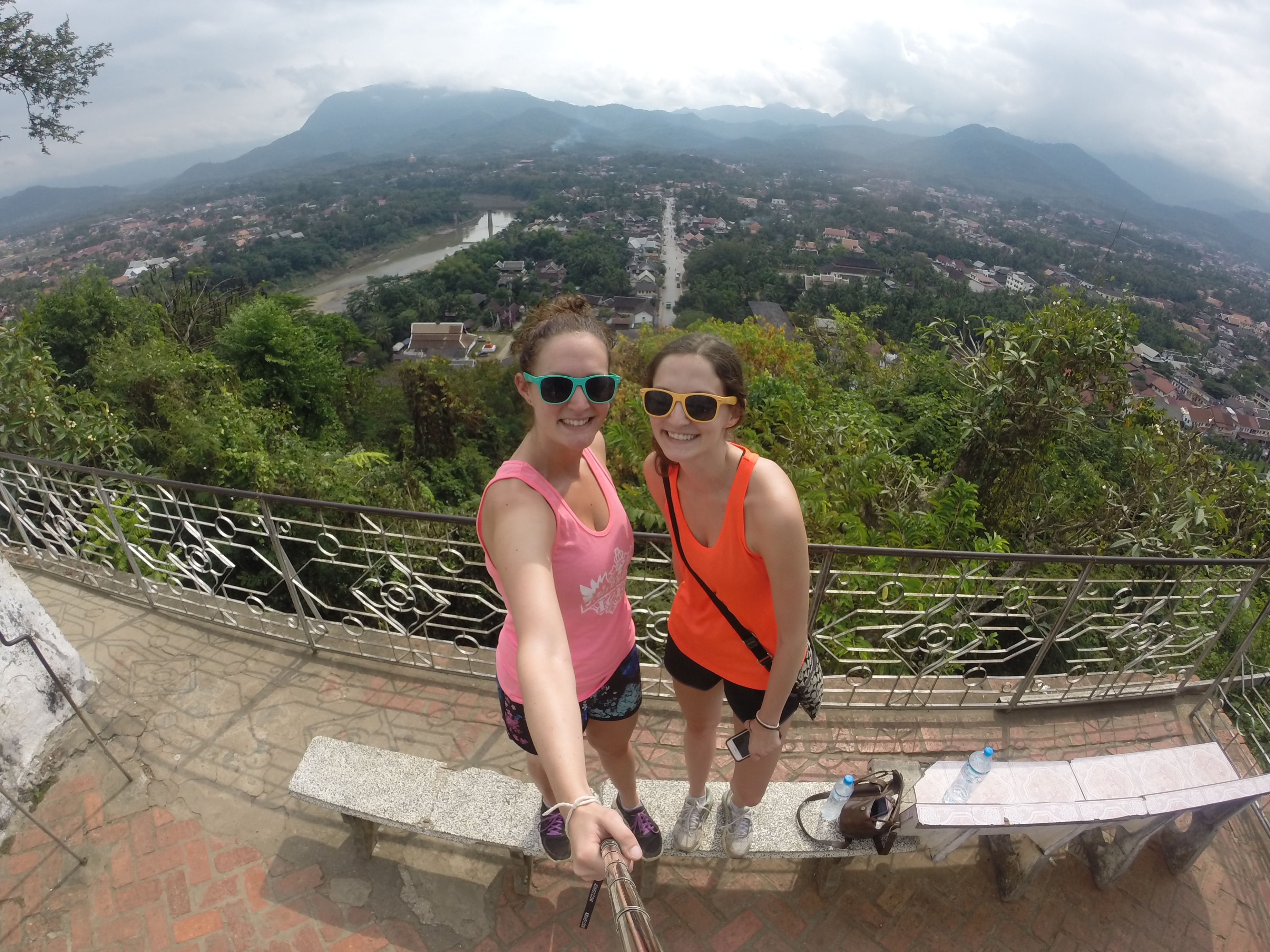
The easiest way to obtain a visa for Laos is by arrival, unless you are from one of the countries listed here . You will be required to have a valid passport, two passport sized photos, and money to pay your visa fee. Fees vary for each country but make sure you have cash on you (USD currency is best). Prices range from $20USD to $50USD, and you can find some prices listed here.
Share your Southeast Asian visa stories below in the comments.
More tips for SEA:
- Reading List: A Southeast Asia Travel Guide
- How to Travel in SEA the Cheapest
- Cost Breakdown: 28 Days in SEA
You Might Also Like
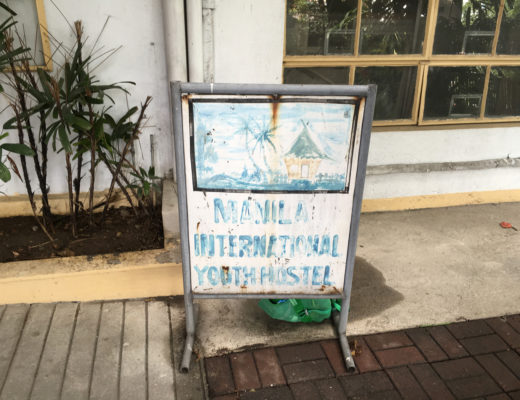
Hostel Review: Manila International Youth Hostel
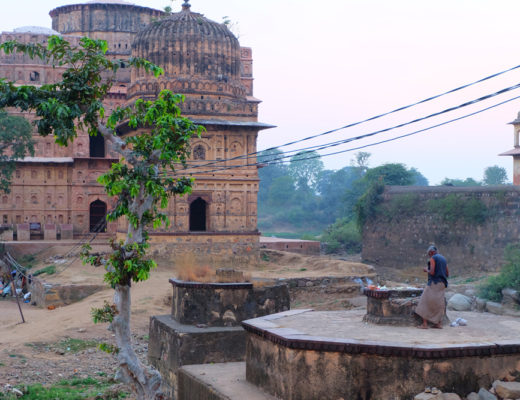
Highlights from Orchha, India
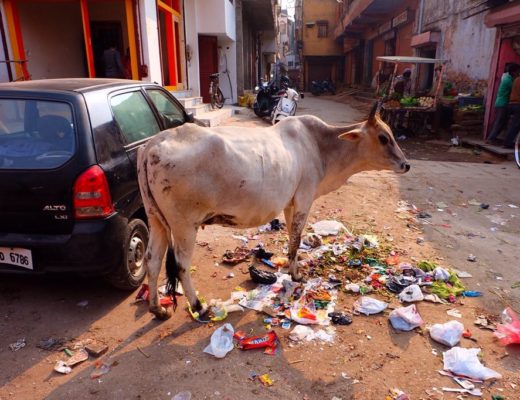
First Impressions of India
No comments, leave a reply cancel reply.

How to Prepare for your Southeast Asia Trip
Travel Tips on Packing, Visas, Insurance, Phone Roaming, and Flu Prevention
:max_bytes(150000):strip_icc():format(webp)/mike_borobudur-5b6d3ea446e0fb0025fcb683.jpg)
On your next Southeast Asia trip , don't fly in blind. Make sure you're prepared to handle the weather, culture, and travel conditions wherever you're headed.
The list that follows ought to help you prepare for your trip to Southeast Asia, although keep in mind it's a rather general list, covering a wide range of conditions in the region. Be sure to click on the following links for more fine-grained or country-specific information.
Get the Right Visa for the Country You're Visiting
Alexander Steffler / Creative Commons.
Conditions for entry regarding US citizens vary widely throughout the region. Most countries in Southeast Asia allow fairly easy visa-free entry , or visa upon arrival, for stays ranging from two weeks to three months. Cambodia, for instance, also allows you to get an e-Visa online that negates the need to visit a Cambodian embassy or consulate.
The only fly in the ointment is Vietnam , which requires US passport holders to get prior visa approval at a Vietnamese Embassy or Consulate. Read about Vietnam's visa and requirements to get one .
For visa requirements in the rest of Southeast Asia, make sure to review this list of visa requirements for US Citizens in Southeast Asia (by country) .
Set your Phone to Roam
Cellphone roaming in Southeast Asia is quite easy, assuming your phone meets certain criteria. At a minimum, your phone should be compatible with the GSM cellular standard, using the 900/1800 band.
Also, your cellphone provider should also allow international roaming ; barring that, your phone should be SIM-unlocked to let you use local prepaid SIM cards. The latter option may be preferable if you're planning to do a lot of calling from abroad; roaming charges are often quite exorbitant.
Some websites are blocked in particular countries ; a recent survey of Internet freedoms in Southeast Asia found that only the Philippines shared the same level of Internet freedom as the U.S., with others ranging only from "partly free" to the ominous "not free" in Vietnam, Cambodia, and Myanmar.
But you can tweak your phone to get past these restrictions.
Pack Right for Your Trip
For most destinations in Southeast Asia, light, loose cotton clothing will do for most destinations in Southeast Asia all year round. Most towns in the region are quite conservative (even cities), so wear clothes that cover your shoulders and legs when visiting temples, mosques, or churches.
Your packing list will depend on the time of year you're visiting . A traveler visiting Southeast Asia during the monsoon rainy season will want to bring clothes appropriate for the wet weather. Someone visiting during the summer seasons will want to pack UV-resistant clothes.
Whatever you do, do not bring controlled drugs into Southeast Asia . The region has the harshest drug laws on the planet, and even stuff that's been legalized in your neck of the woods may get you the death penalty if they catch you with your stash in Singapore's airport.
Get Insured Before You Go
When traveling to Southeast Asia, you should mitigate the obvious travel risks and get travel insurance . Many destinations are miles away from the nearest hospital or clinic. (For instance, if you get bitten by a Komodo dragon in their namesake national park, you'll need to be airlifted 300 miles west to a hospital in Bali. That's not a cheap ambulance ride.)
If something terrible happens to you so far from home, insurance can save you much-needed time and resources, as accidents, cancelled flights, or property loss can cost more than you could possibly afford.
Important note: Travel insurance will not cover you everywhere or in any situation: certain places and adventures will void your insurance if visited or undertaken!
Take Appropriate Health Precautions
Conny Sandland / Creative Commons
Disease is an everpresent possibility in Southeast Asia - not just in the tap water , but particularly in the jungles and bodies of water representing some of the region's most-visited places. If you're not up to date on your shots, take time before your trip to get the right jabs in .
Bird flu (H1N1), while hardly on anybody's radar these days, can strike unexpectedly. Amazingly, flu is almost ridiculously easy to avoid, assuming the right precautions are taken.
Make sure you review other Southeast Asia safety tips , and find out about specific safety issues while hiking and while visiting Bali .
The CDC is just one of many organizations providing travel apps designed to keep travelers safe; read about the CDC's online tools for healthy traveling to take in their tips and tricks.
Asia Travel
Is It Safe in Thailand?
Driving in Asia
Cellphone Roaming in Southeast Asia
What $100 Can Get You in Southeast Asia
Top UNESCO World Heritage Sites in Southeast Asia
Vital Information for the First-Time Visitor to Thailand
Philippines Travel Guide for First-Time Visitors
Preparing for a Trip to China
Cambodia Guide: Planning Your Trip
Tourist Visa Requirements for Southeast Asia
Staying Safe in Southeast Asia
Essential Info for First-Time Visitors to the Philippines
Weather in Southeast Asia: Climate, Seasons, and Average Monthly Temperature
How to Call and Surf on your Smartphone in Indonesia
Traveling in Southeast Asia's Monsoon Season
12 tips for your first trip to Southeast Asia

Editor's note: The team at The Points Guy loves to travel, but now is not the time for unnecessary trips. Health officials note that the fastest way to return to normalcy is to stop coming in contact with others. That includes ceasing travel. We are publishing travel deals and destination content because we should all use this time to think about and plan our next adventures. TPG doesn't advise booking trips for travel until summer or fall — and even then be mindful of cancellation policies. This story has been updated with new information.
Southeast Asia is one of the most magical regions on earth. Filled with stunning beaches , historic temples, verdant jungles and bustling cities, there's something for every traveler there. But staying healthy and safe is something to consider when visiting a region so different from your own, especially for the first time. Things like visa requirements , best times to visit, currency exchange and what to bring may be at the top of your mind, as well as the most obvious question -- which country should you visit?
After a number of long-term visits over the years to varying countries in Southeast Asia, I've learned a thing or two. Beginner travelers should check out these travel tips and follow this Southeast Asia travel advice when considering a visit to the region for the first time.
1. Pick your countries wisely
While it's tempting to visit many countries and cities on a single trip to Southeast Asia, it's worth taking it slow and digging into the culture of a single country and/or just a handful of places, rather than exhausting yourself with a travel itinerary that has you hopping all over what amounts to an enormous territory.
For example, Bali , Indonesia and Hanoi, Vietnam , are both set within Southeast Asia, but beware -- they're a seven-hour flight away from each other. Before you commit to flights and accommodation , pull out the map and choose countries/cities that are relatively close together or are easily accessible by nonstop flights or direct trains.

When deciding on the best country to visit in Southeast Asia, you should also take into account whether you want to explore cities, relax on beaches, see the outdoors or embrace culture, cuisine and history.
The best country to visit for beginner travelers could be Thailand. First-time visitors to the region may also enjoy Bali, Indonesia. Both of these spots are used to an influx of tourists and have plenty of amenities. They're both relatively easy to navigate and have friendly locals that speak English.
More experienced travelers or those wanting an adventure may prefer spots like Myanmar, Malaysia or Laos. While almost all Southeast Asia destinations welcome backpackers with open arms, Cambodia is very backpacker-friendly -- and is extremely affordable, especially outside of tourist destination Angkor Wat. Those wanting to lap a country from top to bottom should head to Vietnam. For unexplored beaches, visit more off-the-beaten-path islands in Indonesia (that aren't Bali) or the Philippines .
Related: 9 of the best sustainable backpacks for travelers
2. Check visa requirements
Several Southeast Asian countries require your passport to have at least six months' worth of validity left or a specific number of empty pages -- and visa requirements seem to be constantly changing. For example, a few years ago, e-visas weren't available online for several entrance points in Myanmar, but now they are. Meanwhile, Vietnam has changed its visa requirements in past years and now citizens from several European countries no longer need a visa to enter.
Check visa requirements ahead of time and apply online if possible. For example, U.K. nationals will find that applying for a visa to enter Laos online is relatively straightforward and can ease hassle upon arrival, especially when you're jet-lagged in a new and unfamiliar country.

If you do end up needing a visa upon arrival at your chosen destination(s), be prepared with the proper currency and passport-size photos of yourself. Many airport visa offices have ATMs/exchange services (albeit with terrible rates) and photo booths, but if you arrive with these items in hand, as well as any forms you might need printed and filled out ahead of time, the visa experience will be quicker and easier.
Also, be sure to grab a couple of extra entrance and exit forms each time you enter a country -- if you end up leaving and reentering that country by bus, boat or train, having the correct forms handy will enable you to save time you'd otherwise spend in a line.
3. Pack light and right
Deciding what to bring to Southeast Asia is a common conundrum. Try to pack as light as possible and do laundry wherever you go rather than trekking around with an overweight backpack or heavy trolley bag. In most Southeast Asian countries, you can get your clothes washed, dried and ironed in under 24 hours for the equivalent of a couple of dollars, and at street markets, you can shop inexpensively for any extra clothes and toiletries you may need.

These are the things you should make sure to pack:
- raincoat/umbrella (especially during rainy season)
- modest clothing covering knees/shoulders for temple visits
- first aid kit (including all kinds of stomach medicines)
- small flashlight
- earplugs/ sleepmask
- hand sanitizer
- travel packs of tissues (note that squat toilets usually aren't equipped with toilet paper)
- adaptor/multi-port plug that allows you to charge a few of your electronics at once
Related reading: 14 packing hacks for traveling with just a carry-on
4. Best times to visit Southeast Asia: rainy or dry season?
You can organize your trip in one of two ways: picking a destination(s) first and then selecting the best time to go, or picking your destination(s) based on what will have the best weather during the time you're able to visit. Most countries in Southeast Asia have two main seasons: wet and dry.
Even certain regions within countries can have separate rainy seasons . For example, if you want to have a beach holiday in Thailand over Christmas, it's better to choose islands in the Andaman Sea, which are sunny, like Koh Lanta or Koh Yao Yai and skip the Gulf of Thailand islands, such as Koh Samui or Koh Tao, where it's rainy season.

If you're visiting larger cities, rainy season may not be so bad. You'll experience a downpour or two for sure, but you may get cheaper hotel deals or better value on airfare. But, it may be best to avoid smaller towns or villages during the wet season where lack of infrastructure during floods may complicate your stay.
It's also important to consider additional seasonal situations -- like burning season, where many Southeast Asian regions burn brush and old crops to prepare for planting. Air quality is bad during this time and may affect tourists, especially those with respiratory problems.
5. Safeguard your health
Before you travel to individual countries, check their vaccine requirements and recommendations -- and then actually get those vaccinations. If you're worried about the expense, be aware that you can opt to get your vaccinations upon arrival in Bangkok , where they're often affordable at local health centers. When traveling to any Southeast Asian country, getting tetanus shots and typhoid vaccines are generally a good idea. In addition to any necessary vaccines, seek out strong mosquito repellent, as this can help protect you from dengue fever and malaria.

6. Get travel insurance
Plan to get travel insurance when visiting the region, because health risks in Southeast Asia don't entirely diminish even if you've had your vaccines. As Southeast Asia trips often include adventures like indulging in street food, zip-lining, scuba diving , jungle treks and motorcycle rentals, it's wise to have a policy in place.

During a previous trip to Thailand, I developed an ear infection from snorkeling . Thanks to my travel insurance, I was in and out of a doctor's office within an hour, complete with medicine and a special souvenir bag (see above) -- all covered by my policy. Years ago in Malaysia, my husband cut his foot on coral while diving and required antibiotics. Having travel insurance made the situation an easy (and free) fix. Insurance policies can also cover non-health-related problems such as lost luggage or issues with flights and hotels, so look into getting the best travel insurance policy for you.
7. Consider alternate travel methods
While we love a good points and miles deal, using trains, low-cost airlines and ferries is a great way to save money while moving from place to place. Buses are generally the cheapest method of transport in Southeast Asian countries, but be aware of travel scams and know that you might be in for dirt, dust, unpleasant (or simply strange) smells, crowds, bumpy roads and more.

Ferries can sometimes be crowded, but are a quick, cheap and a direct form of travel between islands, and though often slow, trains are a fun way to explore and see the lay of the land(s). Low-cost carriers such as AirAsia, Bangkok Airways , Nok Air, Tiger Air and more offer cheap flights to a variety of destinations -- and some even have frequent flyer programs . Though often a splurge in comparison to bare-bones taxi-boat journeys, river cruises are luxurious, scenic adventures and a great mode of transportation.
8. Rent a scooter at your own risk
If I had a dollar for every 20-something I saw with a bandaged knee, chin or foot in Thailand, I would easily be rich. Renting scooters can be a great way to get around, but in some Southeast Asian countries you'll need to drive on a different side of the road you're accustomed to and you may have to battle intense traffic, hills, curves, stray dogs, dirt or sand roads, crazy taxi drivers -- and worst of all, other foreigners driving scooters who are unfamiliar with these conditions. Even though many locals and tourists don't wear helmets, you still should.

Before you head off with a rental scooter, be sure that your rental agent sees you taking detailed photos and/or videos of the bike, and actively point out any scratches or concerns to them. Though scooter rentals are often just a few dollars per day upfront, scooter scams are common, where a rental agent will insist that you've scratched or otherwise damaged their motorbike, charging you hundreds (or even thousands) of dollars in damages before they'll return your passport to you.
9. Be smart about currency exchange
Airports and banks often charge excessive fees to exchange money, but you'll usually get a decent exchange rate if you wait to change money once you're in Southeast Asia. However, know that Southeast Asian hotels generally offer terrible exchange rates, so stick to banks or other spots that advertise "Money Exchange." Make sure to change plenty of cash, as street market vendors, taxi drivers and smaller restaurants may not take credit/debit cards.

Many hotels and larger restaurants will take credit/debit cards though, so make sure to use ones that hold no foreign transaction fees.
10. Avoid "temple burnout"
"Temple burnout" happens when you see so many ornate and beautiful temples that they all begin to look the same -- and you lose interest in seeing any more, ever. To avoid this malady, arrange some non-temple-oriented activities on your Southeast Asia travel itinerary, or simply take a day (or two) off to relax and rest your eyes. After a bit of visual reboot, you'll have a whole new appreciation for a region of the globe that has more amazing temples than you could possibly imagine.

11. Don't be afraid to bargain
You should absolutely bargain with local street vendors or at markets -- it's a cultural norm to do so. I've had some great times bargaining and laughing with street vendors and even made friends with a few locals along the way, coming home with memorable souvenirs for my efforts. Just make sure to barter reasonably and always with a smile on your face. The point of bargaining is to engage with locals and agree on a fair price, not to cheat them or get scammed yourself.

12. Be a responsible tourist
It's best to avoid orphanage tourism, hill tribe visits or any activity that exploits children, ethnic groups or animals. When participating in elephant tourism, make sure to carefully vet your organization and make sure they're protecting the animals in lieu of harming them.
While begging children may tug at your heartstrings, the more money they earn from tourists, the more their parents see them as a source of monetary gain and the less inclined they are to send them to school -- where they'd have a shot at a better future.

When diving/snorkeling or out in nature, make sure to adhere to the no trace policy , not littering or taking anything from delicate natural environments.
If you want to lend real support to locals in Southeast Asia, dine at Tree Alliance restaurants . Located in Myanmar, Cambodia and Laos, these eateries train disadvantaged young adults as chefs and waiters and also donate money to programs that assist low-income locals to get jobs. Offering traditional cuisine, these restaurants provide a delicious way to help.
Related: 5 tourism-supported charities that need your help now more than ever
Or, visit an organization like Big Brother Mouse in Luang Prabang, where tourists can read books, play games or chat with kids and teens eager to practice their English.
Related: How to be a better traveler
Bottom line
Armed with these useful travel tips for Southeast Asia, you'll have a safe, smooth and successful first trip to this beautiful region. Happy travels!
Agent Information
← Return to Blog
Southeast Asia Visa Requirements and Considerations
Luke Armstrong | Dec 21, 2020
Share Twitter share
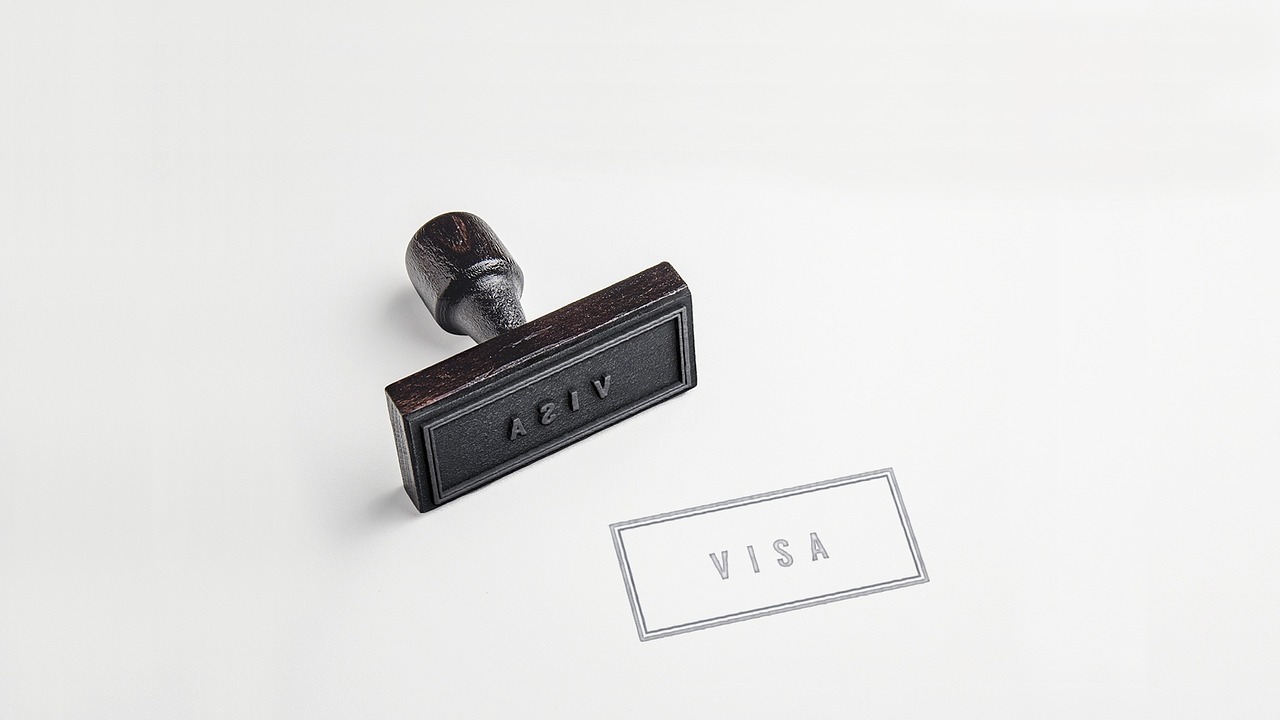
The visa situation in Southeast Asia can be a major headache. And getting it wrong can really wreck a trip. I remember when I first traveled to Vietnam. I had read online that a tourist could get a visa upon arrival. So I stopped my research there, booked my ticket from the Philippines and planned to get a visa upon arrival. What I dint account for was that you needed a letter in advance from the Vietnamese government in order to get a visa on arrival. The Vietnamese customs were poised to send me back to where my connecting flight was in Singapore. I gave the customs agent my sad puppy face while giving them my smile that said, sorry, I am a stupid gringo and everything confuses me. So after a $300 “fee,” I was granted a 2 week emergency cuida instead of the 60 day tourist visa all the other gringos who’d down their due diligence got. Even professional travelers make big time travel mistakes! And I don’t want that to be you, so as the publishing of this article, here is the up to date info for the visa situation for 10 most popular Southeast Asia destinations.
What are Entry Requirements?
Many countries require only a valid passport for citizens of the U.S., U.K., Canada, Australia, and New Zealand. For an up-to-date listing of passport requirements around the world, go to the "Foreign Entry Requirement" page of the U.S. State Department at www.travel.state.gov. Note that Vietnam, Laos, and Cambodia require all visitors to have entry visas. Though most international airports offer visas upon arrival, and there are more overland points where you can apply with passport photos and money when you arrive, if you plan to enter Vietnam, Laos, or Cambodia from rural overland points, you often need to obtain a visa beforehand (you may even need to specify which entry point). And be aware that in Vietnam you need to fill out a form online to get your visa. https://vietnamvisa.govt.vn/vietnam-visa-on-arrival/ To simplify most matter, there are companies like Evisa Asia where you can fill out one form that they then use to procure your visa to the countries they work with.
Visa for Bali (Indonesia)
Visitors from the U.S., Canada, most of Europe, Australia, and New Zealand are given a visa upon arrival for a fee of $10 (£6.65) for stays of 7 days or less and $25 (£17) for stays of up to 30 days. The only official gateways to Bali are Ngurah Rai Airport or the seaports of Padang Bai and Benoa. If you want to stay longer than 30 days, you must get a tourist or business visa before coming to Indonesia. Tourist visas cannot be extended, while business visas can be extended for 6 months at Indonesian immigration offices.
Visa for Indonesia
As of March 2016, the Indonesian government allows citizens of 169 countries to enter visa-free. USA/UK passport holders in particular may get one of these, but the fee depends on how long you plan to stay (30 day maximum). For more information, read this article: Indonesia Travel Information . To apply for an Indonesian visa, proceed to the Embassy of Indonesia's site for consular services to get started. https://consular.embassyofindonesia.org The embassy will not accept cash for visa fees; only company checks, cashier checks and money orders.
Visa for Cambodia
All visitors are required to carry a passport and visa. A 1-month visa can be obtained upon entry at the Phnom Penh or Siem Reap international airports for $20. Applying online (http://evisa.mtaic.gov.kh) for a 1-month e-visa costs $25. The procedure is simple, straightforward, and will save you time and energy. Bring one 4*6-inch passport photo for your application, or be fined. Visa on arrival is available at several land crossings, including Poi Pet (Thailand), the boat-crossing point from Chau Doc (Vietnam), and Dong Kralor (Laos) for $22.
Visas for Laos
Visitors need a valid passport and visa to visit Laos. There are a number of entry sites where visas are granted upon arrival: by air to Vientiane or Luang Prabang, or when crossing from Thailand over the Friendship Bridge between Vientiane and Nong Khai, or between Chiang Khong and Houay Xai in the far north, and Mukdahan and Savannakhet or Chong Mek and Vung Tao (near Pakse) in the far south. A 30-day visa at these arrival points costs $30. You will also need a passport-size photo. When coming from Vietnam, be sure to have a prearranged visa. At an embassy outside of Laos, the going rate for a 30-day visa is $35; you'll have to wait up to 5 days for processing (less in Bangkok). For a fee, travel agents in Thailand and other countries in the region can help you jump over the bureaucratic hurdles and get a visa in 1 day.
Visa for Malaysia
To enter Malaysia, you must have a valid passport. Citizens of the U.S. do not need visas for tourism and business visits. Citizens of Canada, Australia, New Zealand, and the U.K. do not require a visa for tourism or business visits not exceeding 1 month. Singapore — To enter Singapore, you'll need a valid passport. Visas are not necessary for citizens of the U.S., Canada, the U.K., Australia, and New Zealand. Upon entry, visitors from these countries will be issued a 30-day pass for a social visit only, except for Americans, who get a 90-day pass.
Visa for Thailand
All visitors to Thailand must carry a passport valid for at least 6 months. Technically, you need proof of onward passage (either a return or through ticket), though this is rarely requested. Visas are not required for stays of up to 30 days for citizens of the U.S., Australia, Canada, New Zealand, or the U.K., but 3-month tourist visas can be arranged before arrival.
Visa for Vietnam
Residents of the U.S., Canada, Australia, New Zealand, and the U.K. need both a passport and a valid visa to enter Vietnam. A tourist visa usually lasts 30 days and costs $65. You need to specify your date of entry and exit. Though there's no official policy, tourist visas can commonly be extended with little hassle. Multiple-entry business visas are available that are valid for up to 3 months; however, you must have a sponsoring agency in Vietnam, and it can take much longer to process. For short business trips, it's less complicated simply to enter as a tourist
Visa for Myanmar
In Myanmar you need a valid passport with at least six months' remaining validity, and a valid visa for Myanmar. The “visa on arrival” scheme has been discontinued for tourists; only business visa applicants can get one. Fortunately for U.S. travelers, Myanmar offers an “e-Visa” - just log onto their official site (evisa.moip.gov.mm) to apply. The e-Visa costs $50 (payable via credit card); you'll also need to upload a recent color ID image along with your passport and ticket details. Without an e-Visa, US passport holders must obtain pre-approval for a visa from the nearest Myanmar embassy or mission. Find out more at the Embassy of Myanmar's official site.

Visas for the Philippines
US passport holders may enter without a visa, for stays not exceeding 21 days. Visa extensions can be obtained from Philippine Embassies, Philippine Consulates, or from the Bureau of Immigration within the Philippines..
Visas for Singapore
US passport holders are not required to obtain a visa to visit Singapore; the Entry Pass permits a maximum stay 30 days. Read this article: Singapore Travel Information. For more information on Singapore visas, proceed to the Singapore embassy's official site.
General Visa Tips
* Plan your trip around the length of stay mandated by your visa. * If you plan to stay longer, apply for a longer visa from the embassy in your home country or from an embassy in a neighbouring country. Alternatively, investigate the ease of extending a visa within the country * Stock up on passport photos; you’ll probably need at least two pictures each time you apply for a visa. * Have the correct amount of local currency (or US dollars) to pay the on-arrival visa fee. * Dress smartly when you’re visiting embassies, consulates and borders; you may be judged on your appearance. * If entering by land or sea, check if the border post offers visas on arrival; some do not. * Be aware that travellers are often targeted by transport and foreign exchange scams at land border crossings. Passport Smarts To enter most countries your passport must be valid for at least six months from your date of entry, even if you’re only staying for a few days. It’s probably best to have at least a year left on your passport if heading off on a big trip around Southeast Asia. Border guards may refuse entry if your passport doesn’t have enough blank pages available. If you are reaching the end of your passport pages, get more pages added before you travel (if this is a service offered by your home country), or apply for a new passport. Once on the road, you can apply for a new passport in most Southeast Asian capitals at your home embassy or consulate.
About the Author

Luke Maguire Armstrong is the author of "The Nomad's Nomad." He has spent the last decade traveling, writing and designing, and funding philanthropic programs around the world.
- Infographics
- Study Abroad
- Testimonials
- Travel Destinations
- Travel Insurance Advice
- Travel Tips
Search Posts
Newsletter alert
Receive our monthly inspiration and travel tips from the travel insurance experts.

303 Congressional Blvd.
Carmel, Indiana 46032
Our Markets
- Consumer Insurance
- Government Solutions
- Trip Protection
- Trip Protection Annual Multi-Trip
- Trip Protection USA
- Travel Medical
- Travel Medical Annual Multi-Trip
- Travel Medical USA Visitor
- Mission & NGO
- Medical Evacuation and Repatriation
- Partnerships
- 24 Hour Urgent Travel Assistance
- Frequently Asked Questions
- Developer Portal
- System Status
Copyright © 2024 Seven Corners Inc. All rights reserved.
Privacy | Cookies | Terms of Use | Security
- Meet the Team
- Work with Us
- Czech Republic
- Netherlands
- Switzerland
- Scandinavia
- Philippines
- South Korea
- New Zealand
- South Africa
- Budget Travel
- Work & Travel
- The Broke Backpacker Manifesto
- Travel Resources
- How to Travel on $10/day
Home » Southeast Asia » Backpacking Travel Guide
Backpacking Southeast Asia Travel Guide (Budget Tips • 2024)
For many travellers, backpacking Southeast Asia is the ultimate highlight of their backpacking adventures. If you are coming from Western civilisation, exploring these mystical countries is like being catapulted into an alternate reality.
Over my travel experiences, I’ve spent YEARS bouncing around this dazzling area of the world. And still – to this day – I am awe-struck by it, time and time again.
From the moment you set foot on the continent, you can feel the electricity in the air. Your senses explode from stimulation as you head out into the hustle and bustle in search of the BEST street food and an ice-cold beer…
If you’re new to backpacking, this corner of the world is a great place to start your travels: it’s affordable, safe, diverse, friendly, and astonishingly beautiful. From the heart of Bangkok to the islands of Indonesia, legions of inspiration are found in every country throughout the region – and you’ll want to see it all.
With enticing tales of adventure coming from generations of travellers, it can be hard to know where to start planning your visit to Southeast Asia. It’s not as straight forward as arriving in other continents in the world. Having some travel tips with do you a world of good.
Never fear! This Southeast Asia travel guide details ALL the low-down with everything you need to know to embark on your epic journey. From the OG Banana Pancake Trail itinerary to my favourite cheap eats, this guide has it all.
Spoiler alert : banh mi is the best street food!
Fasten your seat belts and don’t forget your motorcycle helmet. This is the ultimate backpacker’s guide to travelling Southeast Asia!
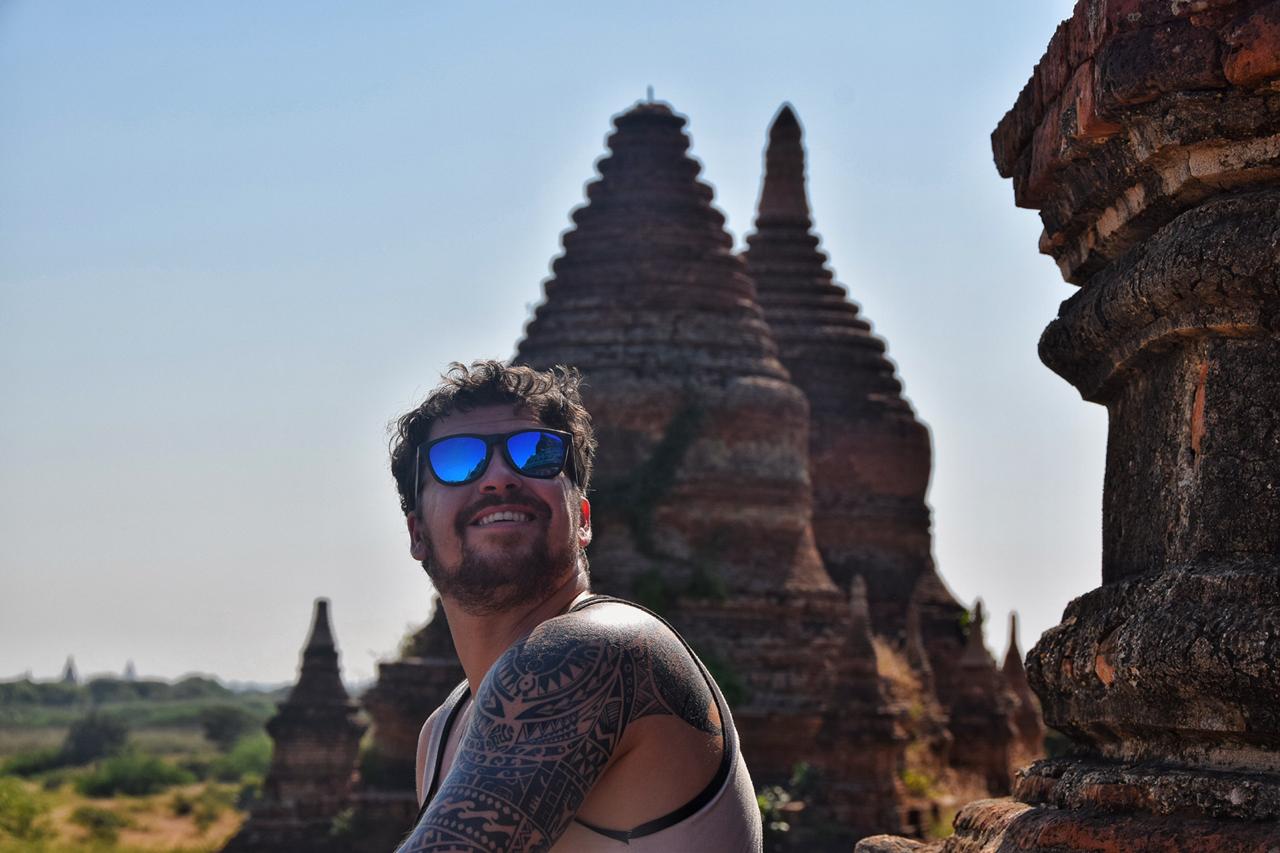
Why Go Backpacking in Southeast Asia?
Backpacking Southeast Asia is wildly chaotic, punctuated by brief moments of reflection and utter calm. When I first landed in Vietnam and began my travels in the region, I got that wonderful thought of so this is what travelling is about .
The best thing about visiting Southeast Asia is that you can stick to the well-trodden path and still have a mind-blowing adventure that’s easy on logistics. There are cheap buses you can catch between countries, it’s easy to buy your own motorbike and explore yourself, plus internal flights are usually cheap too.
Conversely, it’s very easy to step off into the wilderness and have a raw, untamed adventure. Some of my best memories come from taking a side road through the jungle on the Vietnam-Laos border. I camped on the outskirts of small villages amongst unruly jungles that hadn’t seen tourists come through in 10 years. Of course, obligatory rice wine was shared each night!
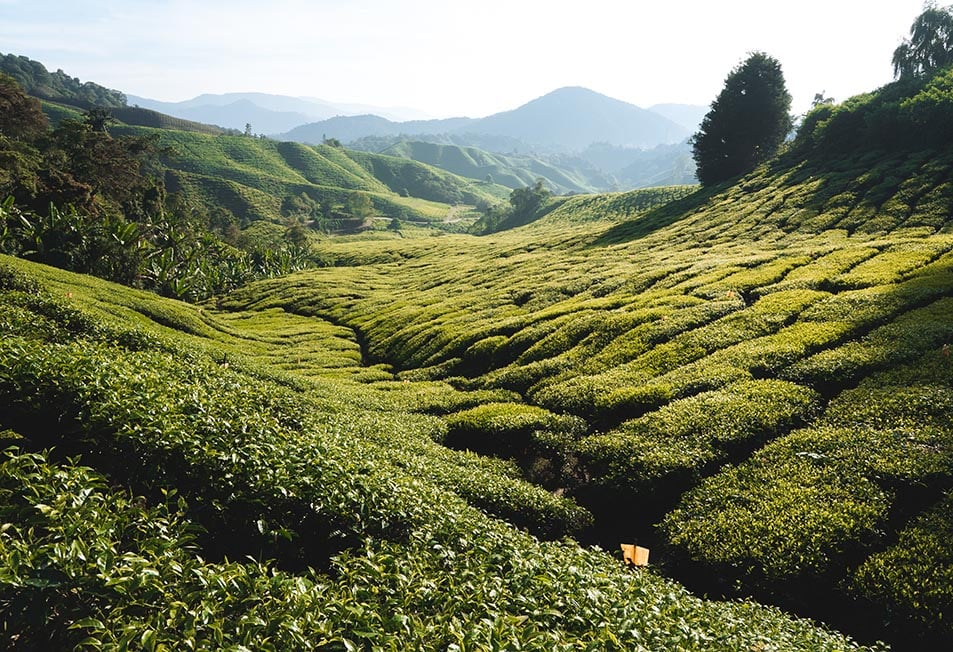
Generally speaking, backpacking in Southeast Asia is very cheap compared to travelling to other parts of the world. You don’t have to count your pennies and hustle at every step of the way in order to enjoy a beer at the end of the day. I’d say this part of the world takes the cake when it comes to budget backpacking .
Because the region is so cheap, you can enjoy big-ticket experiences that you might not be able to afford in other regions of the world. This could include world-class SCUBA diving in Malaysia , or a freediving course in the Philippines.
Even the ‘everyday experiences’ of backpacking Southeast Asia are epic, though! Think about taking yoga classes in the morning and surf in the afternoons in Indonesia . What about hiking through dense jungles exploding with wildlife, raging rivers, and massive waterfalls in Laos ? And you can’t forget to explore Vietnam by motorbike .
There is a reason that, despite how touristy some parts of the region get, Southeast Asia remains an incredibly special place to both first time and veteran travellers!
It’s just that bloody good .
Best Travel Itineraries for Backpacking Southeast Asia
Best places to visit in southeast asia: country breakdown, top 10 things to do in southeast asia, southeast asia backpacker accommodation, backpacking southeast asia costs, best time to visit southeast asia, staying safe in southeast asia, getting into southeast asia, how to get around southeast asia, working in southeast asia, southeast asian culture, what to eat in southeast asia, some unique experiences in southeast asia, faqs about southeast asia, final thoughts on backpacking in southeast asia.
Let us be clear about one thing: Southeast Asia has so many things to do and see that it would be impossible to see it all in one lifetime let alone in just one backpacking trip. That said, you can sure pack in a whole lot no matter what your time frame is!
Also, remember that this is a region that lives, breathes, and thrives on a certain degree of chaos. Backpacking in Southeast Asia requires one to adapt to that chaos and embrace the wonderful spontaneity that can arise here.
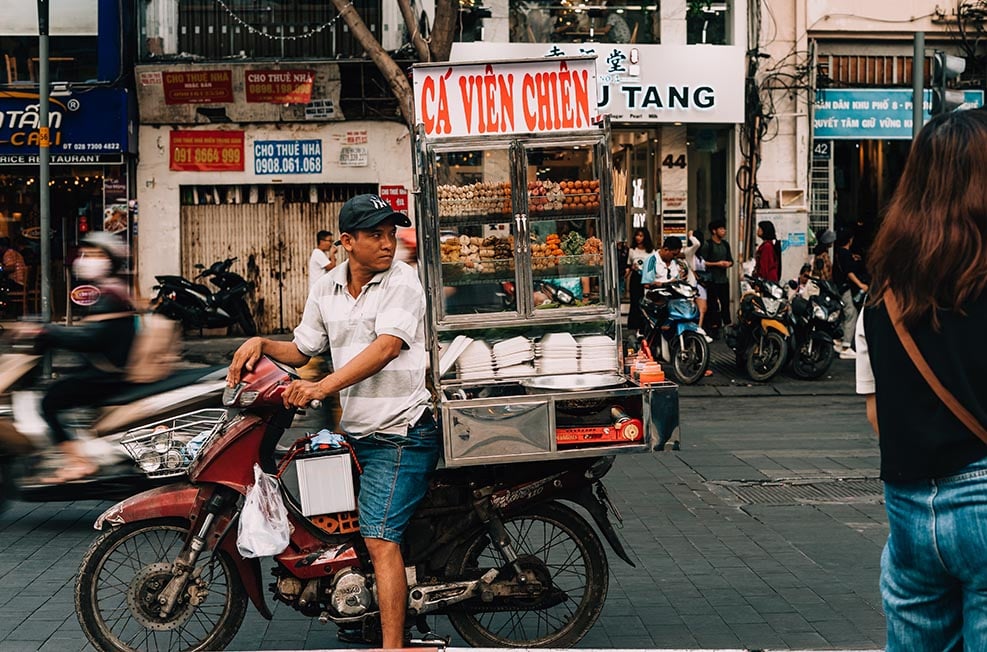
I don’t think that you should attempt to plan your trip to the last tuk-tuk ride. That said, having a general Southeast Asia travel itinerary in mind will help you get the most out of your trip. You don’t want to spend your time scrambling for things to do – nor do you want to pack so much into your travels that you forget to enjoy yourself.
Do you have 2 weeks? 3 months? 6 months? No matter what your time frame is, the itineraries I have listed below have helpful travel routes for Southeast Asia to suit all schedules.
Note that each itinerary can be combined with another, done in reverse, and customized based on your interests. Sometimes it’s worth leaving off one or two sights in order to fully enjoy the others.
2 Weeks Backpacking Southeast Asia Itinerary: An Epic Getaway
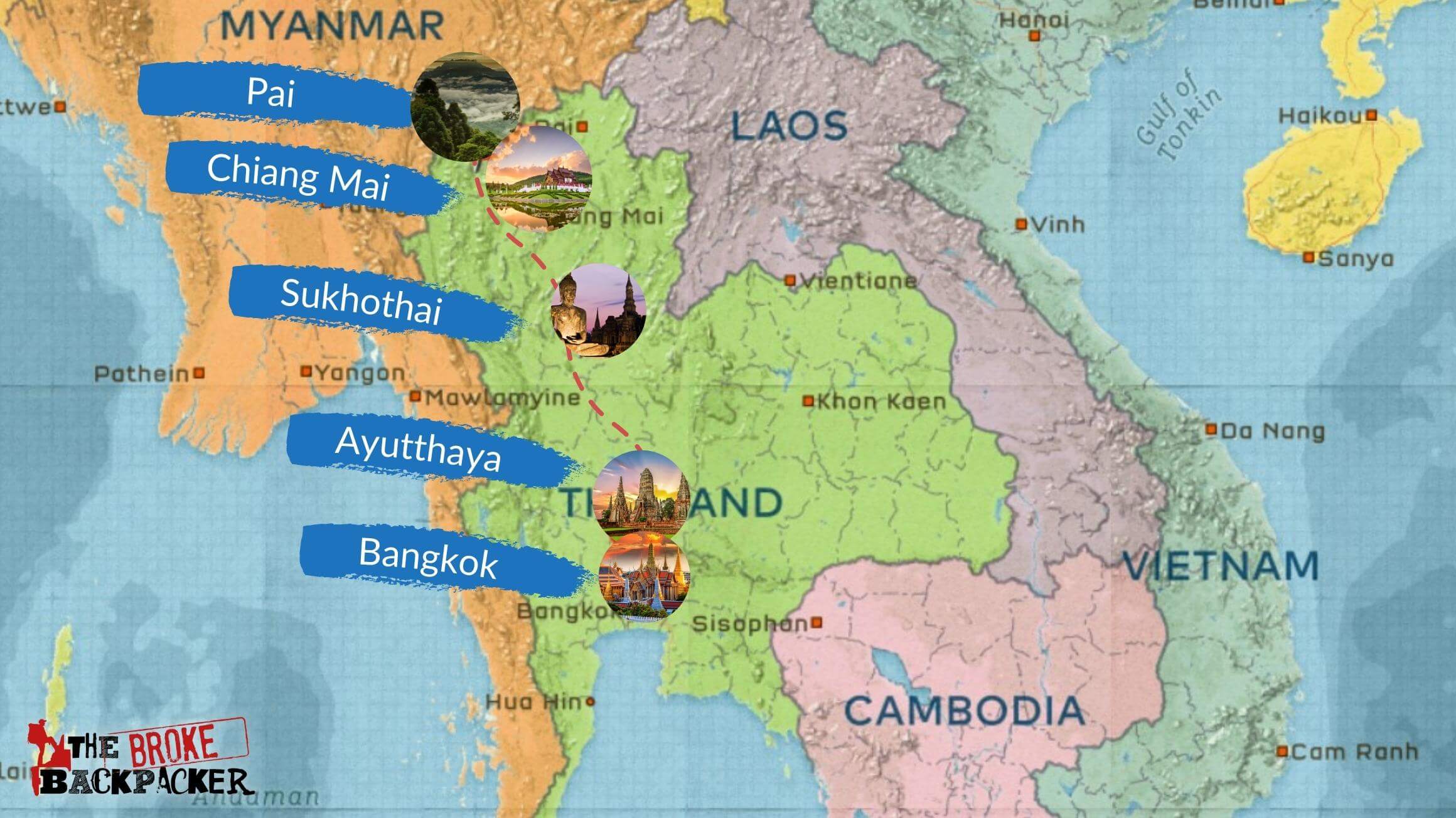
When low on time, I advise sticking to smaller countries like Laos, Thailand, or Cambodia. That way the transportation distances won’t eat a big bite out of your precious backpacking time. You will certainly only be scratching the surface, but you will leave with an even more intense hunger to return!
You could start your 2 weeks by visiting Bangkok and exploring the city for a few days. Thailand also has some spectacular temple ruins of its own at Ayathuya and Sukhothai which are close to Bangkok and well worth checking out.
From Bangkok, it’s easy to travel to Chiang Mai in Northern Thailand and from Chiang Mai onwards to the mountain town of Pai in just a few hours. If the north doesn’t quite do it for you, you can always go party on the epic Thai islands in the south.
Alternatively, you could go from Bangkok across the border into Cambodia . There you can go see Angkor Wat and go south to visit the tropical islands off Cambodia. While there is a party vibe on the Cambodian islands, they’re definitely more relaxed. Think swimming at night with bioluminescence and chilling all day in a hammock with just a splash of psytrance.
3 Months Backpacking Southeast Asia Itinerary: The Banana Pancake Trail
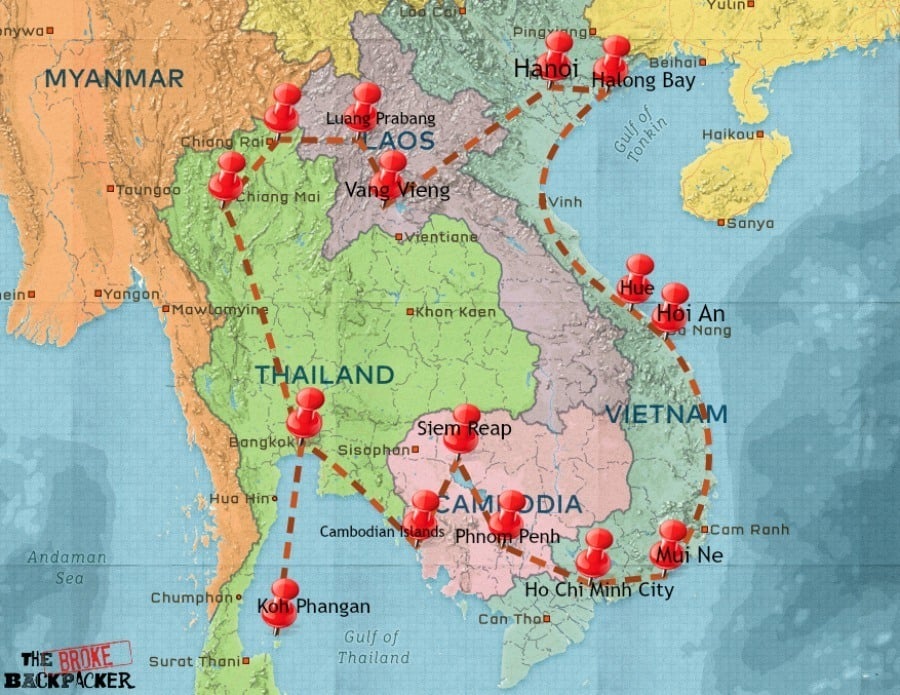
This backpacking itinerary takes you through the heart of what put Southeast Asia on the map. This is the juiciest of the banana pancake trail!
I would recommend flying into Bangkok and still kicking off your Southeast Asian travel with a bang. As you head north to the likes of Chiang Mai and the hippie village of Pai where there are lots of opportunities to creep off the beaten path.
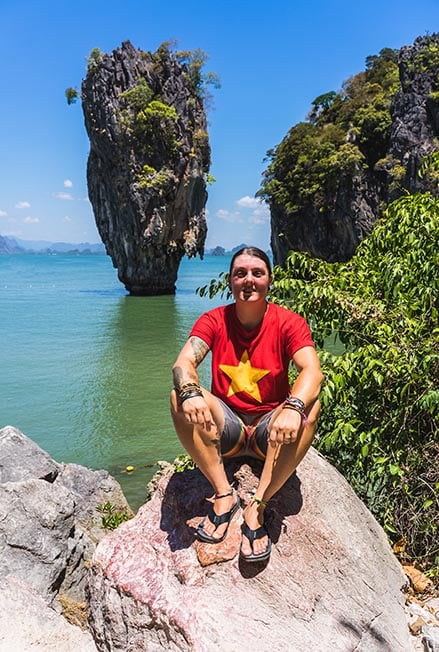
Explore the best of what Thailand has to offer before heading to Laos. Take the slow boat from Chiang Mai to Luang Prabang . If you have time, climb Mount Phousi , because daaaaaaaamn , those views are insane!
Laos receives a fair amount of backpackers, however far fewer than Thailand. The main attraction to Laos is its unmatched natural beauty, kind people, and rock-bottom prices. Vang Vieng is the main backpacker playground in Laos; this is the place where you can smoke a joint and eat banana pancakes all day. Tad Lo Waterfall is definitely worth the visit as well.
Vietnam is another classic stop on this route. Soak in the majestic views and cooler temperatures of the mountains in the north before heading south. Hire a motorcycle, explore the cities, go scuba diving, or hop around the islands.
Vietnam has THE best street food in all of Southeast Asia, so prepare your belly for bliss. From backpacking Ho Chi Minh to Hanoi there are ample rice paddies, bustling metropolises, and banh mi glory to enjoy!
Finally, travel to Cambodia and Angkor Wat en route back to Thailand’s southern beaches. Learn about Cambodia’s sobering recent history whilst exploring some of the most impressive temples and beaches in all of Southeast Asia.
You can finish your 3-month extravaganza with a full moon party on one of Thailand’s best beaches. Bottoms up! You deserve it.
6+ Months Backpacking Southeast Asia Itinerary: The Longterm Backpacker
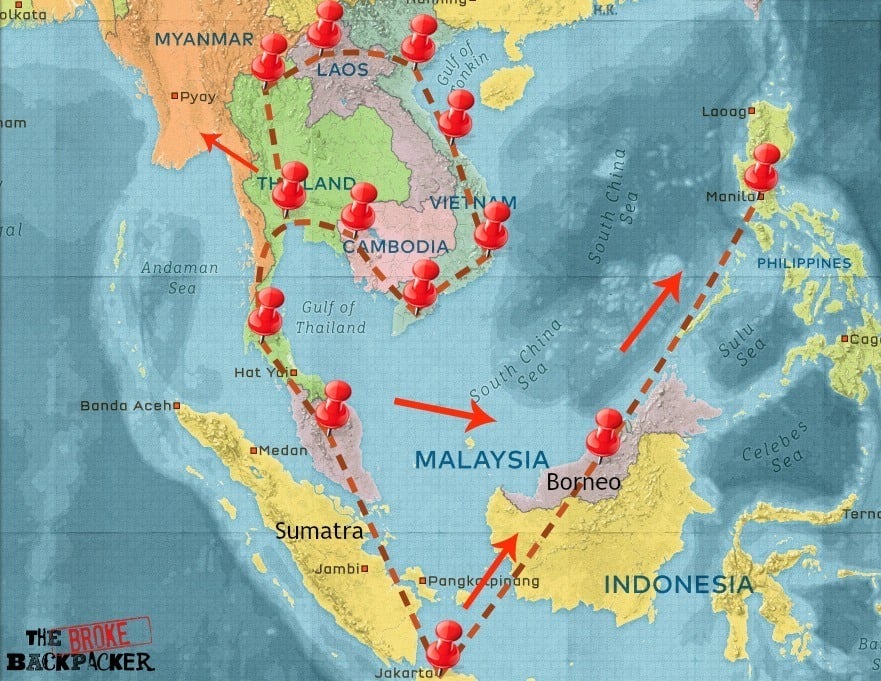
You will not be the first backpacker who loved backpacking Southeast Asia so much that you spent 6 months there followed by another 6 months followed by another cheeky 6 months. The longer you spend here, the more that the region opens up beyond parties on the beach.
Go trekking in Borneo! Get your ass to Indonesia and explore a few of the thousands of remote islands there! Hit up far-flung places in the Philippines! I will always vouch for travelling off the beaten path .
This itinerary would still have you flying into Bangkok AKA Asia’s Sin City. Backpacking Thailand is almost a rite of passage for those that backpack Southeast Asia. Now, while Thailand is crazy beautiful, you can experience a lot of Thailand’s best highlights in a month or less.
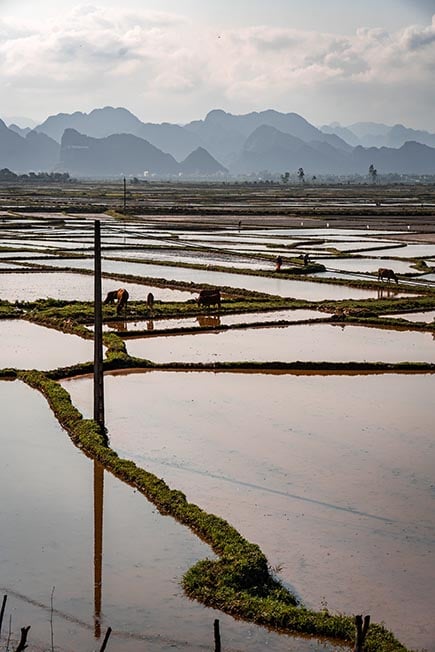
You can travel south to explore Cambodia and the Thai islands before crossing over into Northern Malaysia . Check out Langkawi Island before heading south. Staying in Penang is the best; it’s one of my favourite cities in Southeast Asia, with some great hikes and diving to be had around Penang National Park .
Alternatively, you can travel to Bali or Manila from Bangkok and explore a totally new part of Southeast Asia. Philippine highlights include climbing Mt Pulag , Sagada’s Crystal Cave and Olahbinan , Kalinga Jungle , El Nido for some climbing and partying, and Coron for epic scuba diving.
If you want to dedicate a couple of months to Indonesia you won’t be disappointed. Alongside the Bali to Flores route, you can also catch a flight to Sumatra . Here, visit the orangutan sanctuary in Bukit Lawang and the stunning Lake Toba .
Also on tap here is world-class diving at Pulau Weh . This tiny island is located at either the beginning or end of Indonesia, depending on which way you’re looking at the map. You’ll have to pass through the town of Banda Acehto to reach here, which is the only place in Indonesia that has Sharia Law in place. This definitely isn’t the place to come party while backpacking Indonesia, but the juice is worth the squeeze if you get to Pulau Weh.
Is this the Best Hostel in South East Asia?
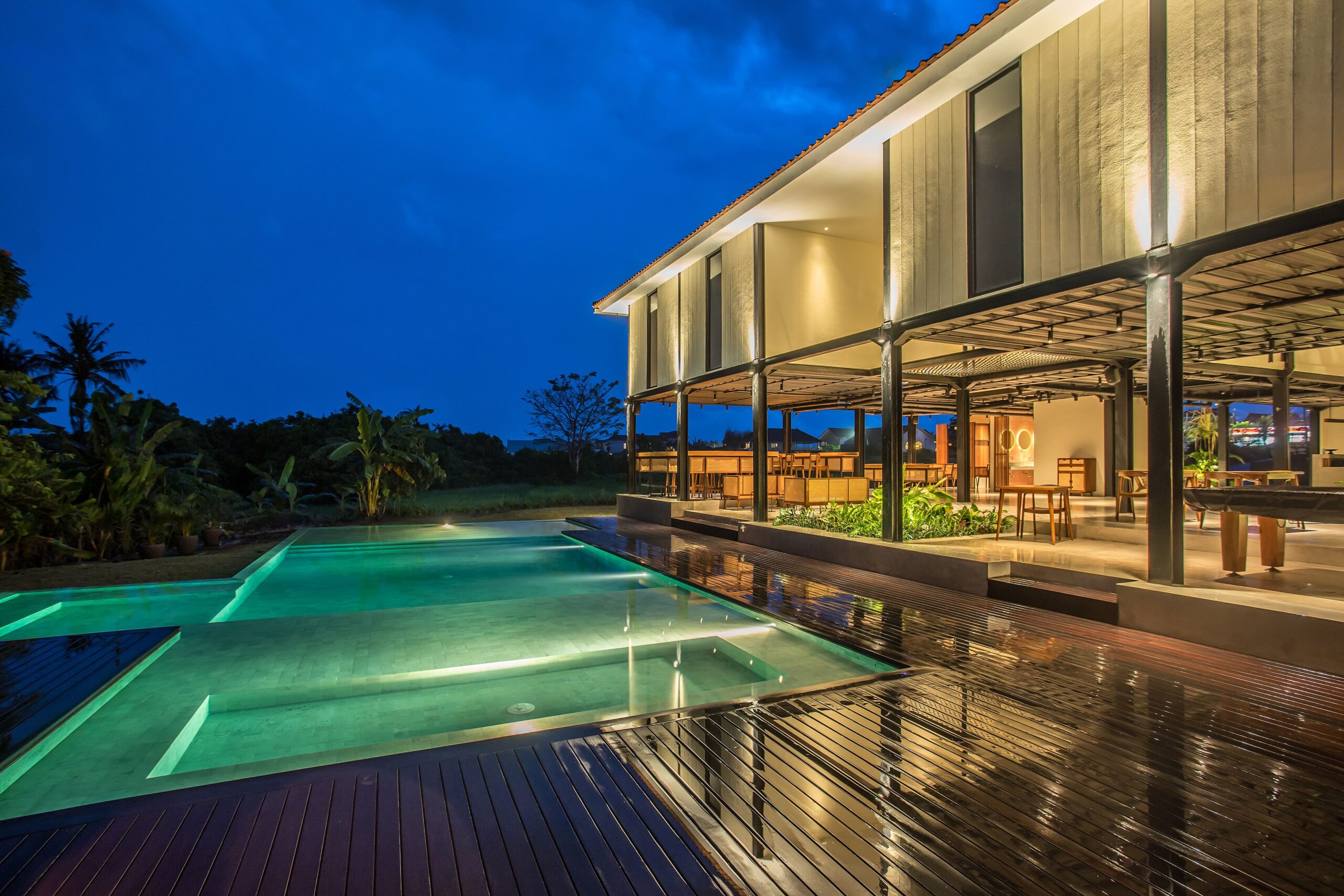
Tribal Hostel – Bali’s first purpose-built co-working hostel and perhaps the greatest hostel in the world!
An ideal hub for Digital Nomads and backpackers, this very special hostel is now finally open…
Come on down and enjoy amazing coffee, high-speed wifi and a game of pool?
Southeast Asia is truly massive .
There are 11 countries that comprise the Southeast Asian region; each one is special and also radically different in its own ways. You won’t even be eating the same food from country to country. Sure, it’s all mostly rice-based, but is it fried Nasi Goreng with an egg on top or is it laden with spicy green Thai curry?
The landscapes are even more varied with jungles, mountains, epic coastlines, and deserted islands all found in this region.
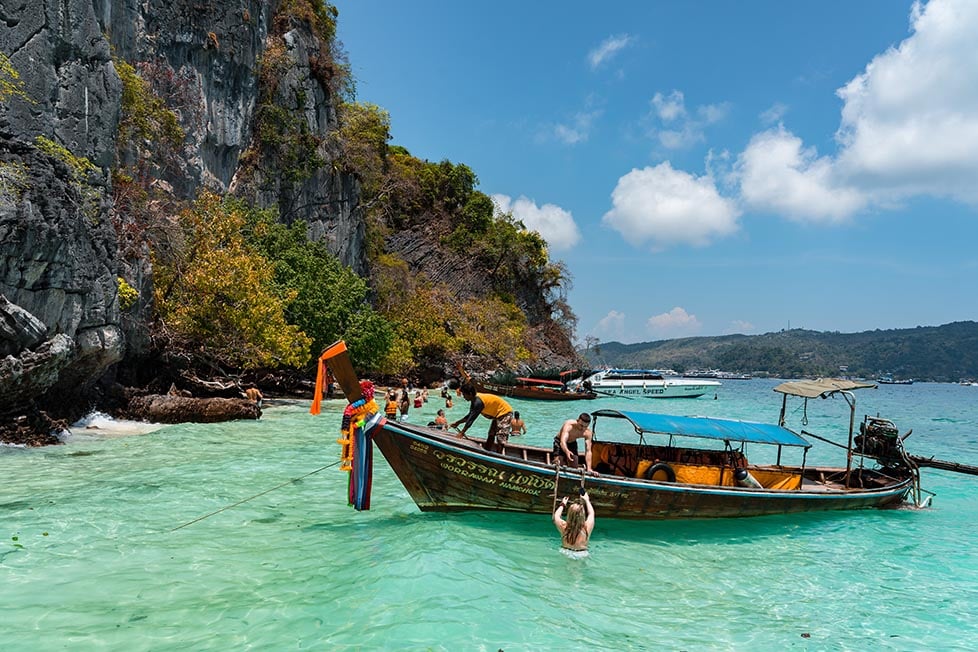
There’s something addictive to landing smack bang in the humid collection of markets, traffic, and skyrises that do crop up amongst all major Southeast Asian cities. Just visiting one or two of these countries will have you desperate to come back for more!
Backpacking Thailand
For many first timers, backpacking Thailand is the image at the forefront of their imaginations when it comes to destinations in Southeast Asia. Those white sand beaches, turquoise waters, and towering jungle peaks are sprinkled with a little hedonistic fun and low, low prices.
Finding a Thailand backpacking route is easy, as many routes are well-established and there are plenty of backpackers on the ground to grab tips from. You just never know who will suggest an epic street food vendor where you find spicy watermelon, or who will give you the heads up that certain roads have become notorious for police asking for bribes.
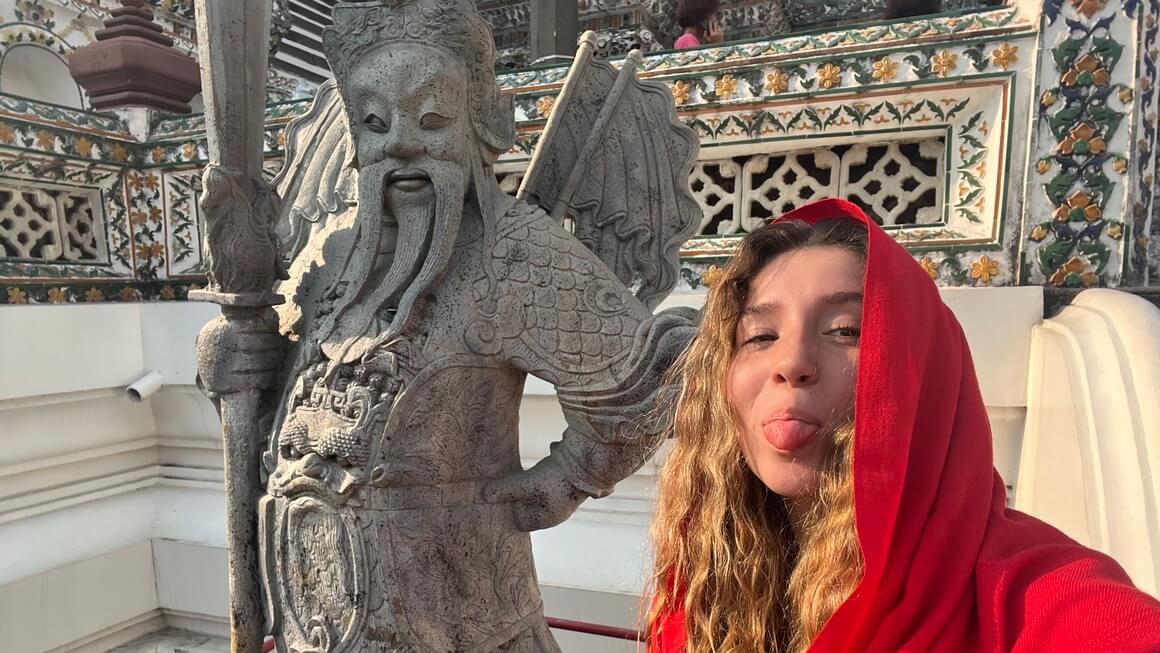
In addition to its natural splendour, Thailand boasts some of Southeast Asia’s most dynamic cities, especially if you are wanting to settle in somewhere as long term as a digital nomad. In fact, Thailand is rapidly becoming the digital nomad capital of the world. While being a digital nomad changes your travels , it can be incredibly rewarding – especially if you’re surrounded by a group of like-minded people.
Thailand receives more visitors annually than any other Southeast Asia nation by a long shot, so it’s not super easy to get off the beaten path. That being said, if you drive far enough north, you’ll stop seeing tourists and start seeing covert drug smuggling routes. I’m not suggesting that drug smuggling routes make the best adventure – especially for first-time backpackers – but if you happen to find work as a fresh-faced, aspiring journalist, then this country is definitely still full of stories.
There are also some lesser-known hikes nearby Chiang Pai – plus the motorbike riding around there is amazing . Just be aware of elephant experiences–the vast majority are unethical, so make sure you do your research and only visit TRUE sanctuaries like Elephant Nature Park.
What to Know Before Visiting Thailand
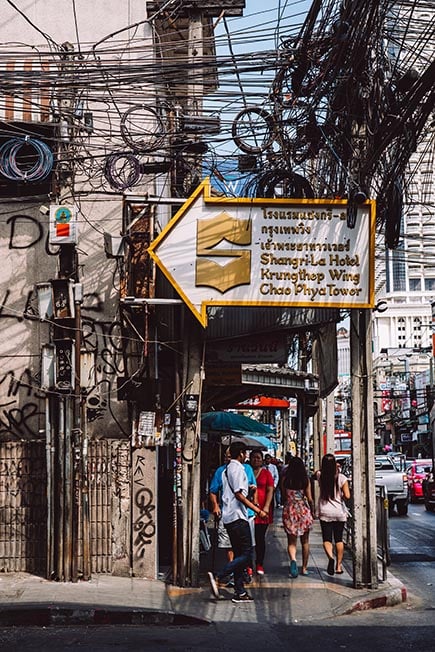
- Don’t miss out on… the North – this is the REAL Thailand! Sure, those Southern Islands are beautiful and full of some cheeky debauchery, but if you want to get off the beaten path then you need the jungle mountains of the north.
- You know what’s overrated… the Full Moon Party on Koh Phangan – it’s pretty sloppy here, not to mention hectic. The Eden Party is way better.
- The coolest hostel is… Get Hi Hostel in Chiang Rai is a The Broke Backpacker favourite! Especially if you’re travelling solo through Thailand, it’s a perfect place to find your tribe.
- The best food is found in… Bangkok. If you find yourself craving a cheesy pasta or fat steak you won’t be disappointed in this city! But even better (in my opinion) are the endless side alleys and markets selling incredible street food. Spicy watermelon, pad thai style noodle salads, and soups so spicy you’ll sweat out your demons… YES, please!
Backpacking Vietnam
Over the last few decades, Vietnam has charged to the head of the line as a top destination for backpackers. Delicious cuisine, cheap places to stay, epic ancient temples, and mind-boggling motorbike routes are just a few of the draws that make up the charm in Vietnam.
If you are wanting to explore Southeast Asia by motorbike, then Vietnam is the best place to go. The country is long and thin, so it’s perfect for a road trip and bikes with Vietnamese plates can enter most other countries in Southeast Asia (this is pretty unique).
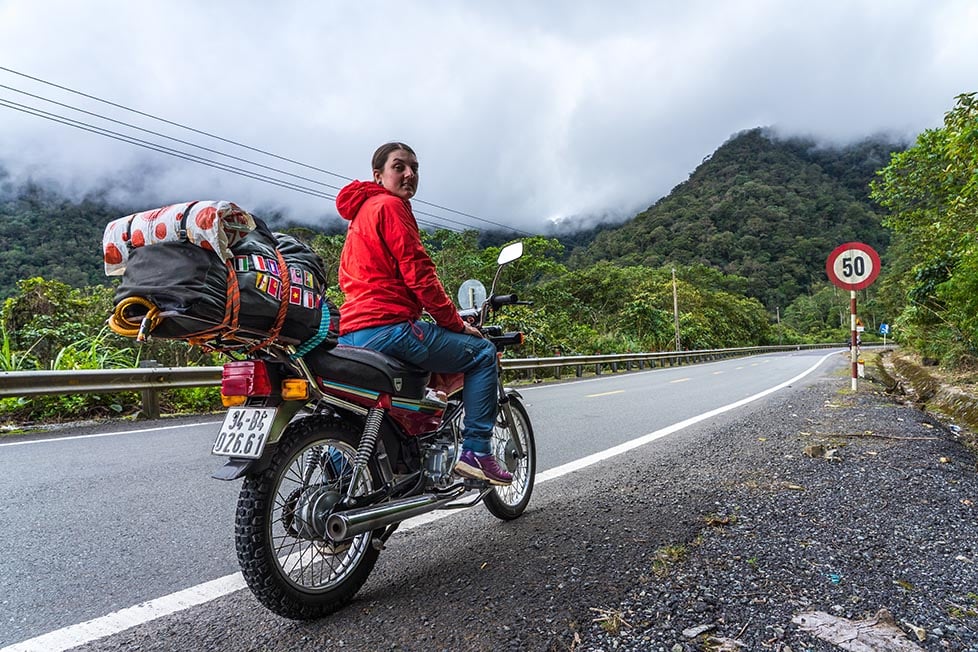
Vietnam has the feeling of a country that’s leapt into the future so quickly that its countryside is buffering to catch up. When exploring Hanoi , Ho Chi Minh City, or any of Vietnam’s big cities you’ll find skyscrapers and high-speed internet. There are underground music scenes and students who deal a little weed on the side to ex-pats. The streets are thick with motorbikes.
Then there’s the countryside: rolling green rice paddies, straw hats, and shacks. The mornings are long and slow, the evening is full of the sound of insects. Fields are thick with buffalo herds. And yet, both sides of Vietnam are united by their incredible food.
Pho might be the most famous noodle broth, but it’s far from the only tasty meal. Vietnam knows how to make a meal out of very little and they know how to make it taste good . Most backpackers will at some point indulge in a 3 am banh mi after a big night out and know what I mean!
What to Know Before Visiting Vietnam
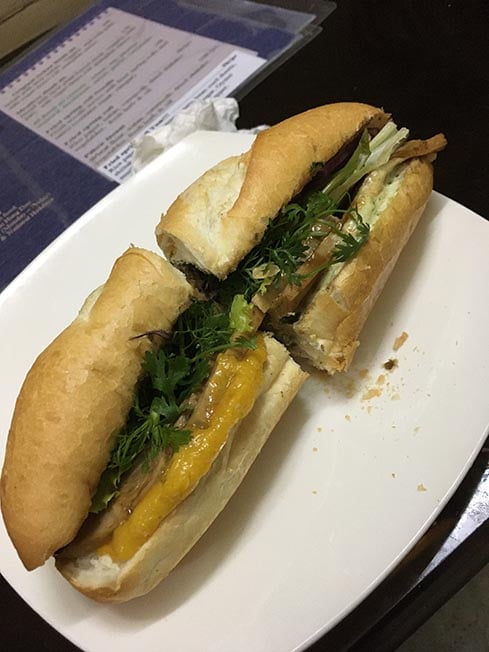
- Don’t miss out on… the Ha Giang Loop by motorbike . This one of the hidden gems of Vietnam that takes you through towering jungle covered mountains on windy, delicate roads. This is not for the faint hearted or ill prepared. This is a real adventure!
- Look out for… those bamboo pipes in the north – they’re used for smoking local tobacco and hit HARD. You might risk lung cancer, but all in the name of experiencing the local way of life, right?
- The coolest hostel is… Redhouse Dalat . It’s easily one of the most beautiful hostels I’ve ever stayed in and the owner, Linh, is an absolute gem!
- The best food is found in… Hue – it’s well known for its Central Vietnamese plates. I had quite possibly the best meal of my life here (definitely top 10, anyway). In a back alley, crammed into plastic chair far too small for me, I sampled the legendary Bun Bo Hue… I never knew noodles and broth would make me want to become a foodie.
Backpacking Laos
Laos is truly a special country in Southeast Asia and one that has managed to retain its easy-going identity in the era of mass tourism. Wild jungles, river deltas, smiling locals, and amazing treks make Laos the backpacking paradise that it is.
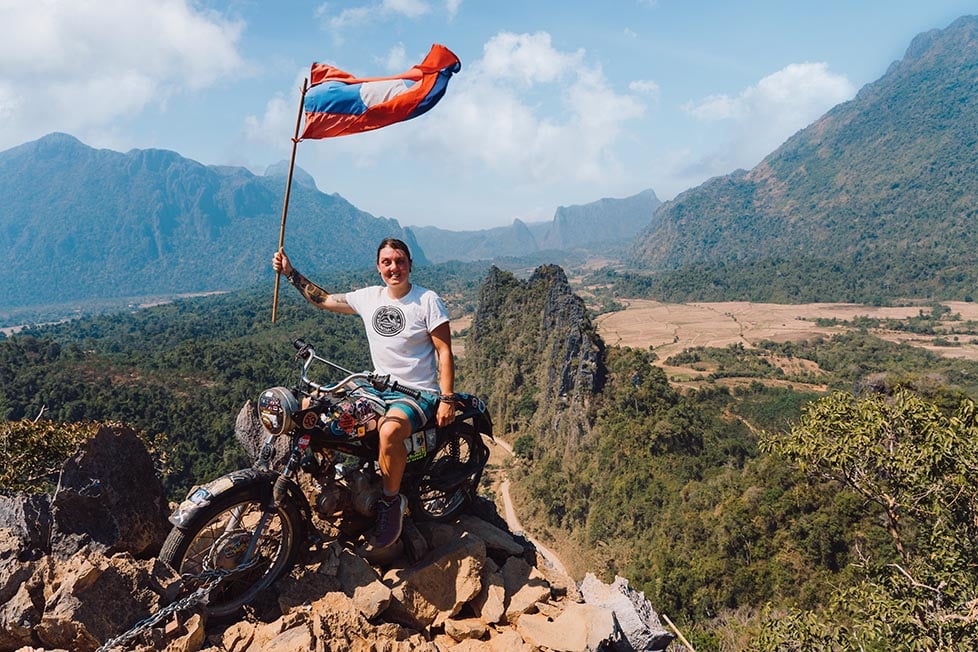
Places in northern Laos, like the areas in and around Luang Prabang , experience cooler temperatures in the mountains and rainforest. The south is more of the agricultural heart of the country.
Each area holds a lot to explore for backpackers. Laos is the perfect country for backpackers wanting to experience Southeast Asia within a short time frame as you can get in a bit of all climates, different cultures, and party vibes.
One can easily see the highlights and experience the country off the beaten path in 2 weeks to a month. Take it easy though. Laos is a country that is not to be rushed through. Plus, going slow means you might just end up on the 420-friendly river island– Don Det –just like I did!
You will see when you get your boots on the ground that nothing happens quickly in Laos anyway… This is a land of chill .
What to Know Before Visiting Laos
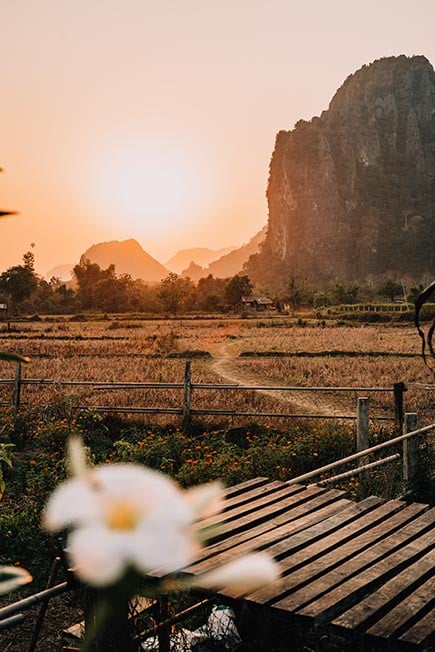
- Don’t miss out on… the mountains around Vang Vieng. Lots of people neglect exploring these in favor of tubing the river. The river party scene in Vang Vieng is diminishing anyways.
- You know what’s overrated… Luang Prabang. In recent years, it’s become very touristy and a bit disingenuous. The nearby waterfalls are still cool though.
- The coolest hostel is… Vang Vieng Chill House . It encompasses all the things I love most about hostels: chilling and good vibes. It gets a little noisy sometimes but it’s a great place to meet people.
- The best food is found… on the streets! The street food in Laos is absolutely top-notch.
Backpacking Cambodia
The temples at Angkor Wat are an obvious draw for those backpacking Cambodia and are truly impressive. Cambodia is a country rich in culture, beautiful beaches and islands, the Mekong River Delta, and bustling markets.
The nation of Cambodia is a country still pulling out of an extremely dark, recent past. A staggering 1.5 – 3 million people were killed by the Khmer Rouge, led by tyrant Pol Pot. It happened only 35 – 40 years ago and is still very fresh and raw to the Cambodian people.
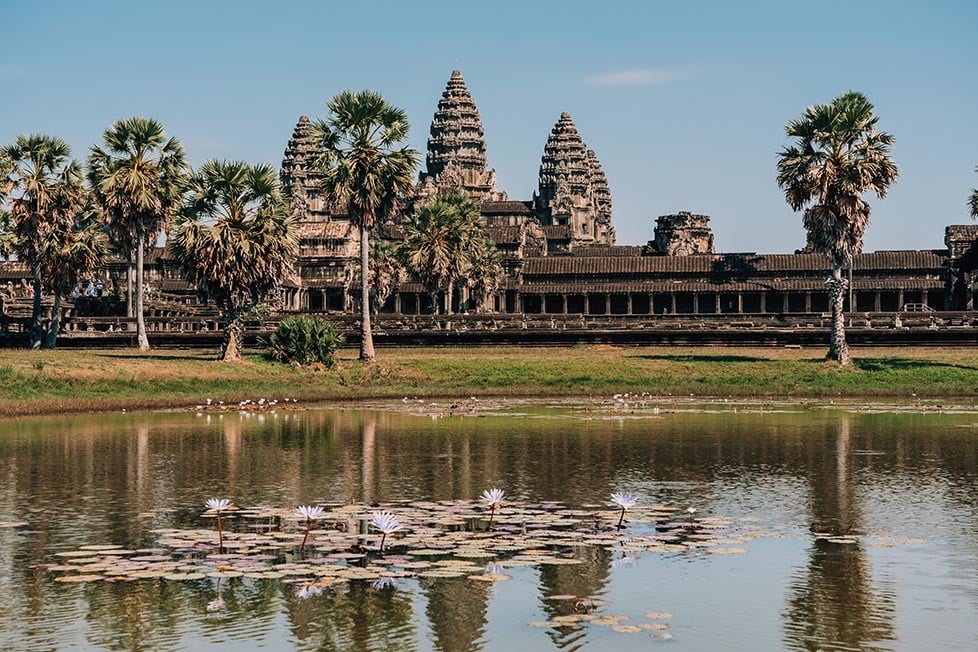
Despite the tragic history, the local Khmer people are some of the kindest humans in the world. The country is still recuperating, rebuilding, and moving forward, however, corruption is hindering its rehabilitation.
There is a strange energy in the air in Phnom Penh sometimes. It can be quite tense and stifling amongst the humidity. It’s as if everyone is waiting for the other shoe to drop and for chaos to return.
This is a country that makes you think about how lucky you were to be born into a country of peace. And I think that it’s important amongst the wild nights partying in Cambodia that you pause and really learn something from the lands you’re travelling in.
Cambodia is one of my favourite Southeast Asian destinations to travel to; I loved it so much that I ended up overstaying my visa. From the awesome hostels , cheap prices, and epic off-the-beaten-track travels, Cambodia seriously has it all. See it for yourself and you’ll fall in love too.
What to Know Before Visiting Cambodia
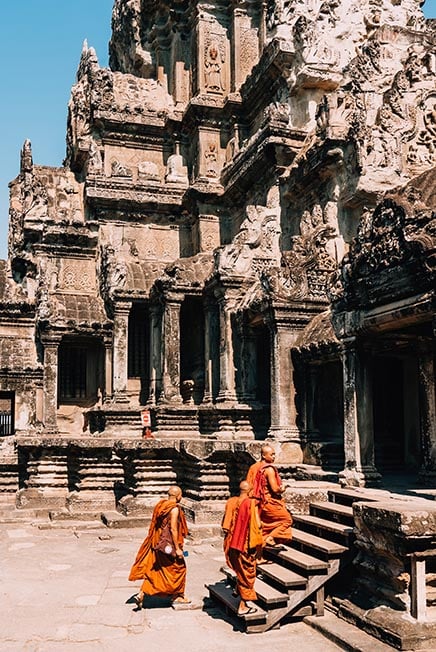
- Don’t miss out on… the Killing Fields and Tuol Sleng. One of the most sobering places in Southeast Asia and a refreshing change of pace.
- Keep an eye out for… temples other than Angkor Wat. Cambodia is full of Khmer ruins, like Koh Ker. You can spend days getting lost in the ruins of an empire past.
- The coolest hostel is… Yellow Star Hostel . It’s the kind of place you extend your stay for as long as your Cambodia itinerary allows.
- The best food is found in… the outdoor food market in Siem Reap. Most of the backpacker accommodation is conveniently located around here so it’s simply a matter of walking down and gorging yourself silly!
Backpacking Myanmar
Oh, Myanmar. For a few years between roughly 2011 and 2019, backpacking in Myanmar really took off as the country instituted democratic reforms and started to open up to the world. There was even a fear that in opening up to the world too quickly, Myanmar would lose some of its authenticity and charm.
I want to stress that I love Myanmar. I love the country and I love the people. I travelled there through some of the remote Northern regions. I caught the dilapidated trains, hitchhiked with monks, and even publically pooped my pants on a public bus after some dodgy food.
The temples are second to none, the food is cheap and delicious, and the countryside is beautiful .
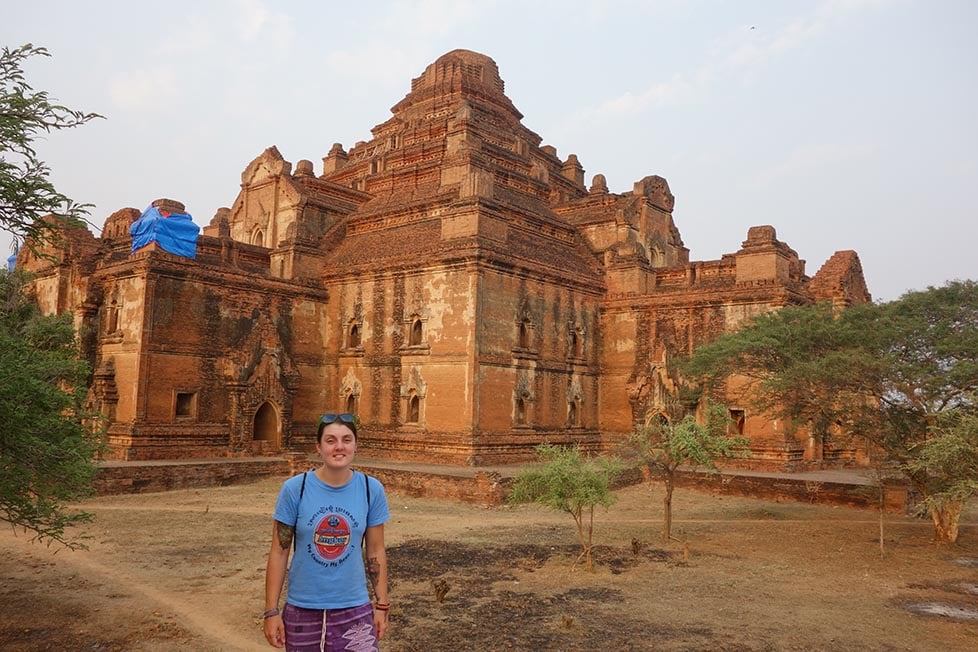
But, the seeds of what has happened to Myanmar had been sown many years before. You can trace the military take over and crackdown back to the consequences of British rule back in Imperial times. There was a lot of tension during the decolonial period too with the government shirking a lot of international aid and joining any international forums.
This isolationism was intensified with the first military coup of the 1960s. This was the same military that was loosening the reigns during the 2010s that allowed a few of us to explore what truly is one of my favourite countries on the planet.
The tensions with the various ethnic groups on the borders never went away though. And neither did the military. As of early 2021, Aung San Suu Kyi (the former democratic leader) has been imprisoned and political dissenters shot and jailed as the military clamps down on control again.
I couldn’t in good conscience advise anyone to go backpacking in Myanmar at this time. But I don’t want to strike this country off the map entirely. The people deserve better than that.
It’s probably not the place of a travel guide to tell you to support democratic movements – especially not ones that are as flawed as Aung San Suu Kyi’s – but I think it’s fair to say that the moment it’s safe. Go backpacking Myanmar!
February 2023 Update : In the past few months, Myanmar has reopened its e-visa program and is officially “open for tourism.” Many travellers have reported successful and problem free trips, BUT it’s still important to proceed with extreme caution. Though the political situation has stabilized, there is the chance of getting stuck in the country.
What to Know Before Visiting Myanmar
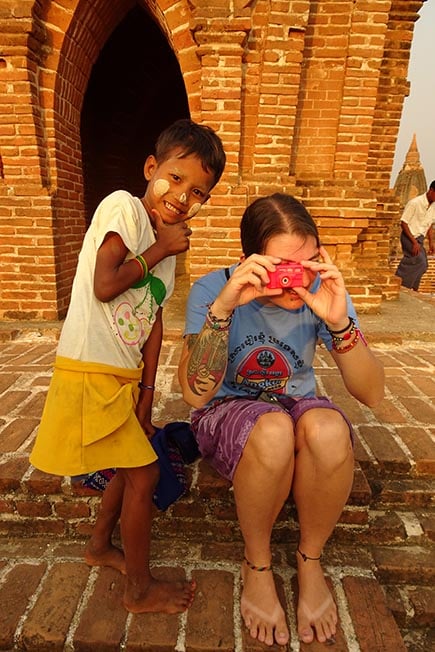
- Don’t miss out on… Bagan. There are touristy spots in Bagan, however, the scope of the area is immense. Riding an e-bike to a secret place and setting up for sunset is the way to go. There are so many side roads and off the beaten path ruins here that you’ll find something special.
- You know what’s overrated… Inle Lake. Super beautiful, super touristy, and super expensive. Visit, then shoot through for some of the mad trekking in the nearby regions.
- The coolest hostel is… Ostello Bello . These guys are a solidly run hostel chain that will have your back and provide a place of comfort while travelling Myanmar.
- The best food is found in… Mandalay. I actually love staying in Mandalay , and the aromas drifting from the nighttime street food market is a big reason why! It’s a big city so there’s a lot
Backpacking Malaysia
I absolutely LOVE backpacking in Malaysia. Somehow, Malaysia has managed to stay below the radar of many travellers on the Southeast Asia backpacking circuit. To write off Malaysia as uninteresting would be a mistake: Malaysia should be your next backpacking destination!
For one, I found Malaysia to have some of the lowest prices in all of Southeast Asia. The country is extremely clean, the roads are in great shape, and the people speak decent English. Malaysia is also a majority Muslim country, which I found to be an interesting contrast to the Buddhist majorities of the countries to the north.
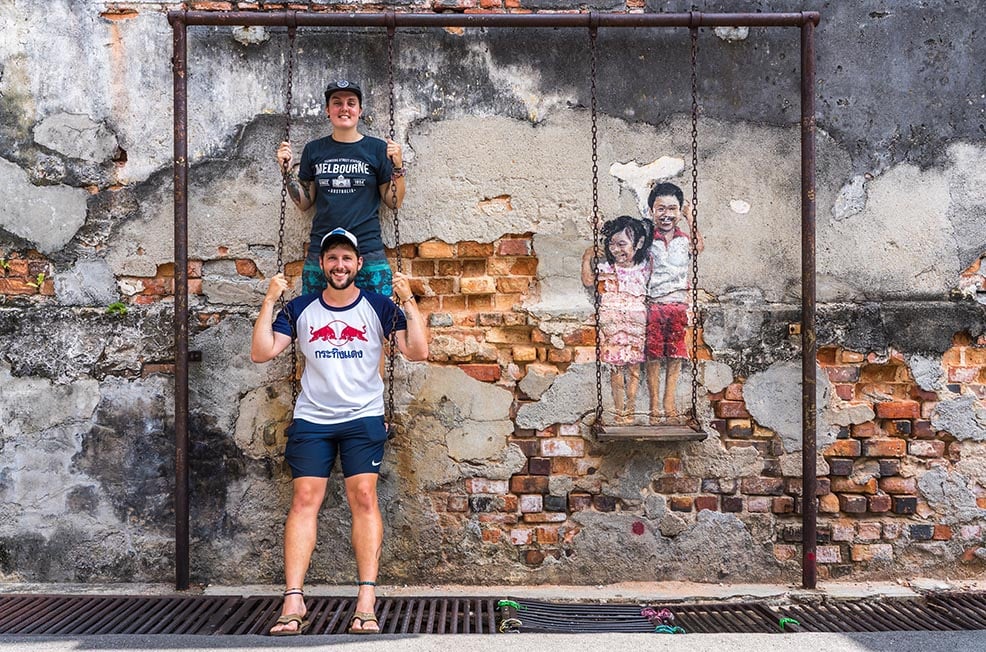
Tioman Island is one of Southeast Asia’s best-kept secrets. Getting your PADI open water certificate is cheaper on Tioman than anywhere in Thailand. Also, diving is better – in my opinion. The coral reefs are not experiencing the same level of bleaching as they are in Thailand. I saw plenty of turtles, sharks, and more vibrant reef systems generally.
Malaysia is also home to one of the world’s oldest rainforests at Taman Negara . So alongside some of the most vibrant and developed cities in Asia are some of Asia’s most wild and unruly jungles! And, if that wasn’t enough, Malaysian food is seriously delicious.
Then there is Malaysian Borneo . Parts of Borneo are surprisingly well developed. That said, there are giant swaths of the island that are still wild and teaming with rhinoceros, orangutans, and other rare wildlife. The trekking here is of the old school, beat your way through the jungle variety! Malaysia has incredible adventure opportunities for those willing to get well off the beaten path!
What to Know Before Visiting Malaysia
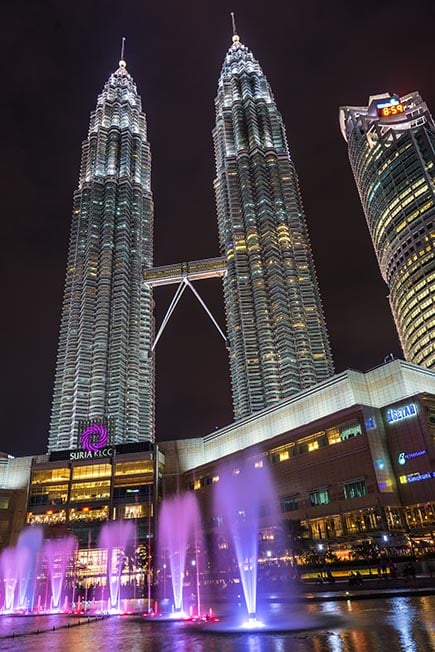
- Don’t miss out on… Borneo. It’s such an overlooked destination but there’s so much cool stuff going on here. Get a tattoo in Kuching!
- Look out for… hidden speakeasies in Kuala Lumpur’s Chinatown. They’re VERY well disguised, and absolutely worth it! Being an Islamic country, it’s harder to get alcohol here but where there’s a will there’s a way.
- The coolest hostel is… Best Attitude Hostel Cenang . This hostel has great social events running all the time – even if the karaoke makes me cringe!
- The best food is found in… Penang. Whilst ALL the food in Malaysia is good, Penang takes top honors. Seriously, those soups had me in a proper food coma.
Backpacking Singapore
Singapore is the smallest country to make our list. This tropical island city-state nation might be a blip on the map, but it is a regional economic and cultural powerhouse.
Backpacking Singapore has the reputation of being an expensive place to visit in Southeast Asia. Whilst Singapore is certainly more expensive when compared to its relatively cheap neighbours, there is still plenty to do for backpackers on a budget.
Some of the best street food in the world can be found amongst the food stalls of various markets. Singapore is a multi-cultural melting pot, so it is possible to taste the influences of many different cultures in a single dish. Rub elbows with locals and chow down on some epically delicious cheap eats.
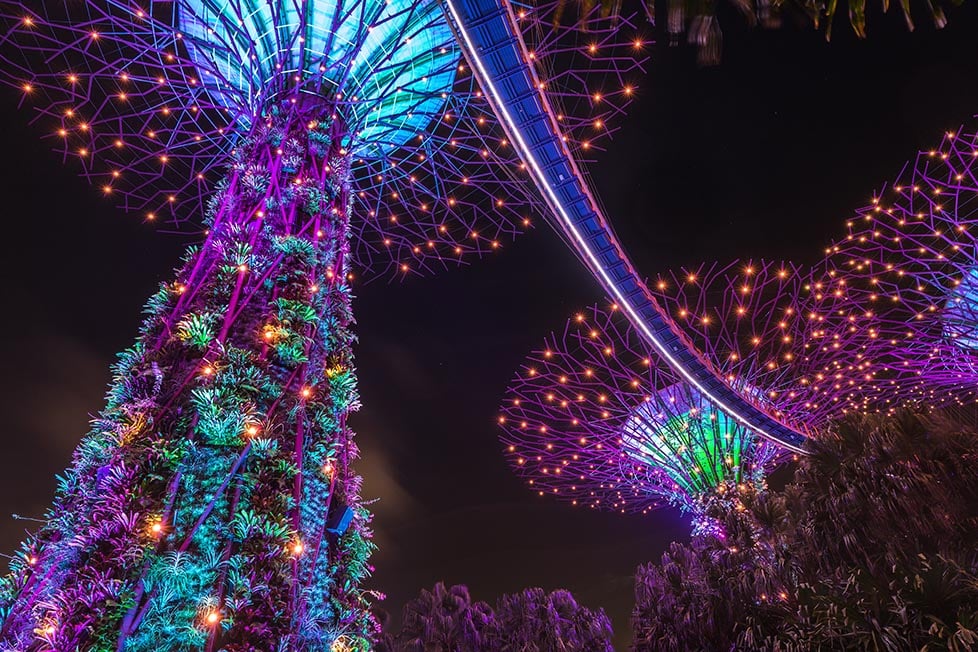
Visit Chinatown , explore Arab Street , and be sure to grab a curry in Little India . Just based on the neighbourhood names alone, you can gather that many ethnic groups are represented across this city-country.
If you are visiting Singapore for longer, be sure to check out the nature reserves surrounding the city. Few people realize that just outside of Singapore’s urban centres there are some great day hikes to be had in the surrounding jungle. There’s also plenty of local life to be experienced beyond the neon landscape.
Singapore is a city that has something for every backpacker. Whether you are just passing through or coming specifically to backpack Singapore, you can be sure that there is always something awesome (and tasty) to get into here. It’s wildly different to other countries within the region, and yet there are glimmers of something similar. You’re sure to love it!
What to Know Before Visiting Singapore
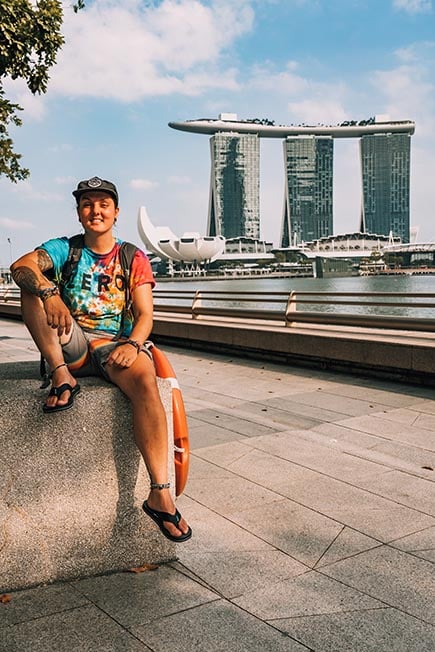
- Don’t miss out on… the hawker centres (cafeterias). When you’re in Singapore, you EAT. The food is incredible.
- You know what’s overrated… Sentosa Island – it’s just Disney World with a fake beach. And you know what’s worse than hoardes of people? Paying to be around hoardes of people.
- The coolest hostel is… The Bohemian . This colourful little corner of Singapore makes my heart sing… apore.
- The best food is found in… Maxwell Food Centre. This is the most famous hawker centre in Singapore. In fact, the world’s cheapest Michelin-star restaurant is here! But aside from that, there are countless delicious options. There’s little wonder I ended up a couple of kilos heavier after backpacking in Singapore!
Backpacking Indonesia
As a vast archipelago nation composed of over 17,000 islands, Indonesia is one of the most fascinating countries in the world. The country is so big and so spread out that exploring it can feel overwhelming.
Backpacking Indonesia is an adventure like no other. For starters, you can climb active volcanoes, encounter orangutans in the jungle, visit ancient temples, and enjoy spectacular diving.
All along the way, you’ll be welcomed in by some of the most friendly people out there while you enjoy the varied and delicious cuisine. Best of all, you can easily backpack Indonesia on a budget.
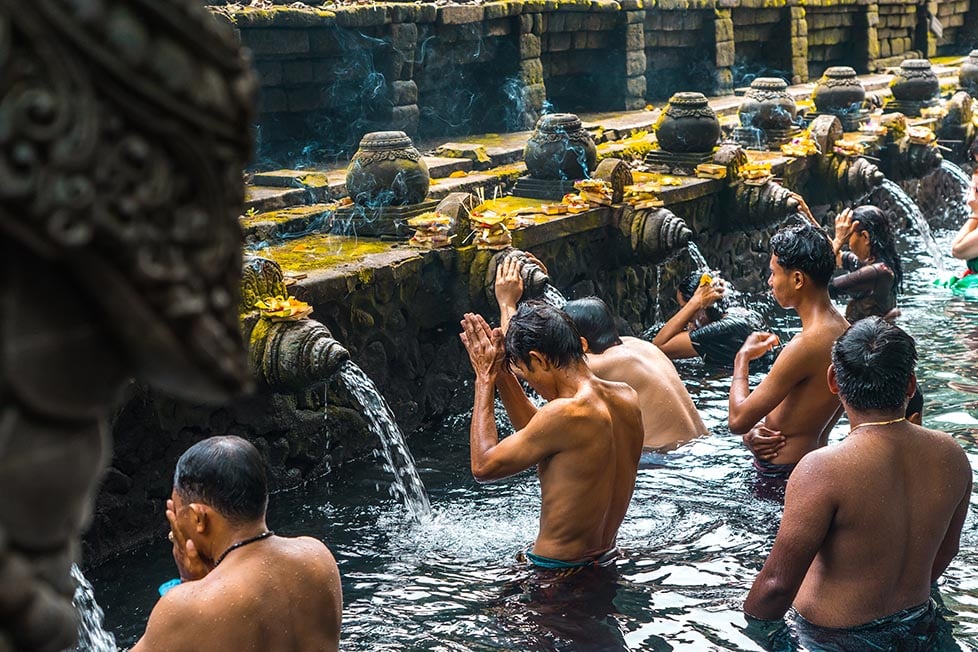
Bali is definitely the backpacker magnet of Indonesia and for good reason. Along with a blossoming digital nomad scene and tons of epic places to see, Bali is also surf and party central. If you are wanting to become a yoga teacher, there are countless programs being offered all across the island.
It’s worth staying in Bali for some time, but be sure to visit some of the other islands as well. Though fun, I would argue that Bali is not at all what the rest of Indonesia feels like. The country is jam-packed with off the beaten path exploration potential.
17,000 islands bro! Get yourself out there and explore some of them and you will quickly fall in love with this massive island nation. Because the real Indonesia is well outside of Bali.
The streets of Jakarta are a hot mess of traffic and street food contrasted with towering skyscrapers. The outer islands are deserted. There are jungles and villages as much as there are modern cities.
What to Know Before Visiting Indonesia
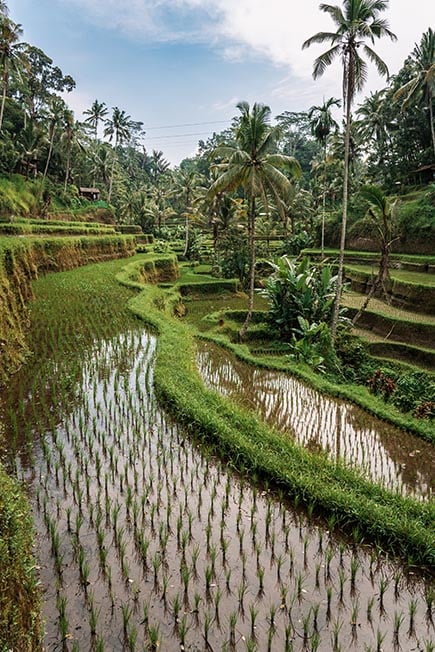
- Don’t miss out on… island hopping. Backpacking Nusa Penida , Derawan, the Kai Islands, Wakatobi; these are some of the best, but there are many more to see.
- You know what’s overrated… Kuta, Bali. Avoid it like the plague. Drunk Australians and piles of garbage. Plus, the tourists have made many of the locals suspicious of travellers. Not a vibe.
- The coolest hostel is… Tribal Hostel . Super cool, open and tropical, you won’t find a better place to stay than Tribal. In the quiet area of Pererenan Bali, and with a huge coworking space, Tribal has it all!
- The best food is found in… Jakarta. This city takes satay to a whole new level. Be sure to try as many satay sticks as possible – and Nasi Goreng, of course.
Backpacking The Philippines
Cheap beer, beautiful beaches, adrenaline-pumping activities, and some of the most friendly, genuine, people in all of Asia; the Philippines truly captured my heart. I made some incredible friends in the Philippines and I have to say, it is one of the easiest countries in the world to travel around as the locals are so friendly.
Getting around the Philippines as a backpacker and finding a sweet and cheap place to stay (and a sweet and cheap thing to eat) is breezy.
There are thousands of islands to choose from. This translates into EPIC scuba diving, a great place to learn to snorkel and to go fishing. If you have never learned to spearfish , you should absolutely give it a go. Spearfishing doesn’t get much better than in the Philippines where the visibility is insanely good!
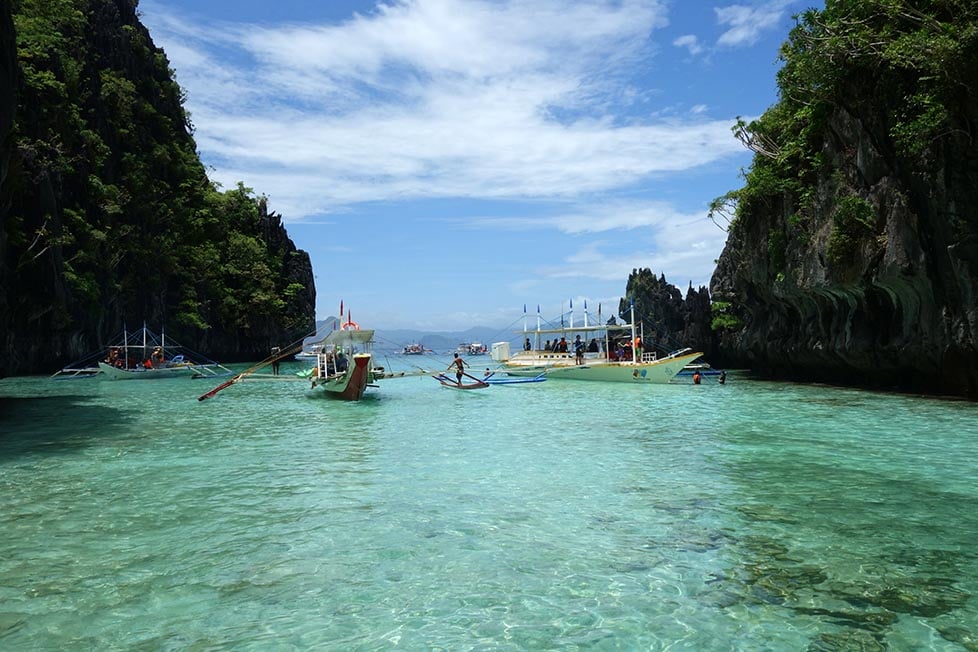
If you love trekking like me, then you will be pleased to find some epic hiking opportunities in the Philippines. Caves, rivers, mountains, you name it, one can find all the outdoor playgrounds here. There are heaps of adventure opportunities in The Philippines if you’re equipped for the job!
There are endless trekking options in the Philippines: remote hill hikes and active volcanoes, gentle strolls, and multi-day backpacking trips. Some popular treks include Cordillera and its rice terraces and trekking Mt. Pulag .
Not too far from here you can reach Sagada (and my saucy Sagada travel guide ) and hike in the hills. Bohol and the Chocolate Hills are a great place to trek as well. The Philippines is home to 25 active volcanoes that can be climbed to the summit!
If you’re a fan of a party then you’re in the right place as festivals in The Philippines are some of the most lively events you can experience as a traveler, and a wonderful way to immerse yourself in the culture of such a diverse country.
What to Know Before Visiting the Philippines
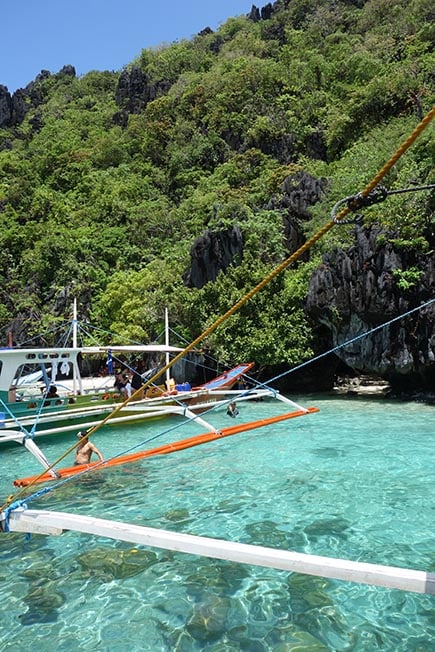
- Don’t miss out on… El Nido. It’s utter paradise, the stuff of dreams and legends. Stay here forever if you can.
- Look out for… crowds at Baguio. It’s becoming one of the most popular places in The Philippines; let’s hope it doesn’t become TOO popular.
- The coolest hostel is… Mad Monkey Hostel Siargo . The MM chain is somewhat legendary – but this one is my favourite.
- The best food is found in …hard to say, really – there’s just so much diversity when it comes to Filipino food . Suckling pig in Cebu, empanadas in Ilocos, bulalo in Tagaytay; nothing really beats adobo made by a local grandma though.
Getting Off the Beaten Path in Southeast Asia
Once you have your boots on the ground, the Southeast Asia backpackers circuit will be as obvious as the stars in the night sky. Backpackers generally don’t venture too far off of the so-called Banana Pancake trail.
That said, if you are a keen and adventurous type, there are many parts of Southeast Asia that are untouched by backpackers to this day. Many regions are very wild and make for endless exploration opportunities.
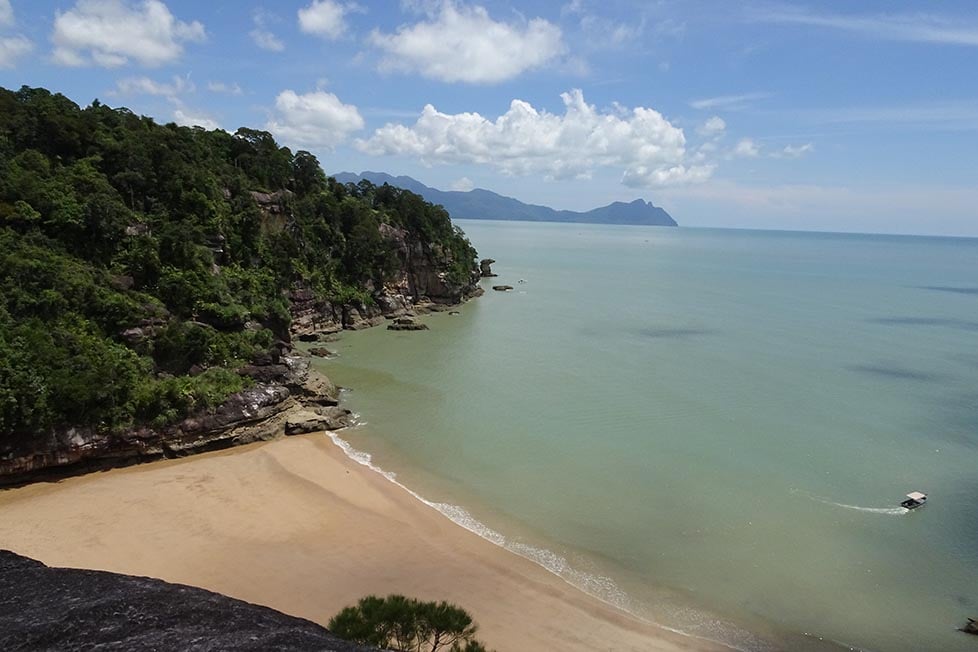
Additionally, there are islands in Southeast Asia (think Indonesia) that are so damned remote, few westerners have ever been to them. Have fun on the Banana Pancake Trail, but don’t forget to dip out once in a while to truly explore.
For starters, I’d suggest trekking in Borneo or taking a long motorbike excursion to the Vietnam-China border. These are two wildly different types of adventure, but they hint at the wild times you can forge for yourself if you avoid other tourists like the plague.

We’ve tested countless backpacks over the years, but there’s one that has always been the best and remains the best buy for adventurers: the broke backpacker-approved Osprey Aether and Ariel series.
Want more deetz on why these packs are so damn perfect? Then read our comprehensive review for the inside scoop!
Southeast Asia is an adventure playground. It is a backpacker paradise and a place teeming with awesome budget adventures. There will certainly never be a day where you are bored for lack of things to do in Southeast Asia. Let’s dive in and take a look at some of the radical adventures that await you in Southeast Asia…
1. Jungle Trekking
There is some great jungle trekking in Northern Thailand, Malaysia, Laos, Vietnam… Hell, in every country in Southeast Asia, really! If you choose to go trekking make sure to go on a multi-day hike. Personally, I prefer trekking in Laos, and I had an epic experience in Myanmar back when it was safe to travel through.
I would love to explore more of the remote corners of Indonesia and Borneo too – the options to go jungle trekking in Southeast Asia are really limitless!
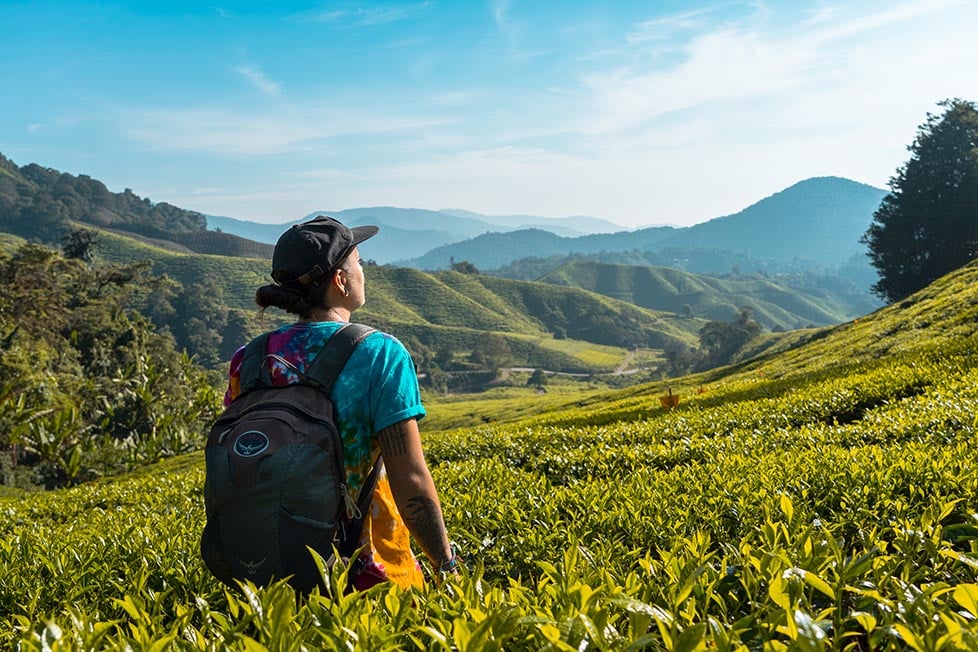
2. Scuba Diving
Many backpackers fall in love with scuba diving whilst in Southeast Asia. Thailand, Malaysia, and Indonesia offer incredible diving opportunities in crystal clear waters with abundant marine life and plenty of wrecks for the underwater adventurer. The cheapest place to learn is the island of Kao Tao in Thailand and the islands in Malaysia.
If you’re not up to learning to dive, you can always learn to snorkel too. But with the affordable prices of Asia combined with the excellent visibility, you can’t really go wrong!
3. Motorcycle in Southeast Asia
Perhaps there is no better way to explore a country than by motorbike . You’re truly free to design your own itinerary and take every side alley that takes your fancy.
Plus, you become part of the landscape when you’re riding. There aren’t windows of a bus separating you from the buffalo or the mountain.
But there also isn’t much of anything to protect you if you fall off. So I’d suggest wearing proper riding gear and having insurance. That way, you’re free to enjoy the jungle roads, the epic peaks, and the offbeat camping destinations that Southeast Asia has to offer with some peace of mind.
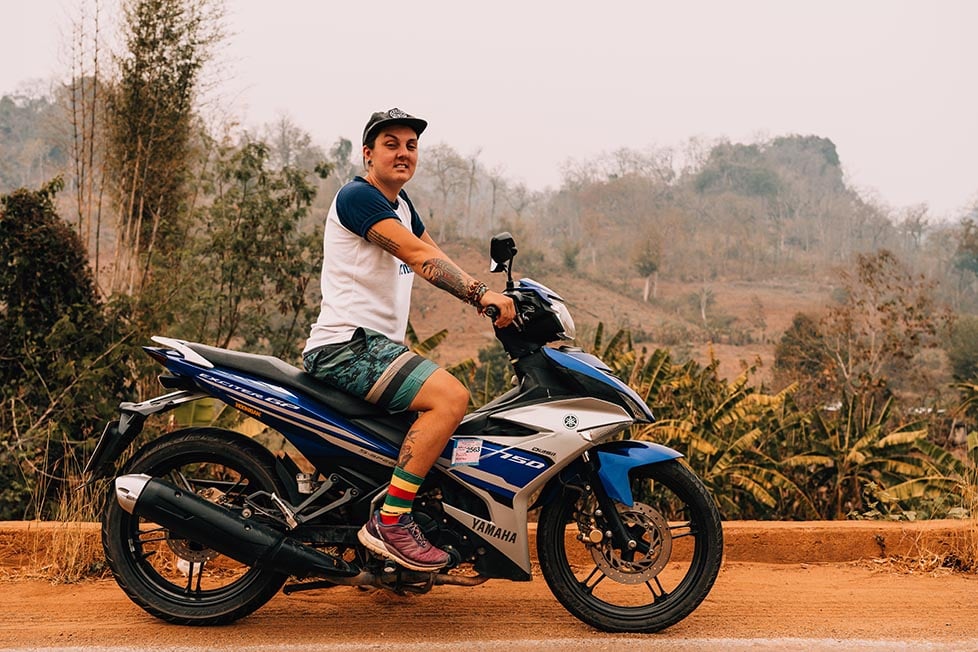
4. Learn To Cook
Love the hell out of Southeast Asian cuisine? Me too!
Taking a cooking class whilst visiting a Southeast Asian country will supercharge your cooking skills. You will be preparing delicious meals for years down the line that remind you of the good ol’ days backpacking Southeast Asia.
Each country is full of such diverse dishes, too. You could pick up a nasi goreng recipe down in Indonesia which would stand completely apart from a classic Thai green curry, or a delectable set of Vietnamese rice paper rolls.
5. Chase Waterfalls
Don’t go chasing waterfalls… What nonsense! In every country in Southeast Asia, you will stumble upon waterfalls, epic waterfalls. Each will be more impressive than the last and will have you dreaming of turquoise waters for years to come.
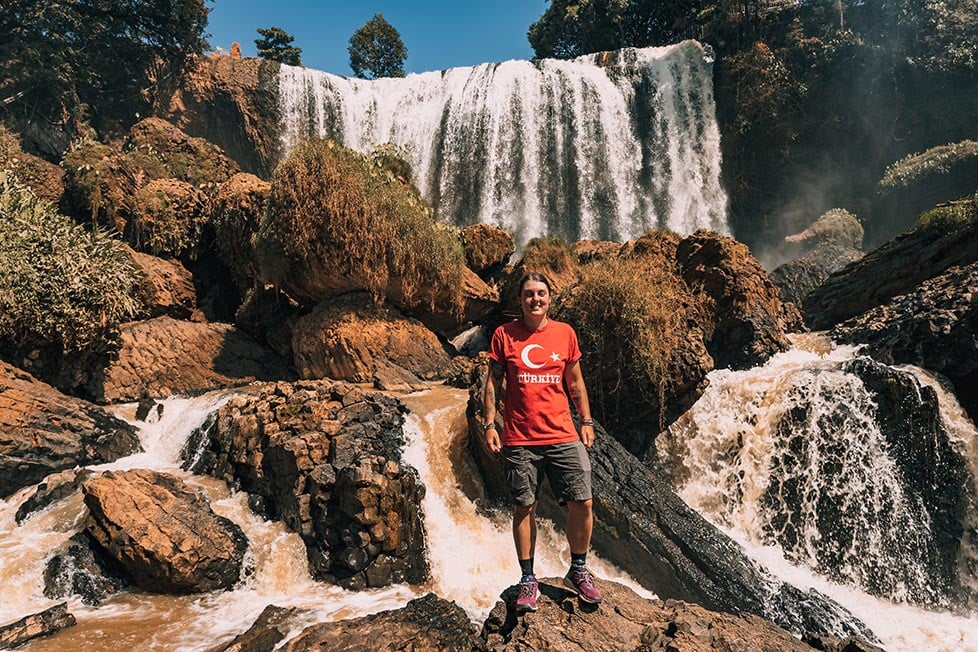
6. Go Caving
Southeast Asia is home to some truly impressive cave systems. If you have the chance, you must explore some of them! There is the world’s largest cave in Vietnam, but many of the smaller caves throughout the region are equally as epic and more accessible. Over in the Phillippines, you can even try your hand at cave diving – that shit’s UNREAL!
7. It’s Street Food O’Clock
Love trying new things? There is something delicious, tasty, and bizarre to put in your mouth around every turn.
I hope the words “no, I don’t think I want to try that” never come out of your mouth. You will find food that makes you cry tears of joy. There will be times when your entire mouth becomes a burning pit of hell. And there will be magical moments where it’s a bit of both.
Each country brings something unique to the table for you to sink your teeth into – literally. So you’ve got no choice but to start munching your way through street carts!
(Exceptions are granted only if the food in question is an endangered or protected animal.)
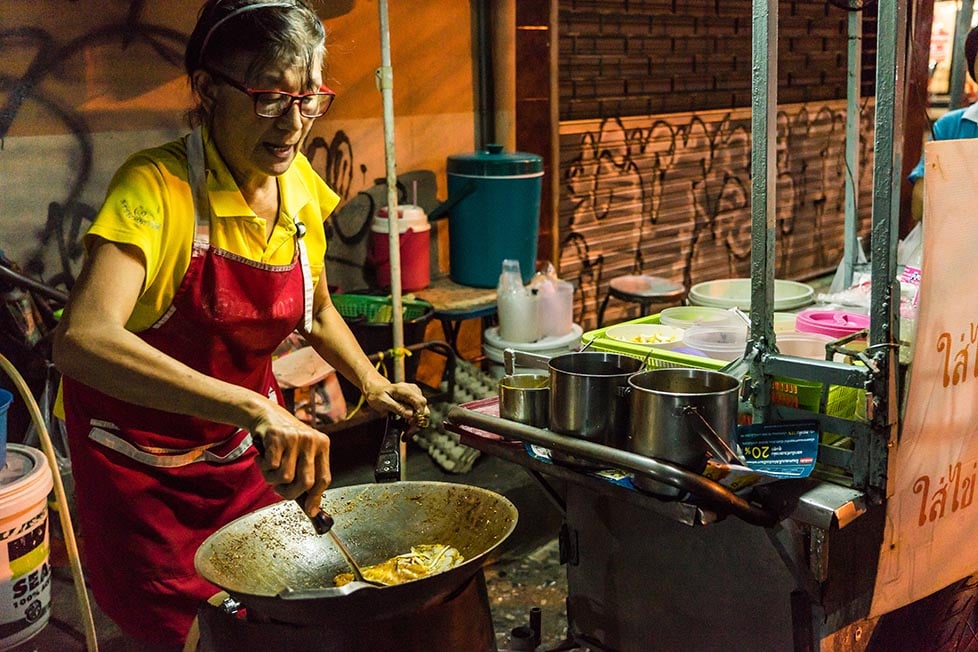
8. Go climbing
Southeast Asia is full of karst mountains, which rise like pillars and towers from the ground. For the casual tourist, these spires make great photos. For climbers though, these are the stuff of dreams.
Visit Railay, Cat Ba, and Kuala Lumpur for some grade-A routes.
9. Island hopping
The Philippines has over 7,100 islands; Indonesia has 17,000. Combine these with all the other random islands scattered throughout Southeast Asia and you have a shit ton of islands to live out your Robinson Crusoe adventures. Better get started now – it’s going to take a while to visit them all.
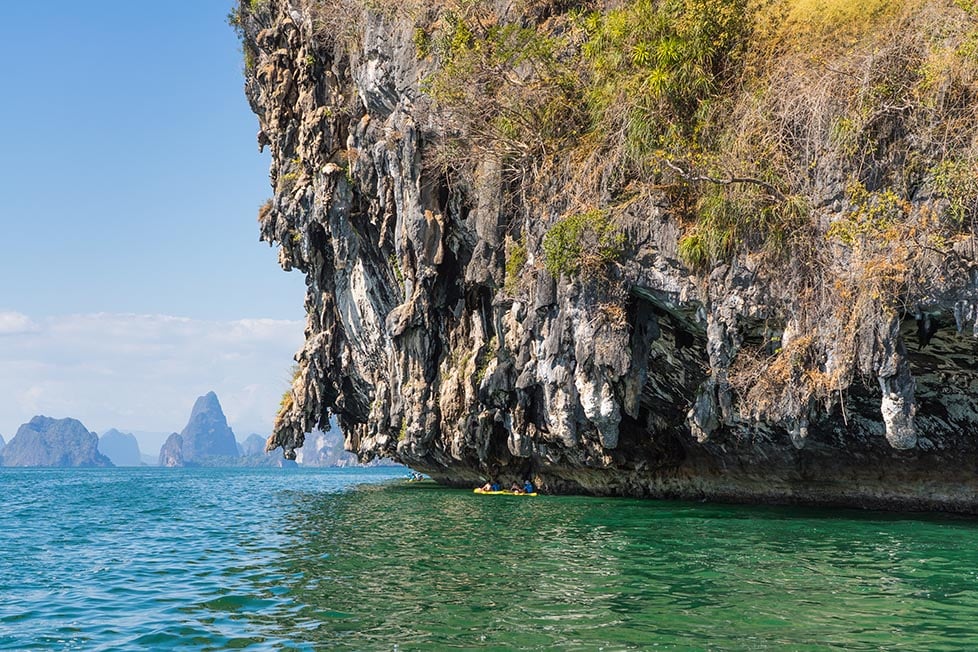
If you get really addicted to island life, you may want to try boat life . That way you can perpetually traverse the best of Southeast Asia’s islands and beyond…
10. Stay in a Coworking Hostel
More and more backpackers are looking to turn their travels into a full time way of life… the best way to get inspired is to meet and brainstorm with other aspiring entrepreneurs and digital nomads, check out Tribal Hostel in Bali to find ideas, support and new friends 🙂
Psssst…. Searching for your Tribe?

Tribal Hostel – Bali’s first purpose-built co-working hostel and perhaps the greatest hostel in the world!
Come on down and enjoy amazing coffee, high-speed wifi and a game of pool 😉
The most common place to stay while backpacking Southeast Asia is, of course, hostels. They’re cheap, ubiquitous, and can be a helluva a lot of fun.
Never stayed in a hostel before? You’re in luck! Southeast Asia is the best place to learn how to live the hostel life .
Southeast Asia has some of the most well-known and well-regarded hostels in the world, which would impress even the most seasoned backpacker. There’s a real mix of cheap places to stay, too. There are the classic party hubs where to beer never stops flowing. But there are some really chill places where it’s more likely that everyone is sitting around smoking a joint while swapping travel stories.
If you’re going to be hitting the Banana Pancake Trail hard and for several months, you’ll want to pack the right stuff with you. We all know that guy who steals towels from hostels and takes them wherever he goes; don’t be that guy.
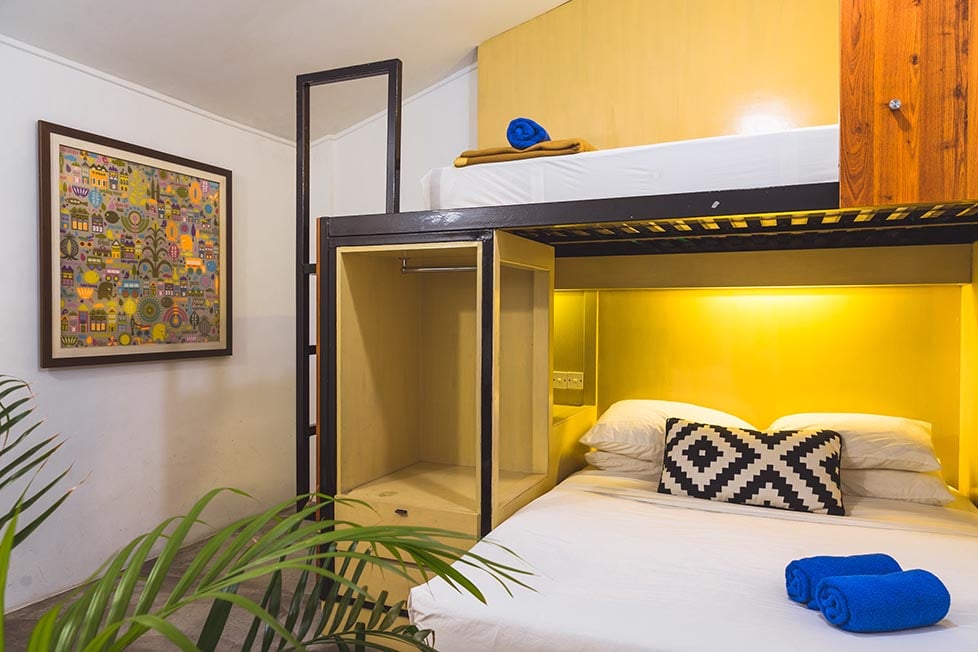
Whilst it’s easier to find hostels in the well-trafficked parts of Southeast Asia, there are some real gems just slightly off the beaten path. One of the best hostels I ever stayed in was in the middle of nowhere Northern Vietnam.
As is always the case, camping would be the ultimate way to save cash while backpacking. Just make sure you take a good tent with you and do your best to check your site – there are some really dangerous snakes and crazy, heavy rain out there in the remote, jungle areas.
There is really never a need to stay in a hotel while backpacking Southeast Asia. If you need a private space, book an airbnb or find a local guesthouse instead. Because it’s Asia, it won’t be very expensive and might be just what you need to recharge yourself.
- Where to Stay in Vietnam
- Where to Stay in Thailand
- Where to Stay in Malaysia
- Where to Stay in the Philippines
- Where to Stay in Singapore
- Where to Stay in Cambodia
Southeast Asia is the Mecca for cheap places to travel broke . Nowhere else on earth can you drink beer, find accommodation, and eat out every day easily for under $10 USD .
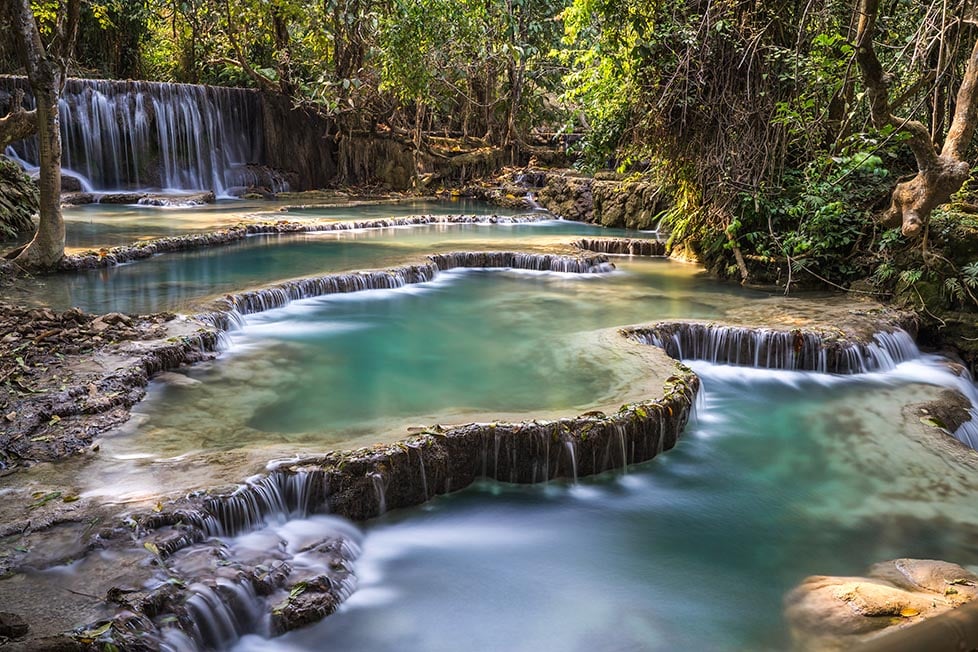
To give you an idea of the cost of backpacking Southeast Asia, here are some examples of shoestring travel budgets:
- $20 – $30 / day: Vietnam, Laos, Cambodia
- $25 – $35 / day: Thailand, Myanmar, Malaysia
- $30 – $40 / day: Indonesia, Philippines
As you can see, some countries in Southeast Asia are more expensive than others. For example, the cost of a trip to Thailand is not as dirt cheap as you might think, especially if you plan on just eating Western food.
Generally speaking, any of the islands you visit whilst backpacking Southeast Asia will be more expensive than the mainland. Also, Singapore kind of stands as its own thing – you can expect a much higher cost of travel there than the rest of Southeast Asia as it’s not catered to budget travellers.
Creating the right Southeast Asia budget for yourself is the key to a successful backpacking adventure. Travelling in Southeast Asia should never be super expensive. With a few budget travel hacks up your sleeve, you will save a ton of money and have the time of your life.
A Daily Budget in Southeast Asia
Here is a more in-depth breakdown of what you can expect to pay on a daily basis whilst backpacking Southeast Asia…
Budget Tips for Visiting Southeast Asia
To keep your spending to an absolute minimum whilst travelling in Southeast Asia, I recommend sticking to these basic rules of budget adventuring….
- Camp : With plenty of untouched beaches, forests, stunning countryside, and far-flung jungle, Southeast Asia can be a great place to pitch a tent for the night. A solid sleep system saves you money and can help you get off of the beaten path.
- Eat street food : Southeast Asia has the BEST street food in the world. You can easily load up on just a few dollars. Night markets are iconic places to start from.
- Couchsurf: Southeast Asian locals are awesome, so get to know some! Check out Couchsurfing to make some real friendships and see a country from the perspective of locals. When using Couchsurfing, be sure to send personalized messages to your potential host – make yourself stand out!
- Haggle: Barter, negotiate, sit down for a tea, and philander hedonistically if necessary. A good haggling game is going to go a long way towards backpacking Southeast Asia on a budget.
- Hitchhike: This is just your friendly neighborhood reminder that hitchhiking is the best, and it saves you cash! But more than that, it launches you right into the thick of it and entices adventures to come out of their hidey-holes.
- Leave “The Bubble”: Staying in the tourist bubbles always gets more expensive. Remember to leave the bubble and live the local life for truly cheap Southeast Asia travel.
Why Should You Travel to Southeast Asia with a Water Bottle?
Whilst there’s a lot that we can do when it comes to travelling responsibly , reducing your plastic consumption is one of the easiest and most impactful things you can do. Don’t buy one-use water bottles, don’t take plastic shopping bags, and forget straws. All of this just ends up in landfills or in the ocean.
One way you can minimise your plastic footprint is by investing in a premium filtered water bottle . That way, not only do you save money by not having to buy bottled water everywhere you go, but you aren’t contributing to the problem. You’re being part of the solution! And the turtles thank you!

Drink water from ANYWHERE. The Grayl Geopress is the worlds leading filtered water bottle protecting you from all manner of waterborne nasties.
Single-use plastic bottles are a MASSIVE threat to marine life. Be a part of the solution and travel with a filter water bottle. Save money and the environment!
We’ve tested the Geopress rigorously from the icy heights of Pakistan to the tropical jungles of Bali, and can confirm: it’s the best water bottle you’ll ever buy!
Due to the great distances involved when we are talking about ALL of Southeast Asia, the weather can really vary.
The peak tourist season in Thailand, Laos, Cambodia, and Vietnam is from November to February when the weather is beautiful across the region, but there’s a high chance you’ll run into a ton of tourists. The really popular guesthouses fill up fast.
The local people are a really friendly bunch and keen to help so if you have any problems don’t be afraid to ask for directions from the locals. It is best to avoid northern areas of Thailand from February to April as the burning season starts and mountains will slowly be covered in smoke.
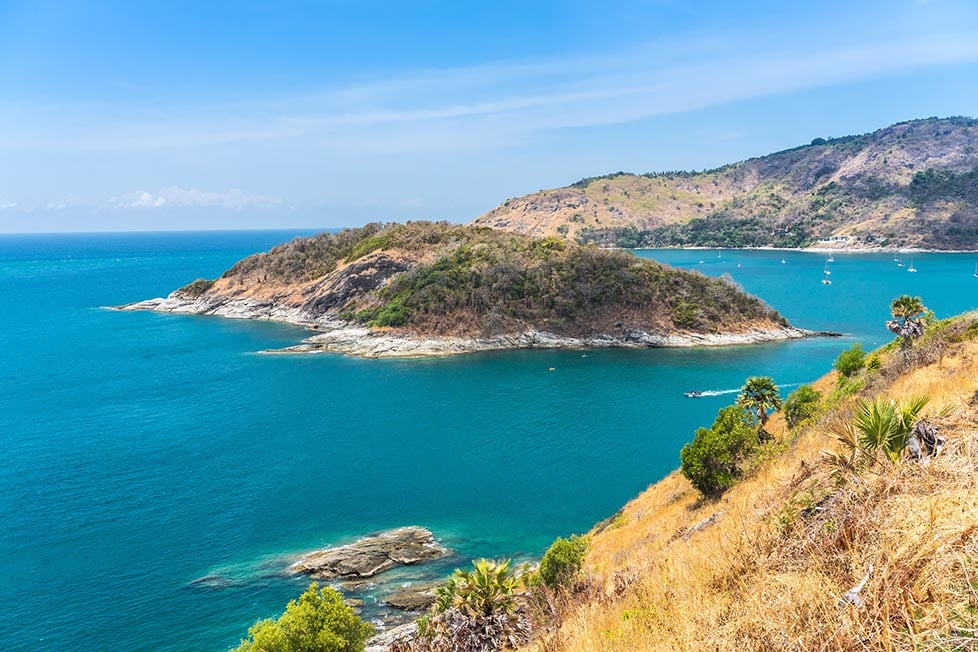
When we are talking about Indonesia for example, keep in mind that Indonesia is WAY farther south and nearer to the equator. The weather in Indonesia can be loosely applied to Malaysia as well.
Generally speaking, there are 2 seasons in Indonesia – the dry season and the rainy season. In most parts of the country, the dry season lasts from May to September . Of course, this is also the most popular time to visit.
Consider visiting in either May or September if you want to try and avoid the massive summer crowd, especially in Bali. This way you can find cheaper accommodation which is difficult to find during peak season.
Most of the rain in Indonesia falls from October to April , with some regional variations. Those looking to do some serious trekking or diving may want to try and plan a trip in the dry season. There’s no need to let a little rain spoil your trip, though. Rain usually comes in quick downpours so just take a solid rain jacket; you’ll still get to enjoy several hours of sunlight.
Best Time to Visit – Country Breakdown
Best Months to Travel: November-February, March-September (Southeast Coast)
What’s the climate in Thailand like?
Most of Thailand is dry and comfortable to visit from November-February. In March and April, the temps start to rise until they become horrible in June. The rains start in May.
The exception to this is the southeastern coast of Thailand (Koh Samui, Hat Yai, etc). The rains come a bit later here.
Best Months to Travel: November-April (North & South), February-July (Center)
What’s the climate in Vietnam like?
Vietnam is a weird one: the North and South have similar rainy seasons, but the center’s is a bit later in the year. The absolute perfect time to visit the whole country would be in February and March.
Best Months to Travel: October-April
What’s the climate in Cambodia and Laos like?
Pretty straightforward with only two distinct seasons: a wet one and a dry one.
In the wet summer season, downpours can washout dirt roads, and the heat can be OPPRESSIVE. Be prepared for lots of lazy days of doing nothing if traveling to Cambodia or Laos during the summer season.
Best Months to Travel: October-March
What’s the climate in Myanmar like?
Typical Southeast Asia. The dry season in Myanmar actually runs until May but the temperatures at the end of the month are just WAY too much. June is unbearable to visit.
Visiting during March or October (shoulder months) are great times.
Best Months to Travel: November-February (West Coast), March-September (East Coast)
What’s the climate in Malaysia like?
Pretty hot and humid all year round but each coast has opposing rainy seasons. Stick to one coast depending on when you’re visiting Malaysia.
Note the Cameron Highlands are temperate all year-round with a rainy season from September-December.
Best Months to Travel: May-September
What’s the climate in Indonesia like?
In most of the country, the wet, hot season runs from October to April. Around May, the rains start to subside, temps drop, and tourists return. Visit Indonesia in May before prices go up.
Northern parts of Indonesia, like Maluku and Raja Ampat, experience the wet season in OPPOSITE months. October-April is the best time to visit these.
Best Months to Travel: November-May
What’s the climate in the Philippines like?
Not quite as hot as continental Southeast Asia, which makes travel in April and May more viable. But June-August should definitely be avoided – this is typhoon season and storms can very dangerous. Most ferries and resorts shut down during this time.
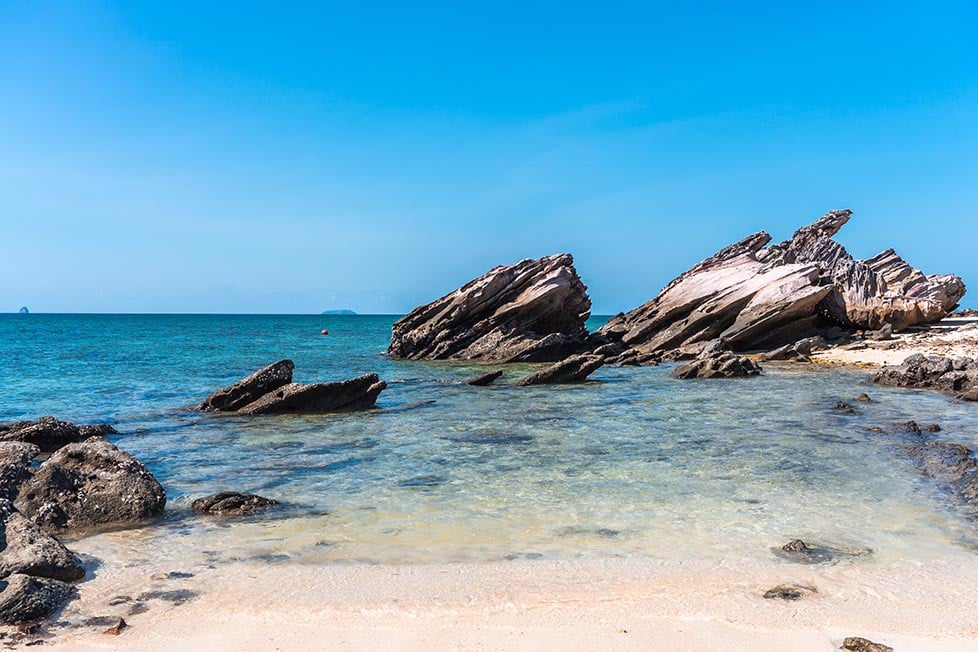
What to Pack for Southeast Asia
An adventure backpacking in Southeast Asia means navigating a certain level of chaos. If this is your first backpacking trip, or even if you’re a veteran, you gotta make sure you’re equipped for the job!
Make sure that packing list is spot on. For every adventure, there are a few things I never go travelling without:

Snoring dorm-mates can ruin your nights rest and seriously damage the hostel experience. This is why I always travel with a pack of decent ear plugs.

Hanging Laundry Bag
Trust us, this is an absolute game changer. Super compact, a hanging mesh laundry bag stops your dirty clothes from stinking, you don’t know how much you need one of these… so just get it, thank us later.

Sea To Summit Micro Towel
Hostel towels are scummy and take forever to dry. Microfibre towels dry quickly, are compact, lightweight, and can be used as a blanket or yoga mat if need be.

Monopoly Deal
Forget about Poker! Monopoly Deal is the single best travel card game that we have ever played. Works with 2-5 players and guarantees happy days.

Grayl Geopress Water Bottle
Always travel with a water bottle! They save you money and reduce your plastic footprint on our planet. The Grayl Geopress acts as a purifier AND temperature regulator. Boom!
Is Southeast Asia Safe? This is easily one of the most common questions I’m asked.
Every country on earth has a certain degree of crime and the associated shitty people. Southeast Asia is no different. Though violent attacks on backpackers are extremely rare, they can happen.
A common problem in Southeast Asian cities is the motorcycle bag snatch. Two dudes roll up on a motorbike and grab your purse or day bag and they ride off into the night (or day). I have heard reports of this gig being particularly rampant in the touristic areas of Phnom Penh.
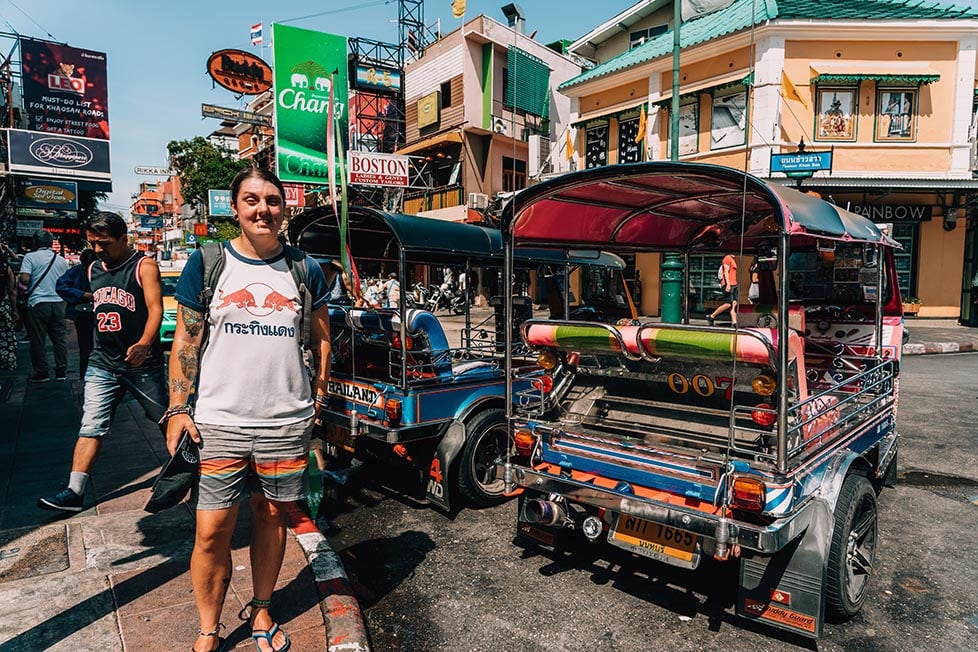
Keep an eye on your stuff, especially when you are in the big cities and crowded bus stations. Be smart hiding your valuables and money when travelling and things will be chill. In general, Southeast Asia is one of the safest places in the world to go backpacking, so fear not!
Wear a helmet when you hop on a motorbike in Asia . Despite being an experienced driver, I’ve had a total of 3 crashes in Southeast Asia over the last 10 years. On the one occasion, I wasn’t wearing a helmet, I split my head open and had to go to the hospital. Your mum doesn’t want to get the call about your insides being on the outside…
To stay safe, every backpacker should follow the common-sense rules of safe backpacking . In general, being out late, drunk, and alone is a recipe for trouble anywhere in the world.
If ever you run into the very rare hold-up situation, give them what they want and don’t resist. Your iPhone and wallet are never worth dying over, ever!
- Is Thailand Safe to Visit?
- Is Vietnam Safe to Visit?
- Is Cambodia Safe to Visit?
- Is Myanmar Safe to Visit?
- Is Indonesia Safe to Visit?
- Is Malaysia Safe to Visit?
Sex, Drugs, and Rock n’ Roll in Southeast Asia
There’s a reason that those seeking something a little hedonistic oftentimes get stuck in Southeast Asia… You can buy ketamine from certain pharmacies and the acid seems to be ubiquitous amongst travellers. Many Southeast Asian countries have very harsh drug penalty laws though, and even without harsh laws, there are some truly crippling fines dished out.
Drugs on the road is pretty much a guaranteed experience – and in Southeast Asia more so than ever. There are the magic mushroom shakes popular in Thailand and Cambodia; there are the strong and freely available prescription meds too.
Plus, doobies are a staple of almost every hostel. So, if you’re gonna do the good stuff, then stay hydrated and watch out for ya mates!
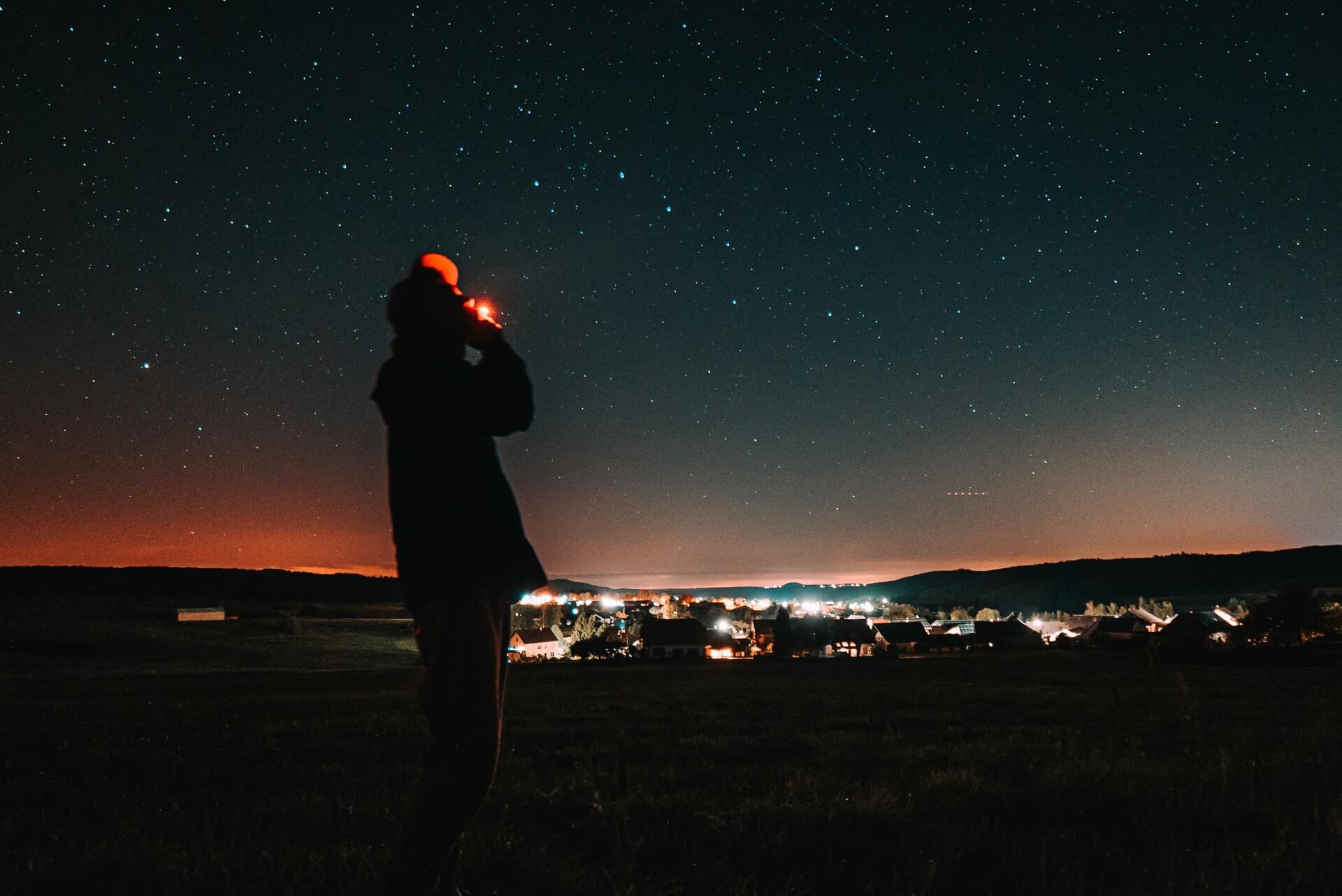
What seems to go hand in hand with travelling even more so than drugs? Why, love and sex of course! But we don’t like to have frank and honest discussions about sex on the road out of fear we’ll be too judgemental – or not judgmental enough.
At the end of the day, love and sex will on the road is inevitable so we might as well have a conversation about it.
Remember that free love is about love as much as it is about sex. And I’d be dancing around the elephant in the room if I didn’t talk about how easy it is to engage with sex tourism in Asia.
Regardless of your beliefs and thoughts on prostitution, remember this is another person with thoughts, feelings, and a life outside of the sex industry too. You are not superior to these people; you just happen to be from a more privileged background.
Go to Asia and have the time of your life, do the things you’ve dreamed of – but be respectful along the way. Travelling the world makes you an ambassador for your country , which is awesome. We can make a positive impact on people when we travel and get rid of any ugly stereotypes that may be associated with our countries…
Travel Insurance for Southeast Asia
ALWAYS sort out your backpacker insurance before your trip. There’s plenty to choose from in that department, but a good place to start is Safety Wing .
They offer month-to-month payments, no lock-in contracts, and require absolutely no itineraries: that’s the exact kind of insurance long-term travellers and digital nomads need.

SafetyWing is cheap, easy, and admin-free: just sign up lickety-split so you can get back to it!
Click the button below to learn more about SafetyWing’s setup or read our insider review for the full tasty scoop.
As I said before Bangkok and Kuala Lumpur are Southeast Asia’s two main international hubs. Most backpackers start their journeys visiting and staying in Kuala Lumpur or Bangkok for a spell. Budget flights throughout the region will almost certainly have you passing through one of those airports.
If you are looking to do the classic Southeast Asia Loop or the Banana Pancake Trail, then starting off by staying in Bangkok is the obvious choice. Flights into Vietnam through Hanoi and Ho Chi Minh City are getting increasingly less expensive as well, so keep an eye out if the prices keep falling.
Visas and Entry Requirements for Southeast Asian Countries
The biggest headache of travelling is getting a visa organised! The rules are subject to change at a moment’s notice and you never know what the land border will actually be like. All I can say is do your research, (politely) refuse to pay bribes that you don’t have to, and get organised in advance.
Luckily, most Southeast Asian countries have pretty straightforward visa requirements. Tourism is their bread and butter after all.
- Visa on arrival: Visa-free travel, 30 days for most countries.
- Extension: Yes, one-time, usually for 30 additional days, $60.
- Notes: Those arriving by land usually receive a 15-day visa-free waiver.
- Visa on arrival: Yes, but only for a small group of countries.
- Evisa: Yes, 30-day validity, $25, longer stays possible.
- Extension: Yes, but you’ll need to leave the country and reapply for the evisa.
- Notes: Evisas are not valid at many border crossings.
- Visa on arrival: Yes, 30 days for most countries, $37.
- Evisa: Yes, same price and length as visa-on-arrival.
- Extension: Yes, one-time, usually for 30 additional days, $48.
- Notes: If crossing from Laos or Thailand, visas will cost more if you pay in baht or kip.
- Visa on arrival: Yes, 30-day validity, $35.
- Evisa: Yes, 30-days, price varies
- Extension: Yes, $2/day, filed in Vientiane .
- Notes: The evisa is inconvenient, most travelers may opt for visa-on-arrivals.
- Visa on arrival: Yes, 90-day validity, no charge.
- Extension: Possible at embassy.
- Notes: Malaysia is very easy to enter but takes overstays very seriously.
- Visa on arrival: Yes, between 30-90 days, free.
- Extension: Possible to file online.
- Notes: Like Malaysia – easy to get in, just don’t overstay.
- Visa on arrival: Yes, 30-day validty for most nations, $35.
- Extension: Only available to those with visa-on-arrival or prearranged visa.
- Notes: Foerginers can enter Indonesia on a visa-waiver program for free but they will not be able to extend stay. Some ports of entry require prearranged visa.
- Visa on arrival: Visa-waiver (30-day validity) or visa-on-arrival (59-day validity) available.
- Extension: Possible for those with visa-on-arrival.
- Notes: You will need proof of an outbound flight to enter the Philippines.
The most popular and rewarding way of independent travel in Southeast Asia is to rent or buy a motorbike. It also helps if you can rent for longer periods of time. Most shops in Bali charge around $5 a day for a motorbike, but I was able to rent one for only $50 a month!
With a full tank of gas costing only around $1, you can cover a lot of ground without burning a hole in your wallet if you’ve got a long-term motorbike rental. Pair this with a proper motorcycle tent , and you’ll hardly ever spend a dime!
Common Types of Transport in Southeast Asia
You can easily buy a bike in Thailand or Vietnam (or anywhere really) and then pass it on to a local or fellow traveller when your time backpacking Southeast Asia is through. Don’t buy the first piece of shit bike you come across!
If possible, try to get the bike checked out by someone who knows bikes. It would be a shame to buy a bike just to have it break down the next day. Again, always wear a fucking helmet!
Taking local buses and trains (when possible) is the most economical way of getting around. Sometimes, this will mean rocking up at the bus or train station and sussing out a ticket, but it’s getting easier than ever to sort your journeys in advance.
Bookaway is an epic online booking platform where you can book bus, train, and ferry tickets in advance for a nominal fee – this is way better than rocking up at the bus or train station and hoping you can get a ticket – because sometimes you can’t.
One can find budget flights in Southeast Asia, but these flights and taking ferry boats to the islands add up. So pick and choose where you want to go and budget accordingly.
For short distances, tuk-tuks are your best bet just keep an eye on your shit and keep your wits about you when in a tuk-tuk . Luckily, Grab (similar to Uber) is now readily available in several countries in the region, including Thailand!
Grab is hands down the best way to get around cities, the price is locked in on the app so you can’t get ripped off, AND it will always work out cheaper than travelling by taxi or rickshaw.
Hitchhiking in Southeast Asia
Hitchhiking should not prove to be too difficult and in some countries, it is fairly easy to get picked up. You have to be persistent and make sure the locals understand where you need to go or you will end up getting dropped at a bus station.
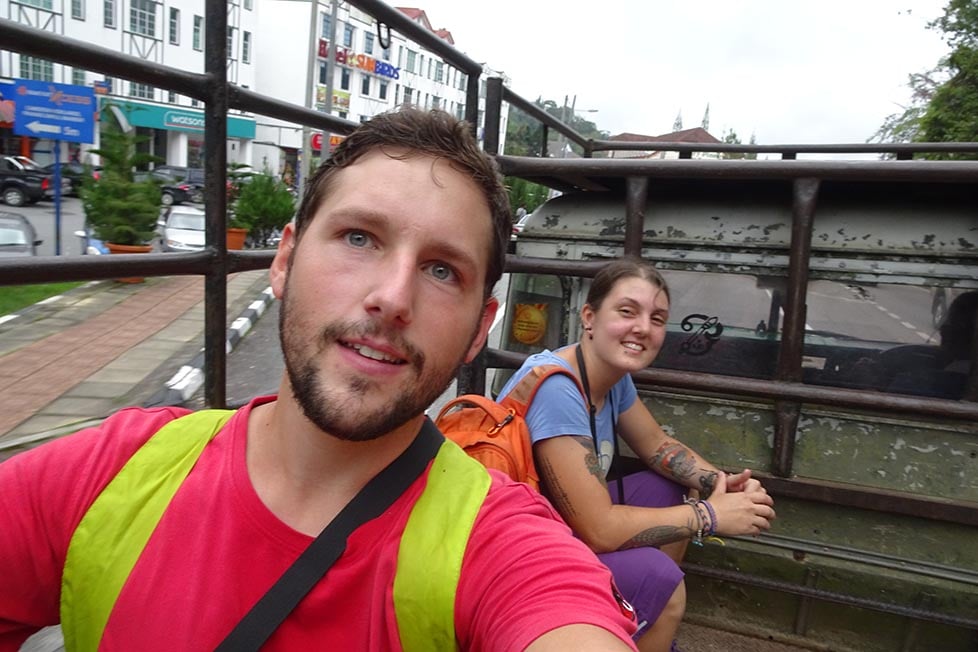
Some locals decide to turn their car into a taxi cab the minute they spot a foreigner on the highway. I would never assume that the ride is free initially. Always ask to avoid having an awkward scenario in which the driver who picked you up is demanding an unexpected fee.
Due to the large number of backpackers riding motorbikes across Southeast Asia, it is possible to score a ride with some fellow travellers. Generally, hitchhiking in Southeast Asia is safe, though you still have to be smart and use good judgment.
Onwards Travel from Southeast Asia
Whether you are heading home or carrying on travelling, budget international flights are your best bet. Bangkok or Kuala Lumpur is where you will find the lowest prices.
India and South Asia may beckon the vagabond to continue their travels. Or, Australia and New Zealand might get the backpacker to settle down in a sense and get a backpacking job .
Many backpackers pop over to Australia or New Zealand for 6 months to a year on a working holiday visa, make some cash, and come right back to Southeast Asia for their second round of backpacking escapades.
- Backpacking Australia
- Backpacking New Zealand
- Backpacking Fiji
- Backpacking Oceania
Working in Southeast Asia is certainly popular – though not especially lucrative. Scoring a gig as an ex-pat of some kind is always great, but most backpackers won’t fall into that category. Since work visas are sometimes difficult to get, a lot of the work ends up being done under the table.
That’s not to say it’s all dodgy run businesses, of course. There are a surprising amount of opportunities for backpackers to find work in Asia, but don’t expect to make a lot of money. You’re here for the lifestyle and experience, not the cash.
Popular jobs include dive instructor, English teacher, or some kind of hospitality. How easy it is to get a job will depend on the country. But a more popular way of making money while on the road in Asia is to work as a freelancer or digital nomad – this is where Asia truly shines.

A new country, a new contract, a new piece of plastic – booooring. Instead, buy an eSIM!
An eSIM works just like an app: you buy it, you download it, and BOOM! You’re connected the minute you land. It’s that easy.
Is your phone eSIM ready? Read about how e-Sims work or click below to see one of the top eSIM providers on the market and ditch the plastic .
The Digital Nomad Scene in Southeast Asia
Southeast Asia is THE most popular place for digital nomads to base themselves (based on recent digital nomad stats ). Places like Chiang Mai, Bangkok, and Bali are thriving nomad hubs that attract people from all over the world. Kuala Lumpur and many large Vietnamese cities are quickly following suit.
Southeast Asia is a paradise for remote workers for many reasons:
- The cost of living is very low.
- Internet is ubiquitous and reliable.
- Expat communities are strong.
- Local economies are booming.
- Visas relatively easy to organize.
- Conferences and events are frequently organized.
- There’s a lot to do in your free time.
If you’re a digital nomad or someone who wants to give the lifestyle a try, you can’t go wrong living in Southeast Asia.
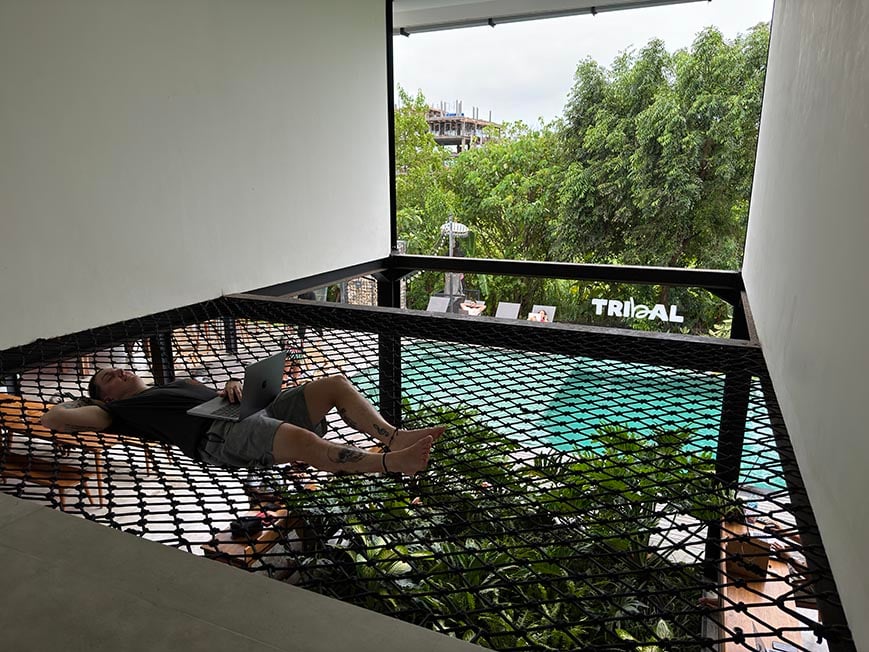
Teaching English in Southeast Asia
For another way of living or extending your trip to Southeast Asia, people have been teaching English abroad for a long time. Though you won’t always need one, having a TEFL certificate will increase your chances of scoring a gig.
We suggest using MyTEFL to get accredited. Broke Backpacker readers get a 50% discount on TEFL courses with MyTEFL (simply enter the code PACK50 ).

I think that working as an English teacher does give you a deeper appreciation of the country that you’re travelling in. You spend time fostering connections to a place and you are, ultimately, teaching people a skill that will carry them far in life.
Volunteering in Southeast Asia
Volunteering abroad is an amazing way to experience a culture whilst helping your host community. There are plenty of different volunteer projects in Southeast Asia including teaching, construction, agriculture, and pretty much anything.
There are so many different volunteer opportunities in Southeast Asia to suit any skill set. You could support communities doing social work in Vietnam, help out on farms in Thailand, teach English in Cambodia, or volunteer in a hostel in Laos.
Other opportunities include bartending, doing community work, and web development. Short-term volunteers should apply for a tourist visa before arriving, but you’ll need the appropriate permits to stay longer depending on what country you’re in.
Volunteer programs run through reputable work exchange programs like Worldpackers are great places to start looking for volunteer work – but it doesn’t cover you for everything . Always tread with extra caution, especially if you’re working with kids or animals.
Ask the average Joe what they know about the history of Southeast Asia and most will be able to think as far back as the Vietnam War, maybe the Japanese occupation of Thailand. Beyond that, Southeast Asia is kind of a mystery.
But the history of Southeast Asia is long, complex, varied, and extremely fascinating. Before the Europeans arrived – the French in Vietnam, English in Burma, and Dutch in Indonesia – there were great kingdoms: the Toungoo, Khmer, and Malaca Sultanate, to name a few. Through these channels, Buddhism, Islam, trade, and science all flowed.
It is quite difficult to talk about “Southeast Asian Culture” because it would be a generalization; there are just so many different aspects.
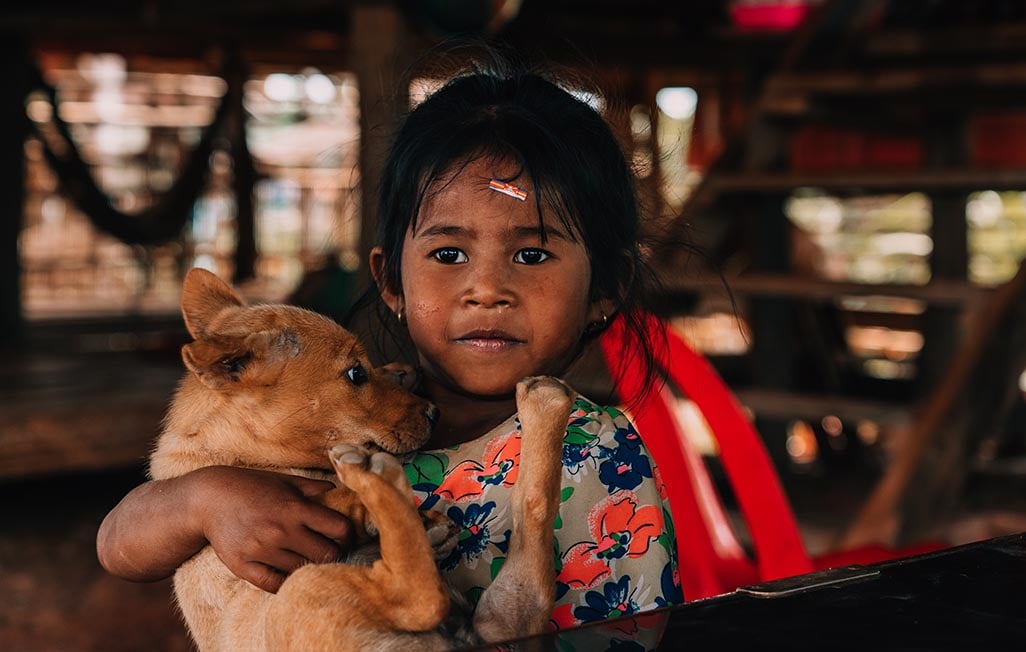
What travellers SHOULD know about Southeast Asia is that it is, in fact, way deeper than it seems. Thanks to a long history of colonization that dates back before the Europeans – Indians, Arabs, and the East Asians all settled in SE Asia – the region is enormously diverse. Food, religion, politics, customs, all of the things that SE Asia does so well, come in part from external sources.
Of course, the colours of people’s personalities also change from country to country. Thais are legendarily nice (and open to just about anything). Malaysians are incredibly diverse ethnically and thus incredibly tolerable. Cambodians are the most laidback people in Southeast Asia by far. All of these traits become more obvious as you spend time in each country.
Don’t stay on the established Southeast Asian backpacking route if you want to get to know the locals. Koh San Road, Hanoi’s Beer Street, Kuta, and all the other tourist hotspots are poor representations of the culture.
The real Southeast Asia is found at the plastic tables on the street, inside the bike repair shops, and in the dusty corners of the region.
There are people who go backpacking in Southeast Asia just for the food. And for good reason, too: it’s fantastic! More than just delicious, it’s also cheap and hugely varied depending on where you are.
You can definitely expect a lot of rice, noodles, and curry in Southeast Asia. Luckily though, no two of these are ever the same. For example, noodles in Vietnam are traditionally served in broth ( pho being the most famous). Thailand, on the other hand, usually prefers dry noodles.
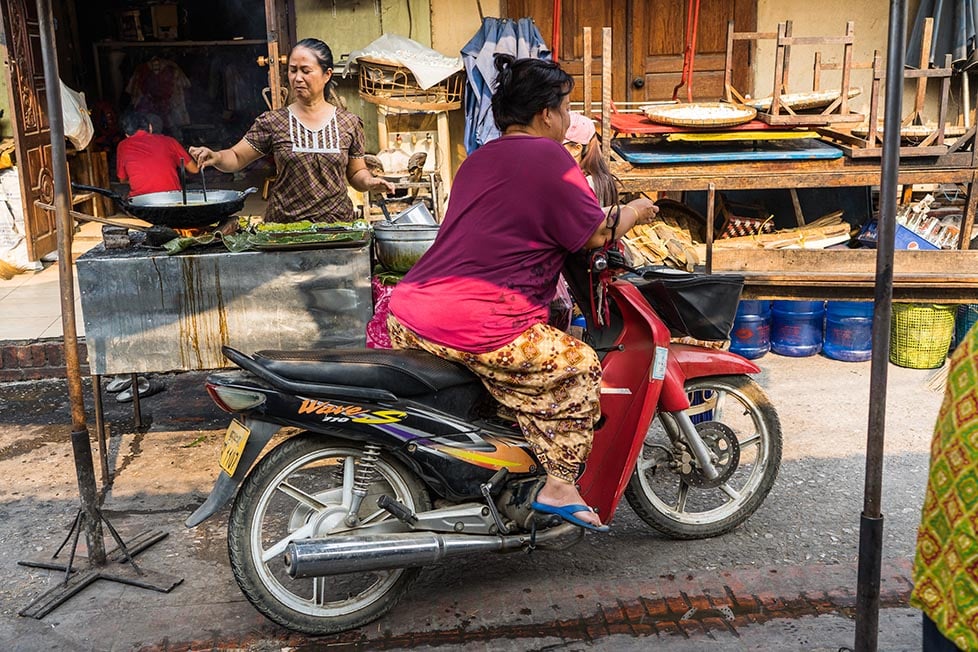
This is just the tip of the gastronomic iceberg that is food in Southeast Asia. And honestly, it’s really difficult to lump everything into one category. I will simply say that countries like Malaysia, Singapore, and Thailand consistently rank among the most delicious in the world, every year.
Because of its tropical climate, the fruit in Southeast Asia is also ridiculously good. Borneo is practically the Garden of Eden where just about everything grows, and the local markets in all the major cities have incredible selections to choose from. Be prepared to eat lots of fruit on your backpacking trip, especially bananas when served with pancakes.
I definitely recommend eating at the local markets and street food stalls. The prices are super low and the food is just as good as anything you’d find in a restaurant. Just keep on an eye out for sanitation – make sure the food is fresh and things look clean (enough).
Food to Try in Southeast Asia
There are some dishes you simply HAVE to try when you go to Southeast Asia:
- Banh Mi Thit (Vietnam) – The best sandwich in Asia.
- Pho (Vietnam) – Noodles served in broth w/ extras.
- Pad Thai (Thailand) – Dry noodles w/ peanut sauce and chilis.
- Tom Yung Goong (Thailand) – Soup made with lemongrass, herbs, and shrimp.
- Satay (Malaysia, Indonesia) – Grilled meat skewers.
- Fish Amok (Cambodia) – Spicy fish coconut curry served in a banana leaf
- Burmese Curry (Myanmar) – Local take on the dish that is famously good.
- Shan-style noodles (Myanmar) – Thin-sliced, flat noodles.
- Nasi Goreng (Indonesia) – Fried rice.
- Chili crab (Singapore) – Singapore’s claim to fame.
- Larb/Laap (Laos, Cambodia) – Beef salad with lots of seasoning.
- Tam Mak Houng (Laos) – Spicy green papaya salad.
Southeast Asia is a fantastic budget destination that is great for your everyday travels, but it’s also amazing because it allows you to splurge on some truly unique experiences.
You can go surfing, sky diving, bungee jumping, or any number of exciting things! But there are two big-ticket items that grabbed my heart more than any other: trekking and SCUBA diving .

Things go wrong on the road ALL THE TIME. Be prepared for what life throws at you.
Buy an AMK Travel Medical Kit before you head out on your next adventure – don’t be daft!
Trekking in Southeast Asia
Each country in Southeast Asia offers up trekking experiences that will stay with you for the rest of your life. Whether you prefer guided or independent trekking, there is ample hiking on hand for every backpacker to enjoy. Pack yourself the right adventure gear , and go do something crazy!
- Taman Negara, Malaysia : Explore the oldest rainforest in the world and spend the night in a bungalow in the jungle (for free).
- Kibungan Circuit, The Philippines: A 3-mountain circuit in the town of Kibungan in Benguet . The circuit, which takes anywhere from 2 to 3 days to complete, spans across the mountains of Tagpaya , Oten , and Tagpew .
- Shan State, Myanmar : Shan state is a popular place to go trekking and there are some great hikes around Kachin state as well. You will likely encounter no other travelers whilst trekking here.
- Phongsali, Laos : If you want to get off-the-grid and go trekking in Laos, I recommend making the long journey to the northern town of Phongsali . Though tough to reach, it’s equally rewarding for trekkers. While there isn’t much to do in the actual town, there are plenty of opportunities to visit remote hill tribes through the Provincial Tourism Office.
- Ring of Fire, Indonesia: While the beautiful beaches in Indonesia may be the major draw for tourists, there are also plenty of opportunities for adventures on land. Located in the Ring of Fire, Indonesia is home to well over 100 volcanoes. Trekking to the summit of some of these volcanoes is one experience you won’t want to miss when backpacking Indonesia. In addition to the aforementioned Mt. Bromo and Mt. Rinjani , you can also scale Mt. Agung on Bali or Mt. Egon on Flores .
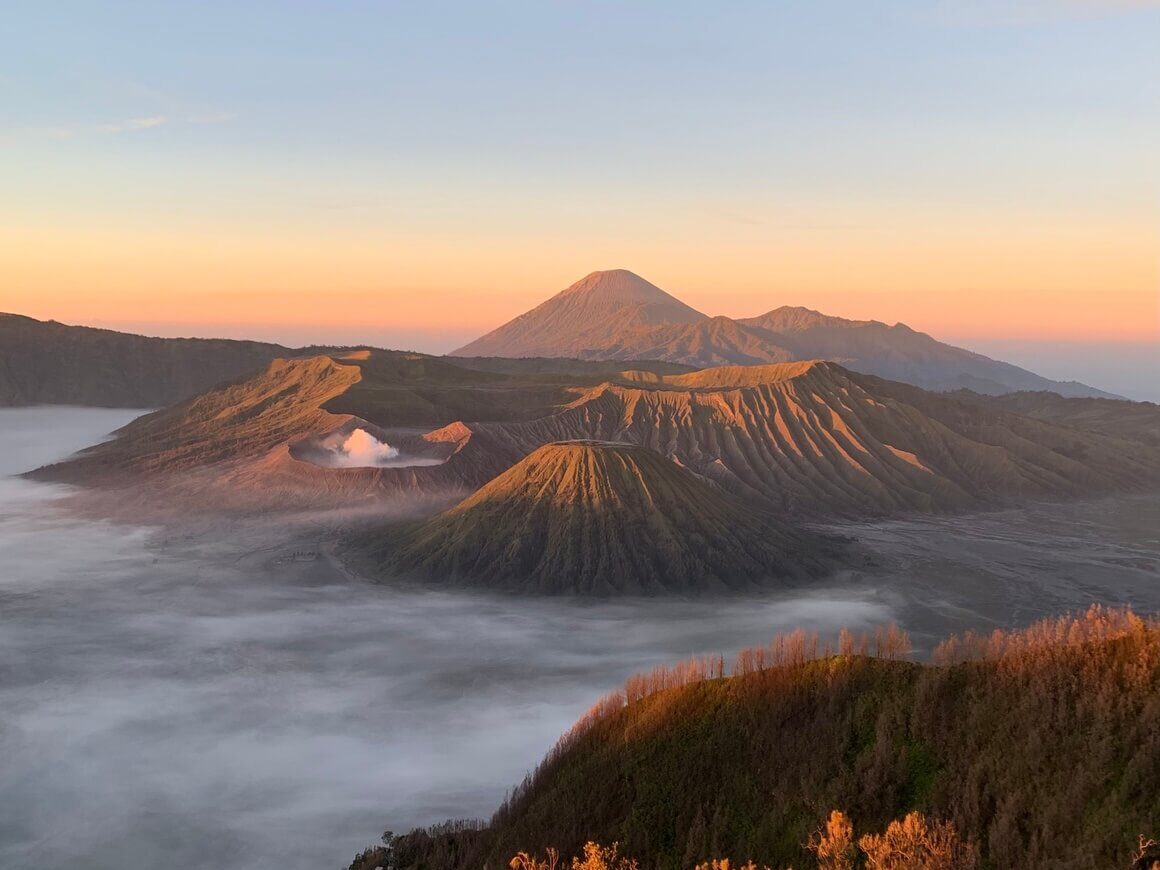
Scuba Diving in Southeast Asia
If you have been paying attention, you should be aware now that Southeast Asia is fucking paradise when it comes to scuba diving. Without a doubt, Southeast Asia is the cheapest place in the world to become a certified diver. That fact coupled with some of the best dive sites in the world make scuba diving a no-brainer whilst you are backpacking Southeast Asia.
If you want to go diving in Thailand, go for it! Though I must reinforce how great diving is in Malaysia and Indonesia. The reef systems are in better shape and you won’t have to contend with quite so many tourists. Bali has loads of diving sites , and that’s just the start of the underwater sightseeing.
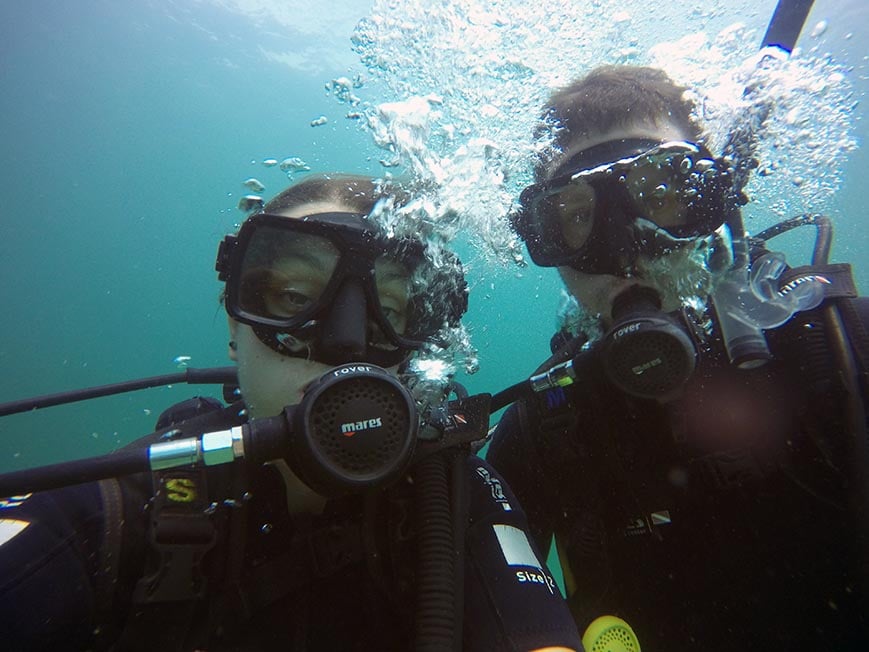
And if you aren’t up to learning to SCUBA, then you can always learn to freedive or snorkel. There is truly a whole other world waiting to be discovered once you leave the surface!
You’ve got questions about Southeast Asia and we’ve got answers!
Is backpacking in Southeast Asia safe?
Yes. Violent crime against tourists is very low in this part of the world – and even petty theft isn’t that common. That being said, you should still watch out for your valuables in very touristy areas. The thing to watch out for here is food/water bugs that can really knock your health back.
Where can I backpack in Southeast Asia?
Currently, all countries in Southeast Asia are open for backpackers, though Myanmar is still (sadly) risky to visit.
How long do you need to backpack Southeast Asia?
A backpacker could get a good idea of the region by spending 3 – 6 months there. Really, you could spend a lifetime exploring Southeast Asia and still have oodles left to explore. But this is enough time to explore a heap of places without feeling too rushed.
How much does it cost to backpack Southeast Asia for 6 months?
Southeast Asia is a blessing to broke backpackers. You can live comfortably here on $10 a day and splurge every so often on unique experiences. Including flights, insurance, and wiggle room within your budget, 6 months in Southeast Asia should cost between $5000 – $10 000.
What’s the best country to backpack in Southeast Asia?
This is a contentious question! My personal favourite is Vietnam simply because their food is my favourite. Aside from that, it’s cheap, full of epic motorbike adventures, and deadly rice wine!
Be good to Southeast Asia. It’s an incredible region that truly does have a little bit of something for everyone – all while being super cheap. We risk ruining a place when we don’t appreciate how special it is, and Asia is pretty freaking special.
Whether you stop by just one of its countries for a short SCUBA diving trip, or whether you get lost on the banana pancake trail for a year or so, you know you’re in for a good time. There are rice paddies, ancient temples, piles of spicy noodles, and some of the friendliest faces in the world waiting for you here.
Now, I hope I’ve been a source of inspiration in this guide but I also hope you’re ready to forge your own path through this great region. Because there are so many offbeat adventures and epic trekking to be done – you don’t need to get lost in the endless supply of cheap beer.
So off you go, you broke backpacker! I hope to see you deep in the Malaysian jungle or ordering your fifth banh mi of the week in Vietnam. Whatever you choose to do in Southeast Asia, it’s sure to be an adventure.
- Backpacking Australia’s East Coast
- How to Find Cheap Flights
- Best Party Cities in the World
- Backpacking Central America
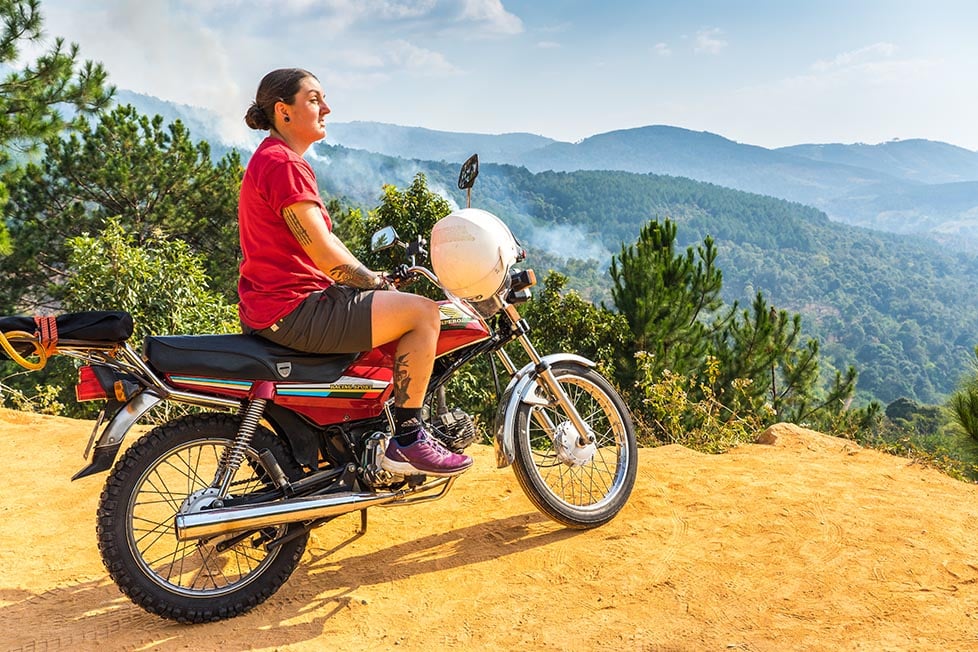
Updated February 2023

And for transparency’s sake, please know that some of the links in our content are affiliate links . That means that if you book your accommodation, buy your gear, or sort your insurance through our link, we earn a small commission (at no extra cost to you). That said, we only link to the gear we trust and never recommend services we don’t believe are up to scratch. Again, thank you!
Will Hatton
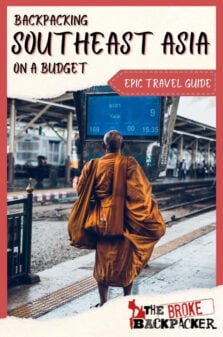
Share or save this post

40 Comments
Hi! Me and a friend of mine are planning on backpacking in Asia from start of April to beginning of July. The only problem is, we are scared it is going to be too hot and humid. We are both from norway and not really used to super high temeratures, so my question is basically: what route can we take, without dying from the extreme heat? It does not have to be in the southeast of asia, but more asia in general. Love your website btw. Love from 20 year old adventurers and coldblooded girl.
Head to the islands, riversides and coastlines. If you are really struggling, follow the lead of locals and do things early morning and late evening to avoid the hottest part of the day. Dress appropriately in layers that you easily remove. Keeping properly hydrated will also help you acclimatise .
Hi there, anyone who has read this brilliant article should definitely try out south east Asia, there are so many amazing experiences on offer. Me and my partner took six months off work a few years back and decided to go travelling around southeast Asia. We visited Vietnam first, then Laos then we discovered our new home – Thailand which is where we spent most of our time as we fell in love with the people, the culture and just the country in whole. We loved it so much that we decided to take the leap and move to the island of Koh Samui. We hope to one day be as travelled as the owners of this amazing blog. 10 out of 10 read!
This was amazing…leaving in 3 days for a year to SE Asia and this post nearly brought me to tears of joy with the emotions it generated. So excited about what is to come!
Superb blog
Will, thank You for the effort and time You invested in writing this informative and useful article about backpacking around southeast Asia. Also, I really appreciate the fact that through this article You inspire other people to travel on a budget, which is something that I also encourage 🙂 Keep up the great work!
Hi Will, thanks for the info! Two questions: Can one easily get through customs when you enter a country and stay for thirty days without having a return ticket back to the US and not knowing what country you will visit next? I bought a one way ticket from San Francisco to Singapore and going to make up my trip as I go over 6 months. 2nd question: Is it safe to leave your MacBook or other valuables in a hostel while you are at the beach? How do you protect your belongings when you want to go swimming and your stuff is on the beach. Thank you for your answers!
Hi Jamie, great to hear from you!
Regarding return tickets and immigration, every country and airline has a different policy on return and onward tickets. Yes, even your airline can refuse to fly you if they feel it’s a risk immigration at the other end may not allow you entry based on a one way ticket. Your best bet is to research throughly on forums and travel sites to see the experiences of others. There are some destinations that are well known for NOT allowing entry without an onward ticket, such as The Philippines. Other destinations may allow you entry with none, some may allow you to say you are leaving overland on an approximate date. It’s a calculated risk, onward ticket companies, expensive full refundable tickets and cheap throw away tickets are also options if you find yourself if a pinch.
Unfortunately its a fact of long term travel, eventually you will probably have stuff stolen, lost or broken, no matter how careful or diligent you are. Following are my golden rules for reducing the bad feels of such an experience as much as possible.
1. Back up your shit, regularly! Ultimately the data inside the device will prove far more valuable to you than the device itself. 2. Lock up your shit, don’t leave your stuff unattended in dorms or on the beach, keep your valuables on you if possible when travelling and lock things away while in accommodation. 3. If you have a bad vibe about a place or person, follow your feeling and use your common sense. 4. If you have expensive gear, insure it correctly, make sure you know where the receipts are before your trip. 5. If something happens, get a police report. 6. Don’t take anything travelling with you that you aren’t willing to have lost, stolen or trashed. Leave it at home. 7. When it’s gone, it’s gone. Theft can happen anywhere, don’t spend too long dwelling on the event or let it be a singularly defining experience of a destination.
Have a great trip!
Great blog, really good and usefull info in it. Thanks a lot.
I would so recommend getting vaccinations in the country once you arrive – we got them at medconsult clinic ( a british doctor based in Bangkok), saved a fortune compared to the UK for the exact same vaccine – got typhoid, japanese encephalitis and a hep b booster done.
Excellent information! Thanks for sharing.
I am really appreciative of this blog post. My boyfriend and I had been dreaming of backpacking SE Asia on a shoestring budget for some time now. He is Norwegian, and I am from the USA, but have been living with him in Oslo for the last three months. My visa extension was just denied, and he cannot get a visa for the US until January, so, we decided to push up our dreams and go backpacking and not be split up! We are starting in Bali, May 16th and I had NO idea where to go after that. I want to be adventurous and go where the wind blows, but also have some sort of a plan as we are on the smallest of budgets and HAVE to figure out how to make some money online, or find volunteer locations to house us. Anyway, this has helped me so much, as we are planning a 6 month trip right now, and are leaving in less than a month!
Thanks for dropping by! We hope that your backpacking trip in SE Asia is amazing!
What a long list of South East Asian countries to visit. The photos you used here just enticed me to add some of these places that I haven’t visited in my bucket list! I can’t wait!
Such amazing post!!
Thanks man!
Great post! I cannot wait to visit Asia next summer, my friend and I are looking for volunteering opportunities in Asia, we would like to know if it is possible and easy to find as we tavel around. We will really appreciate any kind of information about that.
If you’d like to find work as you travel through Southeast Asia, then try asking around English schools. Otherwise, Worldpackers is an excellent way to find work exchanges as well.
Thanks for the informative travel guide! My girlfriend and I are planning a trip to Thailand in June and were looking for something like this! We are planning on staying in Southeast Asia for a while, so we have plenty of time to do everything there is to do.
This may be the best travel article I have ever read and I have read a lot! Massive amount of useful information and I love that you added in the message about being respectful as a backpacker. I was actually warned in Japan by a young Belgian girl working at a hostel that drunk backpackers had a negative impact on her trip thru Vietnam. I’m on an 8 month trip thru Asia but do to some rookie mistakes will only have 3 weeks to get from Ha Tien, Vietnam to Singapore. Super disappointed not to have more time to explore Cambodia, Thailand and Malaysia but your article gave me hope that I will at least see some amazing things along the mad dash. Thank you for all the time and effort!
Really glad you found this guide helpful and informative. Enjoy the rest of your trip!
I saw your Myanmar political situation post was made in February, do you know if there has been any change in government?
Just a little correction Will. Its “Lake Toba” not “Lake Tabo”. It`s in the 2nd paragraph below the Penang street art image. Anyway, if you guys planning on visiting West Sumatera, Sipora Island or Nias Island hit me up for some local tips.
Thanks for the correction, cheers!
Love his advice, thank you! Would you say it’s cheaper and better to do backpacking alone on a whim with rough idea of things to do rather than paying for a set tour prior to arriving? Some set tours are like 2500 excluding flights and I’m just wondering if it would be cheaper to get to Thailand, get a bike and then do any internal train bus journeys whenever I want.
Personally, I think paying for a tour in an ‘easy’ country like Thailand is a waste of money. Go with the flow, it’s probably the easiest region in the world to explore 🙂
Hi, Dig the site. Thanks for setting it up. My name is John. I’m from Texas. I’m currently in The Philippines. Looking for the best deal on a round trip ticket, from Manila to Cambodia, and back again . Any helpful hints?
Not a flight hacker or travel agent brother 😉
Wow @ Will – super extensive write up! Some of our friends just asked us for recommendations how to travel SE Asia. We send them your post together with our own experiences (which were much less exhaustive). 🙂
I see you mentioned that the hammock tent has been quite useful, though regards to safety, sleeping out in the open with your belongings. What exactly do you do with your pack and such? Also as a solo female traveler, would you still recommend this mode of accommodation?
Hammocking, and hammock tents, are an awesome way to sleep out as they don’t weigh as much as a traditional tent… However, I would not encourage sleeping out in a hammock EVERYWHERE – You need to pick your spot wisely, make sure it’s cool to camp there etc. I keep all my valuables in a daypack which acts as my pillow. My main pack I put under the hammock.
Truly an amazing post filled with so much information and more. Me and my boyfriend are planning to travel south east Asia for 7 weeks at the end of the year. You have given me so much information for us to digest and use. Thank you so much!
You are very welcome! Happy to be of service 🙂 Have an awesome time traveling in Southeast Asia!
Dude this was an epic write up and has gotten my partner and myself super excited to head off on our 6 month journey to South East Asia in October. Looks like Malaysia has now made the cut, and we are looking into adding The Philippines back on the agenda after getting some pretty mixed reviews. Wise words and sound advice, thanks again!
You are welcome! I’m glad you find it useful 😀
Great post!
I just came back from Thailand, Indonesia and Philippines, and I am 100% going back. Beautiful countries and each with their own unique cultures as well. I went for 40 days! Here’s a video of my travels:
https://www.youtube.com/watch?v=osXq2N6e5aA&t=4s
I hope it inspires everyone to travel to these same places I did! 🙂
What a RAD article…thank you 🙂 I am about to embark on my first backpacking adventure around SEA and this was really helpful!
Great Post! Could get some very good information for my own worldtravel. Which country is your favorite one?
Myanmar and Thailand are my favourites…
As a seasoned spearfisher, I really need to put Asia on my agenda. I actually have a trip planned for the end of this year for Thailand and will definitely look into some fishing whilst I am there. I am only afraid of one thing. That I won’t want to return home!
Leave a Reply Cancel reply
Your email address will not be published. Required fields are marked *
Save my name, email, and website in this browser for the next time I comment.
Notify me of followup comments via e-mail.
Thailand Proposes Schengen-Style Visa to Boost Southeast Asia Tourism
Thailand has spearheaded the proposal for a visa system similar to Schengen to transform travel throughout Southeast Asian countries.
Faith Katunga • Apr 25, 2024
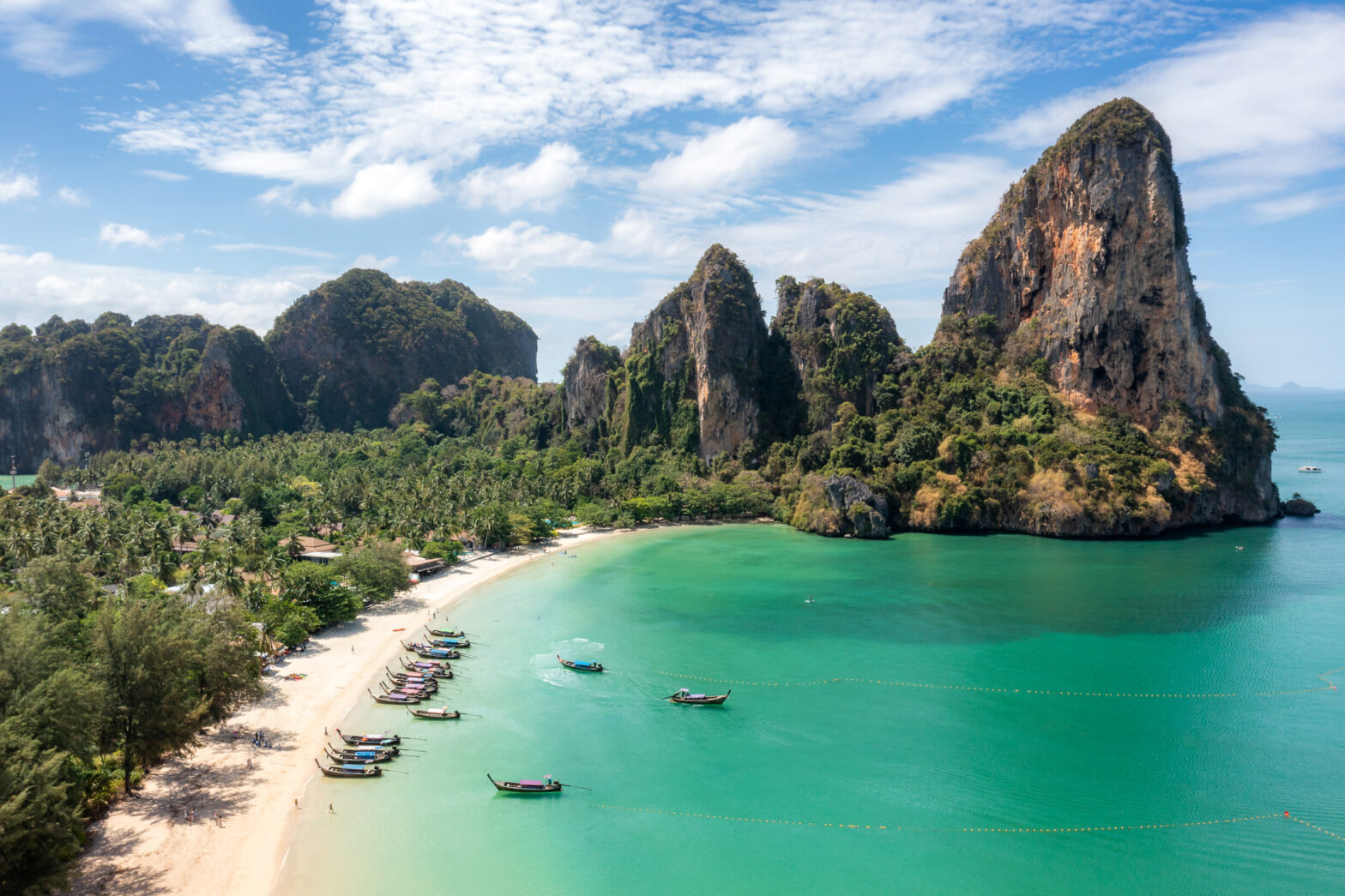
Those dreaming of a more in-depth exploration of Southeast Asia may soon be able to realize their dreams. Thailand has spearheaded the proposal for a visa system similar to Schengen to transform travel throughout Southeast Asian countries. The goal is to boost tourism and economic growth in the area. This initiative, led by Thailand’s Prime Minister Srettha Thavisin, seeks to simplify the travel process for tourists. Travelers will be able to roam freely across Thailand , Cambodia, Vietnam, Laos, Malaysia, and Myanmar with a single visa.
According to recent reports, the proposed visa scheme could significantly increase tourism, making these countries more accessible from Thailand. In 2023, the six nations collectively attracted approximately 70 million tourists, with Thailand and Malaysia hosting the majority. The plan is a clever way to tap into the tourism industry, which is responsible for over 20% of Thailand’s employment and 12% of the country’s GDP. It is also a reaction to the struggling industrial sector and falling exports.
The Vision Behind the Schengen-style Visa System
The concept of a Southeast Asian Schengen-style visa system is rooted in the desire to attract high-spending tourists from distant countries. The scheme encourages longer stays and increased spending by facilitating easier access across multiple nations, thereby expanding the region’s tourism revenues.
The envisioned visa system would likely adopt a 90-day visa policy, extending the current stay limits and offering tourists an opportunity to explore each country more thoroughly. This approach contrasts with the current varying visa policies among these nations, which range from 30-day exemptions to 90-day visa-free stays depending on the country and the traveler’s nationality.
Recent Developments and International Visa Agreements
Thailand has already made significant strides in enhancing its international visa agreements. Thai authorities announced plans to eliminate visa requirements with Australia to bolster tourism and strengthen trade deals between the two countries. Additionally, a mutual, permanent visa-free entry system with China was introduced in March, which led to a surge in travel bookings from both nations.
Still, despite the promising outlook, implementing a regional Schengen-style visa system presents challenges, particularly considering bilateral agreements and political complexities within Southeast Asia. Furthermore, the success of this initiative hinges on the seamless integration of visa policies and cooperation among the participating countries.
Subscribe to travel noire
Get more travel content
Subscribe to Travel Noire, a free daily newsletter that features the best of travel, destinations, and guides to the cities you love from a new point of view — yours.
By subscribing to this newsletter, you agree to our terms of service and privacy policy.
Popular posts
Trending stories in world travel

- The Star ePaper
- Subscriptions
- Manage Profile
- Change Password
- Manage Logins
- Manage Subscription
- Transaction History
- Manage Billing Info
- Manage For You
- Manage Bookmarks
- Package & Pricing
Thailand signs mutual visa-waiver agreement with Kazakhstan
- Asia & Oceania
Friday, 26 Apr 2024
Related News

Malaysia will firmly address Israeli violence in Gaza, tensions in West Asia, says Foreign Minister
Schools closed, warnings issued as asia swelters in extreme heatwave, vietnam ranks third in south-east asia in startup investment attraction; singapore and indonesia lead the way.
Tourists joining in the celebration of the recent Songkran holiday in Bangkok. — Reuters
Thailand and Kazakhstan recently signed a permanent bilateral visa waiver agreement, as the South-East Asian country looks to lift foreign tourist arrivals back to pre-Covid-19 levels.
Prime Minister Srettha Thavisin’s cabinet had earlier approved the visa exemption, and Thai Foreign Minister Parnpree Bahiddha-Nukara signed the documents during Kazakhstan Foreign Minister Murat Nurtleu’s visit to Bangkok on April 23, according to Thai newspaper, The Nation .
Under the policy, travellers from Kazakhstan will be able to stay in Thailand without a visa for a maximum of 30 days at a time and a maximum of 90 days within any 180-day period. Thai travellers to Kazakhstan will need to adhere to the same rules, he said.
The programme will take effect 30 days after confirmation that internal procedures in the respective countries have been finalised to enforce the agreement.
Thailand has benefited from an increase in Kazakhstani tourist arrivals since the country rolled out a temporary visa waiver programme that started in September 2023, and was extended through to August 2024.
Thailand has seen a more than 40% jump in foreign tourist arrivals this year to about 11 million, as its visa waiver programmes and easier travel rules draw travellers from across the world. Chinese tourists topped the list with about two million visitors, followed by travellers from Malaysia, Russia, South Korea and India, according to the Thai Ministry of Tourism and Sports.
Thailand’s vital tourism industry accounts for 12% of the country’s gross domestic product. This year, the country aims to welcome 35 to 40 million foreign tourists, close to the pre-pandemic record of 40 million visitors in 2019.
The government aims to net THB1.8 trillion (RM233bil) in revenue from foreign tourists this year. The earnings totalled THB518bil (RM67bil) between Jan 1 and April 14, official preliminary data showed. — Bloomberg
Related stories:
Tags / Keywords: Thailand , Kazakhstan , Visa waiver , visa , tourism , visa-free , holiday
Found a mistake in this article?
Report it to us.
Thank you for your report!

River Park Bangsar South unveils final tower following successful launch
Next in travel.

Trending in Lifestyle
Air pollutant index, highest api readings, select state and location to view the latest api reading.
- Select Location
Source: Department of Environment, Malaysia
Others Also Read
Best viewed on Chrome browsers.

We would love to keep you posted on the latest promotion. Kindly fill the form below
Thank you for downloading.
We hope you enjoy this feature!
- Moscow Tourism
- Moscow Hotels
- Bed and Breakfast Moscow
- Moscow Holiday Rentals
- Flights to Moscow
- Moscow Restaurants
- Moscow Attractions
- Moscow Travel Forum
- Moscow Photos
- All Moscow Hotels
- Moscow Hotel Deals
- Things to Do
- Restaurants
- Holiday Rentals
- Travel Stories
- Add a Place
- Travel Forum
- Travellers' Choice
- Help Centre
transit visa at Vnukovo? - Moscow Forum
- Europe
- Russia
- Central Russia
- Moscow
transit visa at Vnukovo?
- United Kingdom Forums
- United States Forums
- Europe Forums
- Canada Forums
- Asia Forums
- Central America Forums
- Africa Forums
- Caribbean Forums
- Mexico Forums
- South Pacific Forums
- South America Forums
- Middle East Forums
- Honeymoons and Romance
- Business Travel
- Train Travel
- Traveling With Disabilities
- Tripadvisor Support
- Solo Travel
- Bargain Travel
- Timeshares / Holiday Rentals
- Central Russia forums
- Moscow forum

Thank you very much.

However, if you want to enjoy a peace of mind, consider flying with hand luggage only. (I'd say it's the best option for any trip where you don't need to carry a tent, skis, etc.)
This topic has been closed to new posts due to inactivity.
- Planning trip to Russia 09:26
- Train Booking Moscow to St. Peter 24 April 2024
- SIM card. Russian SIM cards, do they still work in the UK? 09 April 2024
- Union Pay debit card 27 March 2024
- Russian trying to book a hotel in Jerusalem 14 March 2024
- Dual Citizen Arrested in Russia 12 March 2024
- about clothes 27 February 2024
- NOTE - border crossing from Finland into Russia closed 09 February 2024
- Snow boots in Red Square 04 February 2024
- Travelling to Moscow & Murmansk with toddle in winter 02 February 2024
- Anyone traveling from London to Moscow this week ? 27 January 2024
- Booking accommodation 11 January 2024
- Traveling friends (Designers preferred) :) 05 January 2024
- Are shops and things closed during Christmas and New Week ? 15 December 2023
- Moscow to St Petersburg train or air?? 32 replies
- How do you purchase Bolshoi Ballet tickets at a great price? 2 replies
- Just Go Russia Tour Company 43 replies
- Moscow 2013 World Athletics 5 replies
- 3 days in Moscow - Where to stay and what to do? 7 replies
- The Sleeper Train St Petersburg > Moscow 13 replies
- Select-a-room.com Are they legitimate? 3 replies
- New Sapsan Express Train from Moscow to St Petersburg 18 replies
- Best area to stay in Moscow 29 replies
- Moscow New Years Eve for 2011/2012 6 replies
- Where can I get initial answers to ANY question?
We've detected unusual activity from your computer network
To continue, please click the box below to let us know you're not a robot.
Why did this happen?
Please make sure your browser supports JavaScript and cookies and that you are not blocking them from loading. For more information you can review our Terms of Service and Cookie Policy .
For inquiries related to this message please contact our support team and provide the reference ID below.

IMAGES
VIDEO
COMMENTS
Visa on arrival or e-visas are often just valid for air travel. If you are entering a country by land or sea, check the visa requirements in advance. Information regarding visas is particularly vulnerable to change, so double-check when planning your tour. Tour Southeast Asia with Us. We are experts at creating unique Southeast Asian itineraries.
Yes, only passport holders from the majority of Southeast Asian countries are visa exempt. All other countries require a visa to enter Indonesia. Do I need a visa to enter Indonesia? Citizens from 87 countries can enter Indonesia via the Visa on Arrival scheme ( VOA) for a period of 30 days (plus 30 days extension).
Visa required for almost all foreign nationals. You can apply for an e-visa online or a visa on arrival. 30 days. $36 for e-visa; $30 for visa on arrival. Indonesia. Visa-free travel permitted for almost all tourists. Visa on arrival available if you need to stay longer than 30 days.
Singapore. As you can see from the map below, citizens of most countries, including all EU citizens, are allowed to enter Singapore for 30 - 90 days without a visa. Validity: 30 - 90 days. How to apply : If a visa is required you can apply here. Fees: If you do require a visa the fee is 30USD.
Indonesia. Tourist and Transit Visas on Arrival are available for nationals of these 52 countries and territories. A tourist visa for up to 30 days costs US $35.00. (This seems to increase every few years!) Visa Free Entry on arrival for 30 days free of charge is available for nationals of the following 11 countries and territories: Brunei ...
ENTERING & EXITING: 🛂 What visas do I need for Southeast Asia?. Check out our Southeast Asia visa guide for information about obtaining visas for each country in Southeast Asia. (Things have changed during COVID-19, of course, so be sure to keep an eye on entry requirements for each country here.. 🛬 Do I need a return or onward flight ticket when flying into Asia?
These are the visa requirements by country in Southeast Asia: Thailand: visa exempt for up to 30 days. Vietnam: visa required for up to 30 days. Cambodia: visa upon arrival for 1 month. Laos: visa required for up to 30 days. The Philippines: visa upon arrival for 30 days. Singapore: visa exempt for 90 days.
Indonesia. Tourist and Transit Visas on Arrival are available for nationals of these 52 countries and territories. A tourist visa for up to 30 days costs US $35.00. (This seems to increase every few years!) Visa Free Entry on arrival for 30 days free of charge is available for nationals of the following 11 countries and territories: Brunei ...
One of our favourite countries to travel to because of its relaxed approach to tourist visas. We got a 90-day visit pass on arrival. This is available to people from a lot of countries, but there are some exceptions which you can see here.. This pass makes it super easy to travel around the country, stay in multiple locations, visit both peninsular Malaysia and Borneo or get comfortable in one ...
The easiest way to obtain a visa for Laos is by arrival, unless you are from one of the countries listed here. You will be required to have a valid passport, two passport sized photos, and money to pay your visa fee. Fees vary for each country but make sure you have cash on you (USD currency is best). Prices range from $20USD to $50USD, and you ...
Most countries in Southeast Asia allow fairly easy visa-free entry, or visa upon arrival, for stays ranging from two weeks to three months. Cambodia, for instance, also allows you to get an e-Visa online that negates the need to visit a Cambodian embassy or consulate. The only fly in the ointment is Vietnam, which requires US passport holders ...
Travel Visas Required. South East Asia Packing Checklist. Working While Backpacking in South East Asia. South East Asia's Epic Destinations. South East Asia is home to some of the most beautiful places in the world with incredibly diverse scenery and attractions. Travel to the bustling cities one day, relax on a white sandy beach on one of 20 ...
Beginner travelers should check out these travel tips and follow this Southeast Asia travel advice when considering a visit to the region for the first time. 1. Pick your countries wisely. While it's tempting to visit many countries and cities on a single trip to Southeast Asia, it's worth taking it slow and digging into the culture of a single ...
The Best Mobile Banks & Travel Cards. The cost of backpacking Southeast Asia. 28 Tips to Save Money on the Road in Southeast Asia. 🚗 STEP 5. Apply for an International Driving Permit. If you're thinking of hiring a motorbike or a car whilst in Southeast Asia you will need to apply for an International Driving License in advance of travel.
The visa situation in Southeast Asia can be a major headache. And getting it wrong can really wreck a trip. I remember when I first traveled to Vietnam. ... For a fee, travel agents in Thailand and other countries in the region can help you jump over the bureaucratic hurdles and get a visa in 1 day. Visa for Malaysia . To enter Malaysia, you ...
The cost of the visa for the above nationalities ranges from USD30 - USD45. It is important that you have an entirely empty (stamp free) page in your passport and that your passport is valid for at least 6 months from your date of arrival. Visa requirements for travelling to Southeast Asia. Information about which visas you require for travel ...
This Southeast Asia travel guide details ALL the low-down with everything you need to know to embark on your epic journey. From the OG Banana Pancake Trail itinerary to my favourite cheap eats, this guide has it all. ... Visa on arrival: Visa-free travel, 30 days for most countries. Evisa: No. Extension: Yes, one-time, usually for 30 additional ...
Thailand has spearheaded the proposal for a visa system similar to Schengen to transform travel throughout Southeast Asian countries. The goal is to boost tourism and economic growth in the area. This initiative, led by Thailand's Prime Minister Srettha Thavisin, seeks to simplify the travel process for tourists.
Thailand and Kazakhstan recently signed a permanent bilateral visa waiver agreement, as the South-East Asian country looks to lift foreign tourist arrivals back to pre-Covid-19 levels.
Answer 1 of 3: Hello, I am planning a trip from Tashkent to Vnukovo with Uzbekistan Airways. At Vnukovo I have to change to Turkish Airlines to go to Dubrovnik, via Istanbul. These are two separate flights, so I have collect my luggage at Vnukovo and check it...
Thailand's cabinet approved a plan to allow Russian tourists who enter the country without a visa to stay for a maximum of two months as the Southeast Asian country bets on tourism to support an ...
The Southeast Asia Circuit: Fast Facts. START: Bangkok FINISH: Kuala Lumpur (shorter route), Bali (longer route) Transport: You can complete this route entirely overland using local transport (buses, trains and occasional boats). No flights are needed unless you are particularly short on time. Visas: Some visas will need to be arranged in advance.See our Southeast Asia visa guide here.
Heavy rains hammered southern China on the weekend, flooding homes, streets and farmland and threatening to upend the lives of tens of millions of people as rescuers rushed to evacuate residents ...
Rome2Rio makes travelling from Elektrostal to Moscow easy. Rome2Rio is a door-to-door travel information and booking engine, helping you get to and from any location in the world. Find all the transport options for your trip from Elektrostal to Moscow right here. Rome2Rio displays up to date schedules, route maps, journey times and estimated ...
Elektrostal is a city in Moscow Oblast, Russia, located 58 kilometers east of Moscow. Elektrostal has about 158,000 residents. Mapcarta, the open map.
Rome2Rio makes travelling from Kazanskiy Vokzal to Elektrostal easy. Rome2Rio is a door-to-door travel information and booking engine, helping you get to and from any location in the world. Find all the transport options for your trip from Kazanskiy Vokzal to Elektrostal right here. Rome2Rio displays up to date schedules, route maps, journey ...